Hibbing Minnesota -- “We’re Ore And More.”
Please send me the URL of any relevant Hibbing photographs... And improve or add potential text for captions in the Comments!
http://www.hibbinghigh.com/hi-times.htm
Dave Engel, Just Like Bob Zimmerman’s Blues: Dylan in Minnesota, Rudolph, WI: River City Memoirs— Mesabi, 1997. Also good are Stephen Scobie’s Alias Bob Dylan, Calgary, Alberta, Canada: Red Deer College Press, 1991 & Alias Bob Dylan Revisited, Calgary: Red Deer College Press, 2003. For historical interest, see also Toby Thompson’s Positively Main Street: An Unorthodox View of Bob Dylan, New York: Coward McCann & Geohegan Inc., 1971 (& London: New English Library, 1972).
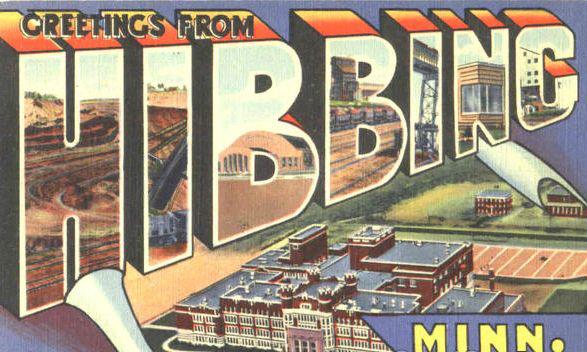
Greetings from Hibbing...

http://www.facebook.com/pages/Zimmerman-Furniture-and-Electric/373012116045074
Micka Electric Company
"Down that street, Fifth Avenue, is where Bob's uncle's shop is. Zimmerman's Furniture and Electric. They're finally going out of business, after almost twenty-five years. Bob's father used to make him do odd jobs around the shop. He and this other fellow sometimes would have to go out on a truck and repossess stuff. I think that's where Bob first started feeling sorry for poor people. These miners would come to town, find a house, buy furniture on the credit their job promised them, and then got laid off when a mind shut down. Then Bob and his friend would have to go over and take away all the stuff bought from Zimmerman's. Load it onto the truck and just leave. Bob hated that; used to dread it worse than anything." -- Echo Helstrom
1925 5th Avenue East, Hibbing, MN MN55746

http://www.facebook.com/pages/Zimmerman-Furniture-and-Electric/373012116045074
In 1941, Maurice and Paul Zimmerman purchased Micka Electric. Bob’s father, Abe, joined the company in 1947 and became the secretary/treasurer. As a teen, Bob worked in the store, making deliveries among other tasks.
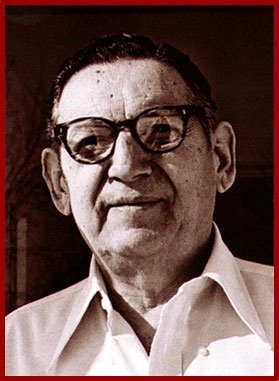
Paul Zimmerman (21 November 1905 - 17 March 1981)
Zigman/Zigmond Zimmerman 1876-1936 Odessa Ukraine arrived USA 1907 salesman shoe store dry goods
Anna (Greenstein / Kyrgyz?) Zimmerman 1879 (married Zigmond 1898) Kars Turkey? Odessa Ukraine arrived USA 1910
Maurice Zimmerman 1901-1981 Odessa Ukraine arrived USA 1910
Marian (Minnie) Zimmerman 1903-1996 Odessa Ukraine arrived USA 1910
Paul Zimmerman 1905 Odessa Ukraine arrived USA 1910 salesman Woolin Company then shop
Jack Zimmerman 1909 Odessa Ukraine arrived USA 1910 salesman grocery store.
Abe Zimmerman 1911-1968 born in Minnesota oil company (accountant) then shop
Max Zimmerman 1914-1996 born in Minnesota newspaper then shop
Beatty (Stone) Zimmerman 1915-2000
Abram H. Zimmerman, Bob’s father, was born in America, in Duluth, Minnesota, on October 19, 1911, into a family of four other children. If you believe the 1920 census details, Abe was the first of the family born in the USA. It’s more reasonable to believe the 1930 census, which says that Jack/Jake was born in the USA a year ahead of Abe.
Abe’s father—Bob’s paternal grandfather—is Zigman Zimmerman; his Hebrew name is Zisel. ‘I don’t know how they got a German name,’ said Dylan in the 1978 Playboy interview. Zigman was born in the thrusting Russian port of Odessa on Christmas Day 1875, and grew up in an atmosphere of active, vicious anti-Semitism. He seems to have run a shoe-making business before he fled Tsar Nicholas II’s pogroms in 1906. His brother Wolfe not only stayed behind but became a soldier in the Russian army.
Zigman arrived into the US in 1907, through Ellis Island to New York City, like so many others. From there he moved north-west until he arrived in Duluth. He worked as a peddler and sent for his family soon afterwards: by 1910 they had arrived. His wife Anna, formerly Chana Greenstein, born in Odessa on March 16, 1878, had given birth to three children before their emigration: Maurice, aged eight on arrival; Minnie, aged six; and Paul, four. They squeezed into a small apartment at 221/2 West 1st Street, where we presume the fourth child, Jake, was born (though the 1930 census says he was born in Wisconsin). Either way, before the next brother, Max, came along in 1914, the Zimmermans had moved to a house: 221 Lake Avenue North, Duluth. It is the only one of the houses Bob Dylan’s father lived in as a child and as a young adult that does not still exist.
Zigman was still a peddler when Abe was born, but by 1917, Zigman, now styling himself Zigmond H. Zimmerman, was a ‘solicitor’ working for the Prudential Life Insurance Co. He had obtained his naturalisation papers in 1916, but when the USA entered the Great War in 1918, the Zimmermans were forced to register as aliens. His wife Anna told the registrar she was a dressmaker, and that she spoke ‘a little English’. Zigman could speak it but not read it. By 1920 he was a dry goods salesman; later that decade he opened his shoe store but it failed, and by 1930 he was a salesman in someone else’s. All the same, in 1925 they moved again, to a two-storey house at 725 East 3rd Street.
By 1930 the oldest children, Maurice and Minnie had left home, Maurice first working on railway equipment repairs and then as a railway ticket inspector, while Minnie worked as a typist at the Duluth Herald newspaper. Still living at home, 24-year-old Paul had become packer, clerk and then salesman for the Manhattan Woollen Mills. Abe, who by the age of seven had been shining shoes and delivering newspapers, had graduated from the Central High School in 1929, was now 18 and working for the Standard Oil company, first as messenger boy and then as clerk. As Bob commented in 1978: ‘. . . my father never had time to go to college.’ When Abe, aged 22, married 18-year-old Beatty, whom he’d met on one of her weekend trips to Duluth, on June 10, 1934 at her parents’ house in Hibbing, his older brother Paul was best man. They honeymooned in Chicago and then came back to live in Duluth, with Abe’s mother and the three youngest brothers at 402 East 5th Street. Abe’s father, Zigman, had moved out and had an apartment in the Kinsley Apartments on West 1st Street. On July 6, 1936, he died of a heart attack in the street on 2nd Avenue West, in a heat wave, at the age of 60.
Abe duly became a senior manager at Standard Oil, and ran the company union; he and Beatty moved house several more times, finally escaping Abe’s siblings by moving into the upstairs of a duplex at 519 3rd Avenue East, high up on the hillside overlooking the port and Lake Superior. Their first child, Robert Allen Zimmerman, was born at the nearby St. Mary’s Hospital on May 24, 1941, weighing in at 7lb 13oz: ‘about as big as a good-sized lake trout,’ writes Dave Engel, in Just Like Bob Zimmerman’s Blues—Dylan in Minnesota. Robert Allen’s Hebrew name is Shabtai Zisel ben Avraham.
In 1947 the family moved to Hibbing, where Abe’s brothers Maurice and Paul had set up Micka Electric Co. the year Bob was born. Abe became an appliance salesman. When Bob’s little brother David was a bit older, Beatty started working as a clerk at Feldman’s clothing shop in the main street, Howard Street.
Abe contracted polio and suffered its debilitating physical consequences all through Bob’s childhood. ‘My father,’ Dylan told the French paper L’Expresse in 1978, ‘was a very active man, but he was stricken very early by an attack of polio. The illness put an end to all his dreams, I believe. He could hardly walk . . .’ But others reported that he walked with a slight limp, not always noticeable. His mother, Anna, who had also moved to Hibbing, and lived for some years with Bob’s Uncle Maurice, moved into a nursing home in St. Paul and died there of arteriosclerosis on April 20, 1955. She had outlived her husband by almost 20 years.
Her death certificate, with the information supplied by Uncle Maurice, confirmed that she’d been born in Odessa. Dylan contradicts this, writing in Chronicles Volume One of visiting her when she still lived in Duluth: she ‘had only one leg and had been a seamstress. She was a dark lady, smoked a pipe. . . . [Her] voice possessed a haunting accent— face always set in a half-despairing expression. . . . She’d come to America from Odessa. . . . [but] Originally she’d come from Turkey, sailed from Trabzon, a port town, across the Black Sea. . . . Her family was from Kagizman, a town in Turkey near the Armenian border, and the family name had been Kirghiz. My grandfather’s parents had also come from that area. . . . My grandmother’s ancestors had been from Constantinople.’
Abe Zimmerman had a heart attack in summer 1966. On June 5, 1968 he died of a second heart attack. He was buried in Duluth.
Gray, Michael. The Bob Dylan Encyclopedia. New York: Continuum, 2006, 0826469337, page 729f.
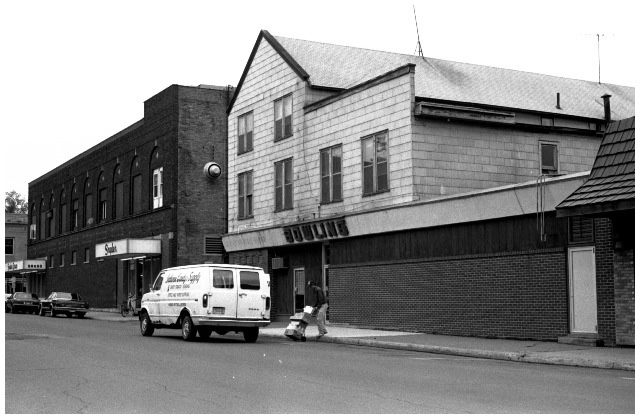
1925 5th Avenue East, Hibbing, MN MN55746, when later it was a bowling alley.
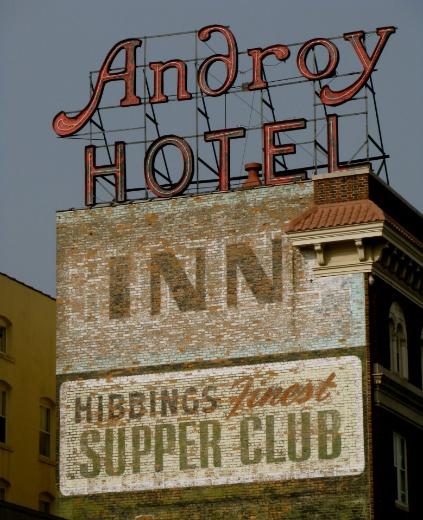
Bob Zimmerman's Bar Mitzvah celebration was at the Androy Hotel, 502 East Howard Street, Wednesday 22 May 1954.

East Howard Street with the Androy Hotel on the left.
Note the serious radio mast, upper left of the photograph. WMFG had studios in the Androy Hotel. In June 1942 WMFG dropped CBS and joined the NBC Radio Network. It remained with NBC until the early 1960s. By 1962 it was an independent station.
http://www.radio-locator.com/pats/WMFG_AM_CD.gif
The Androy Hotel, downtown Hibbing, Minnesota opened June 29, 1921. The name Androy came from the first names of two of the owners - Andrew Doran and Roy Quigley. Built and designed by the Oliver Mining Company, closed in 1977 and restored in 1994, it was placed on the National Register of Historic Buildings on 13 June 1985. The Androy apartments are open to people ages 55 and older and on a limited income. The apartments are modern and spacious and the building offers many opportunities for the residents to get together.
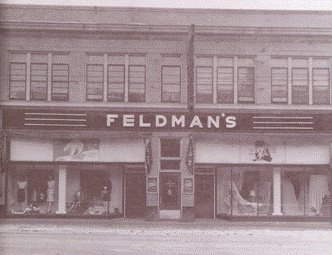
Feldman's Department Store, 405 East Howard Street, Hibbing, MN 55746
Nancy Peterson (she once competed against Bob Zimmerman at a talent show and beat him) worked with Beatty Zimmerman. “She recalls the day in ‘62 or ‘63 when the owner made this announcement: “This is R. W. Feldman. We have a celebrity in woman’s wear—Mr. Bob Die-lynn.”” Star Tribune, September 25, 2005, p. F8
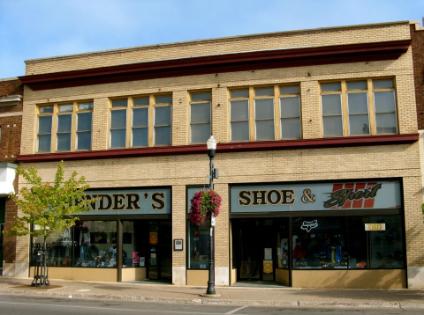
Feldman's Department Store had become Bender's Shoe & Sport in 2010 when this photograph was taken.

Feldman's Department Store view across Main Street.
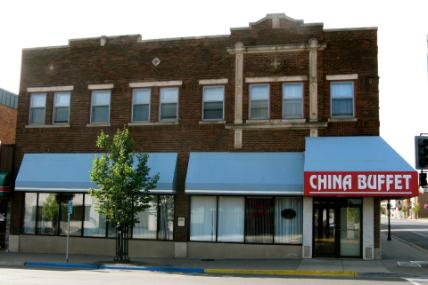
Stone's Clothing, 103 East Howard Street, Hibbing, MN 55746, run by Bob's grandmother Florence and his uncle Lewis. It became the China Buffet, pictured here in 2010.
Ben Stone had met Florence Edelstein in Hibbing and they married in 1911 and set up an earlier store at Stevenson Location, twelve miles west of Hibbing, supplying clothing to iron ore miners’ families. When that mine was used up, they opened this store in downtown Hibbing instead. After Ben died Florence lived in the Zimmerman house when Bob and David were growing up. Florence is the grandmother much praised in Chronicles Volume One.
"In 1995 in an Italian restaurant on New York City’s East Side two sisters were dining: Irene and Beatrice.
“But everyone calls me ‘Beatty,’” said the sister wearing the more elaborate necklace. Irene wore a double strand of white pearls.
It wasn’t until midway through our meal that “Beatty” revealed she was the former Beatrice Zimmerman, widow of Abe Zimmerman and mother of Robert Allen Zimmerman – otherwise known as Bob Dylan.
We didn’t talk about Dylan, though. Beatty was far more excited about discussing her talented grandsons Jakob and Seth, and both sisters were more interested in talking about their own lives: their grandfather’s chain of movie theaters, the clothing store in Hibbing, Minnesota, owned by their parents Florence and Ben (“The customers were mostly miners and their families, so it wasn’t fancy,” Beatty said) and how Beatrice had been widowed twice, first by Abe, who died of a heart attack in 1968, and Joe Rutman, who died in 1985." -- Charles Ferruzza
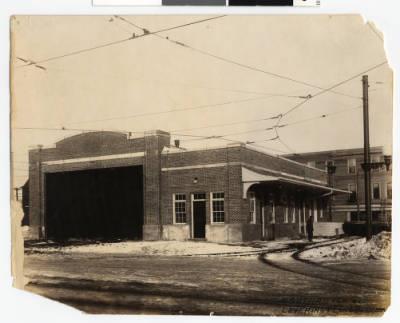
The 1921 Trolley Station, 531 East Howard Street Hibbing, MN 55746, became Shell Tire, Horn Auto Electric, and Furlong Gas Station which became Zimmy's Bar & Restaurant.
The Trolley Station was driven out of business when buses proved more efficient. From the 1930s through the early 1980s, the former trolley building housed this gas station and tire shop. It was finally converted into a restaurant in 1982. Today the structure is home to Zimmy's a restaurant and bar that celebrates two things: Hibbing and Bob Zimmerman or Zimmy. Inside the walls are covered with memorabilia and old photos that tell the story of the area's history. The original brick archways and platform overhang remain in the restaurant space. Large glass windows occupy the space where entrance doors once opened for trolley cars.
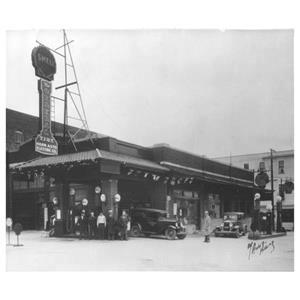
Shell Tire, Horn Auto Electric, and Furlong Gas Station, 531 East Howard Street Hibbing, MN 55746.
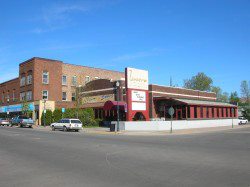
Zimmy's Bar & Restaurant, 531 East Howard Street Hibbing, MN 55746.
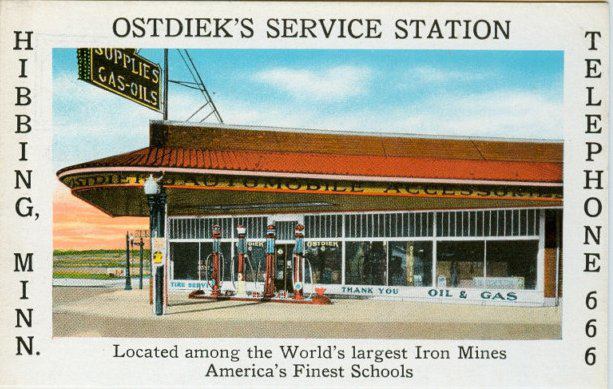
Ostdiek's Service Station
Located among the World's largest Iron Mines
America's Finest Schools
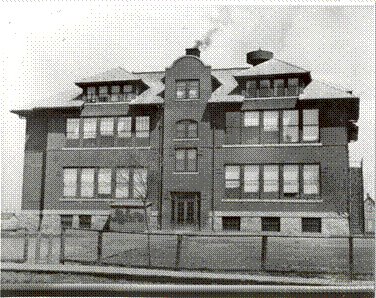
Alice School, 2300 2nd Avenue East, for grade one. It was torn down to become a parking lot, with part of the land used for a playground.
Grade
First 1947-1948 6
Second 1948-1949 7
Third 1949-1950 8
Fourth 1950-1951 9
Fifth 1951-1952 10
Sixth 1952-1953 11
Seventh 1953-1954 12
Eighth 1954-1955 13
Ninth 1955-1956 14
Tenth 1956-1957 15
Eleventh 1957-1958 16
Twelfth 1958-1959 17
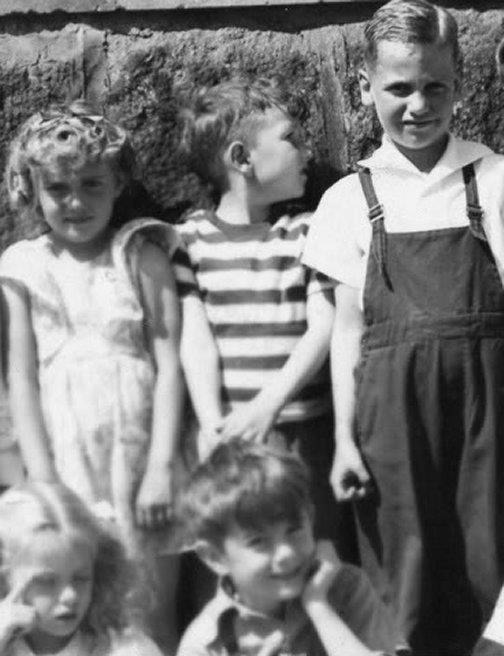
Bob Zimmerman in grade one at Alice School.

(circa) 1951?
Racing Clinic for Hibbing Junior Chamber of Commerce
Prospective soapbox derby racer, Robert Zimmerman (2nd on right) wearing a billed-cap, lays hands on a steering wheel for his derby car. Did the racer get built? Did he race it? Is this the earliest known photograph of Bob in a hat?
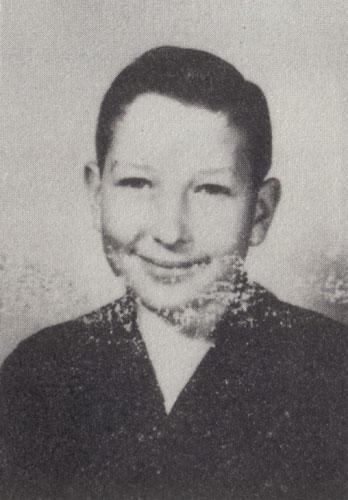
Bob Zimmerman 1952.
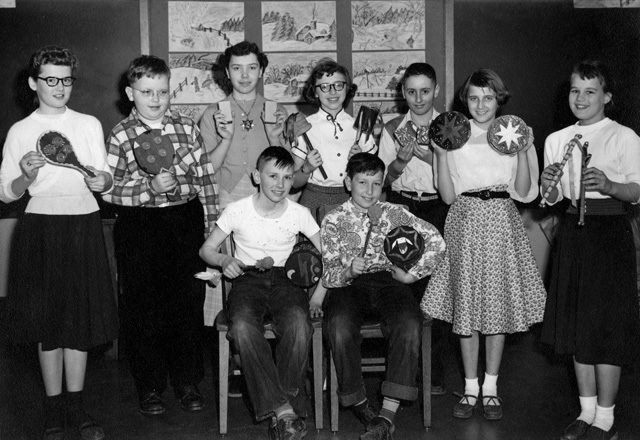
Bob Zimmerman, 12 years old, 6th grade, Washington School, 1953.
Or is it? Some say Bob Zimmerman had Kindergarten in Duluth at the Nettleton Elementary School— 108 East 6th Street, Duluth, MN 55805 (1st Avenue East and Sixth Street). Then in Hibbing he attended Grade 1 at the Alice School and then Grade 2-12 at Hibbing High School.
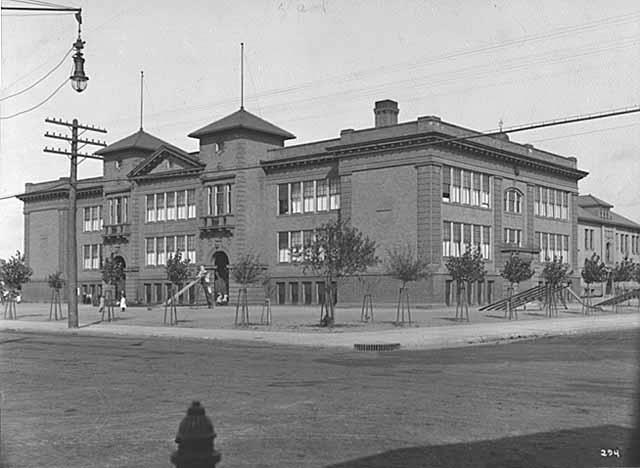
Washington School, Hibbing.
Not all sources suggest Bob Zimmerman attended the Washington School. This is the original building, a new building, Washington Elementary School, was built in 1956.
MS2.9 HB5.2 p1 88266
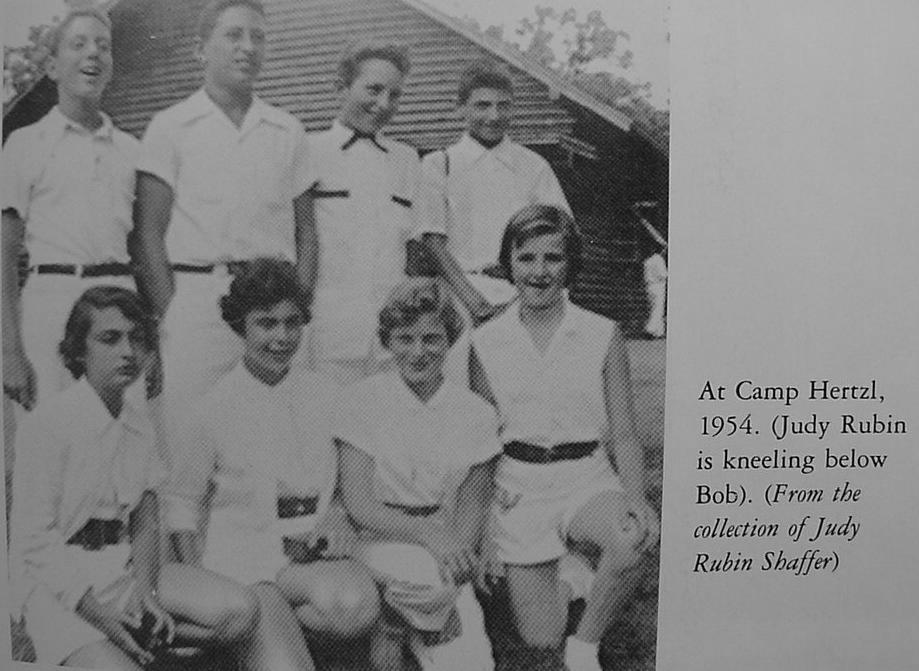
Bob Zimmerman and Judy Rubia at Camp Herzl, 1954.
http://www.jewishvirtuallibrary.org/jsource/biography/Herzl.html
In its first brochure, Herzl Camp’s aim was “to bring a child closer to Jewish life and the Jewish people… to prepare the child to absorb the content and values of modern Palestine… to enlist the child’s interest and help in building of the Jewish national homeland.” In its first year, camp sessions were offered for children ages 12 and above. From the beginning, athletics, waterfront activities, recreation, music, dancing, cultural and creative events were all components of the Herzl experience.
The site on Devil’s Lake in Webster, Wisconsin had The Log Cabin Inn, ironically a “gentiles only” establishment, which became the home of Herzl Camp. The farmhouse was converted into a dining hall and kitchen. One of the larger fishing cabins became an activities building and a minimum of additional plumbing was added to make the site accessible to campers.
368 miles southeast of Hibbing almost as far as Madison, Wisconsin.
"Once there was Judy And she said Hi to me When no one else Could take the Time...But she broke me Up When she didn't Write back and I died for a year - Seela And then there was Ione Who wore a Ring on her Left hand...my mind went Insane Every time I saw her - Seela Then there was Carol Who had tits Like headlights On a fire engine And a face like Helen ... she'd rape my feelings ... Then there was Barbara Her parents liked me And I liked them But I loved Barbara more...Then came another Judy She had a long Pony Tail And wanted Some day To be an Actress ... Now there's Judy again And my Circe starts Over ... I don't fit in anymore I'm Lost And my trouble is I know it"
http://www.christies.com/lotfinder/LargeImage.aspx?image=%2Flotfinderimages%2Fd45988%2Fd4598803x.jpg
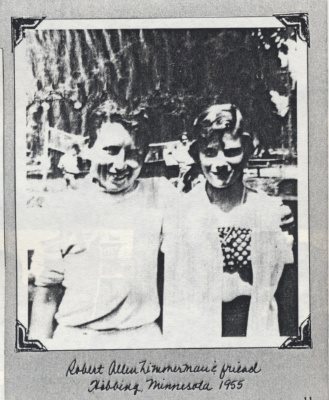
Bob Zimmerman 1955.
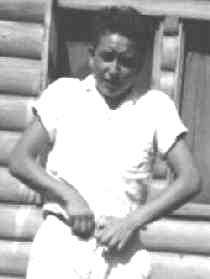
Bob Zimmerman, Camp Herzl, 1956.
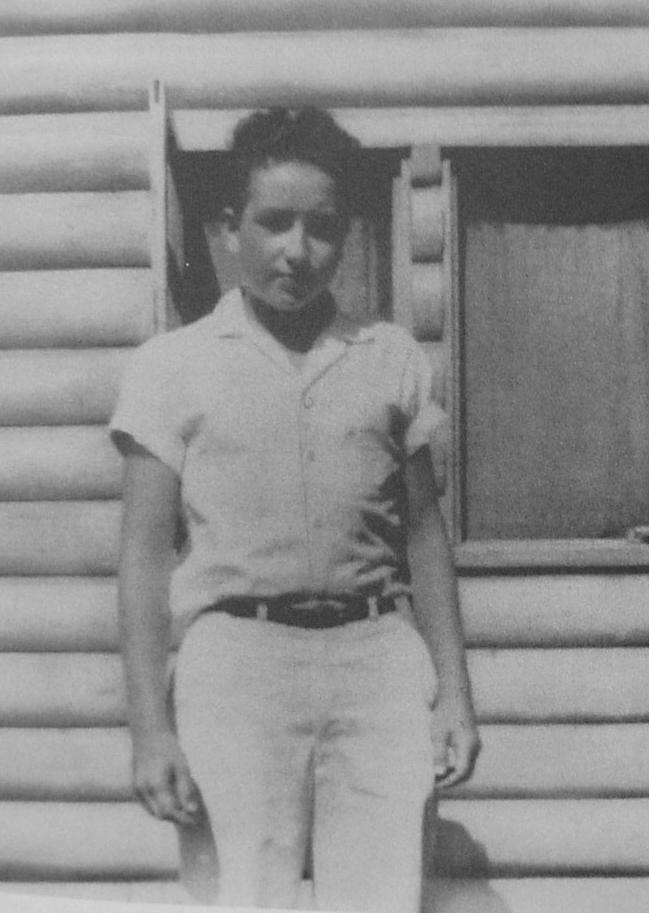
Bob Zimmerman, Camp Herzl, 1956.
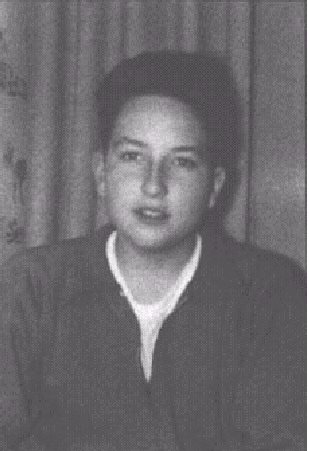
Bob Zimmerman, 1956.

Robert Zimmerman with Dale Boutang "the best rider in Hibbing, a cowboy on wheels and a seasoned weight-lifter" and Dale Boutang's Harley 74, 1956.
Photograph taken by Beatty Zimmerman, Bob's mother. (This photograph is seen often on the Internet with the 1956 removed and a modern large 1957 added.)
"Waiting in the house was Raatsi on the bed/'I'm gonna pin Boutang's arm,' Melvin, then said/A noise outside! and Raatsi's face had gleam/Ah ha, it was Dale coming on his machine/Raatsi came to the door and opened it wide/Dale Boutang then stepped inside/Roll up that sleeve and let's get to work,'/Said Melvin Raatsi with a great big smirk/'I'm gonna arm-wrestle you to death said Mel the boy/'Shut up,' said Boutang,' I'll take care of you like a little toy..."
"We'd pull into the Hibbing Rootbeer stand on Bob's motorcycle when the weather was warm. One time, just outside my house on the old service road, he tried to teach me to ride it. He told me all about the controls, started it up and set me on board. Only trouble was my feet weren't long enough to reach the ground. But I didn't realize that until I'd already taken off. I made about twenty yards in first gear and thought I'd better practice stopping before I went any further, so I tried to put on the brakes; but something went wrong and the engine started revving and I hit a post or a tree and went head over heels. The motorcycle fell over and the rear wheel went crazy with sparks flying and gravel...Bob stood there with his mouth open and his eyes real big, not believing it." -- Echo Helstrom
Photograph courtesy of Leroy Hoikkala and Sharon Ness. This photograph was taken by Beatty Zimmerman in 1956 in front of Bob's home. The photograph was a part of Tangled up in Ore a Bob Dylan exhibition at Ironworld. t052008 --- Clint Austin --- austinIRON0522c3.
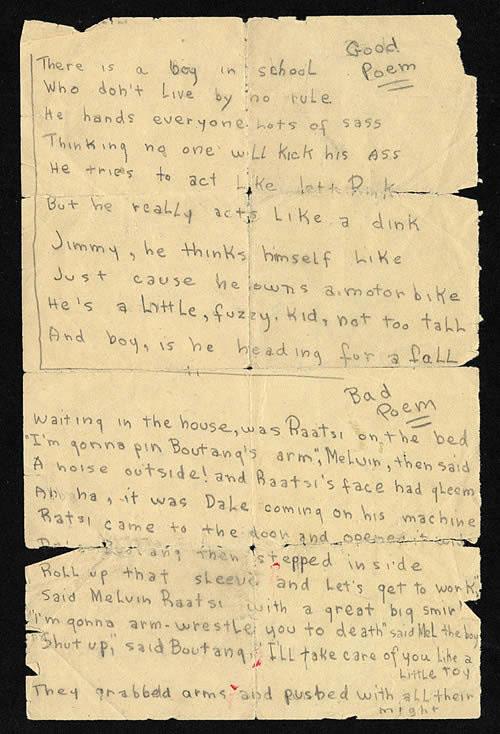
"There is a boy in school/Who don't live by no rule/He hands everyone lots of sass/Thinking no one will kick his ass/He tries to act like Lett Rink/But he really acts like a dink/Jimmy, he thinks himself like/Just cause he owns a motor bike/He's a little, fuzzy, kid, not too tall/And boy, is he heading for a fall."
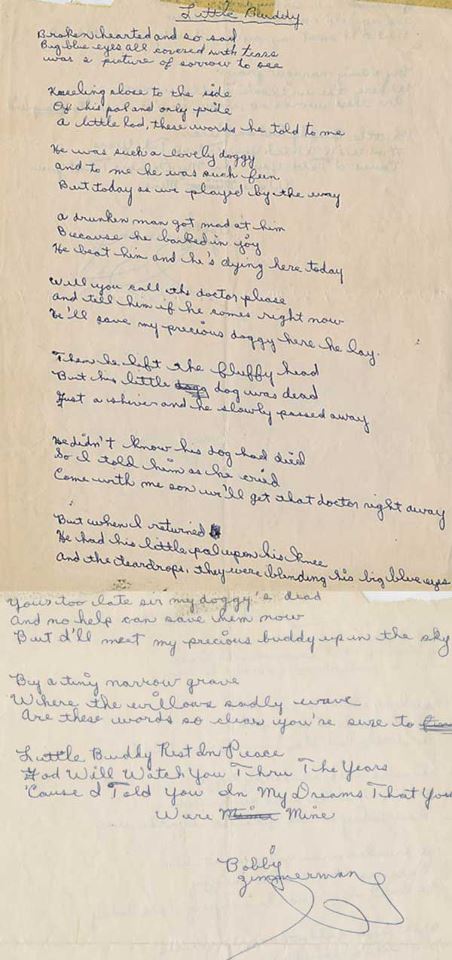
Little Buddy
A hand-written poem believed at the time to be by a teenaged Bob Dylan and signed Bobby Zimmerman is seen in this undated handout photo from Christie's Auction House 19 May 2009.
It was at Herzl Camp when he 'wrote' a poem in 1957 and submitted it to The Herzl Herald, the camp paper. 'Little Buddy' turned out to be a Hank Snow song. Uh-oh! ;-)
Hank Snow's version of “Little Buddy”
Broken hearted and so sad, golden curls all wet with tears,
'Twas a picture of sorrow to see.
Kneeling close to the side of his pal and only pride,
A little lad these words he told me.
And...
Bobby Zimmerman's version of “Little Buddy”
Broken hearted and so sad
Big blue eyes all covered with tears
Was a picture of sorrow to see
Kneeling close to the side
Of his pal and only pride
A little lad, these words he told me
http://www.reuters.com/article/2009/05/20/us-dylan-poem-odd-idUSTRE54J64I20090520
"Little Buddy" appears to be the second known transcription Bob made of a Hank Snow song as a young man. The first was "The Drunkard's Son," a lugubrious tune with a sentiment closer to Victorian times than 19 and 47, which is when Snow originally released it on the Bluebird label. "The Drunkard's Son" was re-released in April 1950 on the RCA Victor label, and is very probably another 78 that Bobby Zimmerman owned.
"In the summer of 1957, I was a camp counselor at Herzl. On the first day, we welcomed the campers who arrived almost exclusively by bus or car. An unusual event was the arrival of several campers on two motorcycles from Hibbing, Minnesota. One of the motorcycle campers was Robert Zimmerman, guitar slung over his shoulder, and as I recollect, the other was Louis Kemp, who wrote a recent article in Moment about his celebrity Seder with Marlon Brando. Already known as a rebel, rumor had it that Robert Zimmerman had received his motorcycle as a parental gift for agreeing to attend Herzl camp!
Robert, joined occasionally by a few other campers, spent most of his time singing and playing his guitar and not participating in most organized camp activies. According to my recollection it was especially hard to get him to participate in athletics. Despite being a teenager and camp rebel, he was an intelligent and friendly kid who was well-liked by his fellow campers and counselors. He remained friendly with my brother David, who also attended camp that summer, and occasionally through the years, stopped in at his bookstore, The Hungry Mind, on Grand Avenue in St. Paul, Minnesota. My enduring memory of Bob Dylan from that summer is of a young man sitting on the roof of one of the cabins, strumming on a guitar and singing loudly with his characteristic high-pitched nasal twang."
-- Joel Unowsky, Gaithersburg
http://www.shmoozenet.com/yudel/mtarchives/cat_bob_dylan_tangled_up_in_jews.html
Apparently, Abe had a different impression of son Bob's final camp year (1957) at Herzl. Abe told Robert Shelton: "When he was sixteen, he took over the camp. He was leader of the camp, the Rabbi told me." Perhaps, the Rabbi was saying one thing, but Abe was hearing something entirely different.

In 1993 the Dylan fanzine Isis had published the text of a ‘poem’, written in Bob Zimmerman’s own hand, the original of which had been posted by an unnamed hand to the fanzine’s editor, Derek Barker.
This ‘poem’ was a mournful tale narrated as if by a scared boy in hiding to avoid being beaten by his drunkard father. Five issues later, reader John Roberts wrote in to say that he had found an album on the cheap RCA Camden label, dated 1962, titled The One and Only Hank Snow, and risked wasting his 75p on this unknown music because of its inclusion of a song, credited to Hank Snow's original name, Clarence E. Snow, titled ‘The Drunkard’s Son’ and handily summarised in the sleeve notes as ‘the mournful tale of a scared boy in hiding to avoid being beaten by his drunkard father.’ Yes indeed.
As Roberts nicely observes, if the ‘Zimmerman Transcript’ is authentic, which now seems established, it is a ‘truly unique document—the first evidence we have of Bob’s plagiarism!’ Ironically, it’s an example of Snow’s plagiarism, too. Look back at the Jimmie Rodgers catalogue, and there, recorded in Atlanta in 1929, is Rodgers’ ‘A Drunkard’s Child’.
Perhaps it was still in Hank Snow’s repertoire when Dylan, in his youth, was in the audience for his show at the Veterans Memorial Building, Hibbing. Dylan mentions this in Chronicles Volume One—and a few pages later writes that before he encountered Woody Guthrie, when Hank Williams had been his ‘favorite songwriter’, Hank Snow had been ‘a close second’.

Bob Zimmerman, Camp Herzl, 1957.
Larry Kegan (dark jacket), Jerry Waldman (singing), Bob Zimmerman, Louie Kemp, David Unowsky.
A recording of Bob Zimmerman was made earlier than this in a custom recording facility in the Terlinde Music Shop in St. Paul, Minnesota, on Christmas Eve, 1956! He and two friends from summer camp, Larry Kegan and Howard Rutman, are all aged 15; Bob is on piano and shares vocals with the others as they race through incomplete versions of eight songs in little more than nine minutes.
The songs are: ‘Let the Good Times Roll’ (an R&B million-selling instant classic that year by Shirley & Lee: a record that’s been giving pleasure ever since), ‘Boppin’ the Blues’ (a small hit by Carl Perkins, also 1956), an unidentified song with almost no lyric beyond the phrase ‘Won’t you be my girl?’, ‘Lawdy Miss Clawdy’ (Lloyd Price’s first record and first hit, and one of the earliest black R&B records to cross over into the white markets and so to help shape rock’n’roll), ‘Ready Teddy’ (a 1956 Little Richard hit), ‘Confidential’ (a hit by Sonny Knight—a song Dylan would revisit on the Basement Tapes in 1967, live in Helsinki on May 30, 1989 and in the first two of his unusual four-set gig at Toad’s Place, New Haven, CT, on January 12, 1990), ‘In the Still of the Night’ (an R&B ballad by the Five Satins, also a hit the first time around in 1956, and often named as one of the most beautiful such records ever made) and ‘Earth Angel’ (a 2- million-seller by the Penguins from 1954). Clearly, one of Bob’s main musical enthusiasms at the time was for doo-wop.
In June 1986, with Tom Petty & The Heartbreakers, the night after he’d played Minneapolis, he performed ‘Let the Good Times Roll’ in East Troy, Wisconsin, introducing it thus: ‘This is pretty old. I used to play this when I was twelve years old. And this is a song that got me booed off my first stages. It was a different band, but it sort of went the same way.’
"When Bob traveled down to St. Paul he stayed with the parents of his new friends. Howard Rutman's family had a piano in their basement. "He would bang the shit out of the piano," says Rutman. "He would get up there and dance on the damn thing.... Ah God, he just ruined it." They went driving and parked in front of the house to talk late into the night, whiling away time until their favorite radio program, Lucretia the Werewolf, came on. "We were a real close-knit group," says Rutman, who recalls discussing big subjects like war and man's inhumanity to man. Still, Bob stayed very much to himself. "A great deal he kept to himself because he was a very, very inward type," says Rutman. "He's always been that way." Music was Bob's preferred form of expression. In everyday life he was a quiet kid. When he sang and played music he became somebody else altogether, a complete extrovert. He also lost himself in films."
Sounes, Howard. Down the Highway: The Life of Bob Dylan. New York: Grove Press, 2001, 0802116868, pages 46-47
Howard Rutman’s father Harvey was first cousin to, and best friend of, the Joseph Rutman who eventually married Beatty Zimmerman, many many years after their first spouses had died. So Howard and Bob, decades down the road from their teenage comradeship, have ended up related by marriage.
"Louis Kemp [1941? - ] has been an almost life-long friend of Bob Dylan’s, since first meeting him at a Jewish co-educational summer camp, Camp Herzl, which they both attended annually in the mid-1950s.
Louis inherited the long-established family business of A. Kemp Fisheries Inc., based at 4832 West Superior Street, Duluth, which had been founded in 1930 by Aron and Abe Kemp, who started taking Lake Superior fish to the Chicago markets. It’s a company whose relationship with Swedish and Finnish fishermen goes back a long way. There’s a statue to the memory of these men on the shore at Green Point, just north of Thunder Bay, erected in 1990 on the 100th anniversary of their trading. ‘The Finns of Green Point would sell their fish to Kemp Fisheries located in Duluth,’ noted Mike Roinila in a 1997 article, ‘and over the years a trusting and lasting association was formed between the fishermen and the American seller. . . . [And] when an unexpected thaw one winter left the fishermen with no way to keep their harvest frozen, Kemp Fisheries rented out the Port Arthur arena to freeze the fish and preserve them for market.’
Today’s marine traffic is mostly boats used by the owners of the shoreline cottages—Green Point’s last commercial fisherman retired in 1990—but A. Kemp Fisheries survived. Louis Kemp took over in 1967, expanded into Alaska and re-named it Louis Kemp Fisheries in 1986, and has since seen it taken over and moved. It was taken over first by Tyson Seafood (1992) and then by Bumble Bee (1999). Bumble Bee is a subsidiary of International Home Foods, which was itself taken over in 2000 by ConAgra Foods, which moved production from Duluth to Motley, Minnesota. Its official address is now in Downer’s Grove, Illinois. They mostly turn North Pacific white fish pulp into imitation shellfish (surimi), and Louis Kemp has become a registered trade mark; you can buy Louis Kemp Crab Delights in Chunk Style, Flake Style, Leg Style or Easy Shreds; Lobster Delights Salad Style, and Scallop Delights Bay Style.
Kemp was among the entourage on Dylan and The Band’s 1974 ‘comeback’ tour, and with Barry Imhoff was tour manager on the Rolling Thunder Revues—on which, SAM SHEPARD noted, he showed ‘a remarkable gift for being able to speak words without moving his mouth,’ and also ‘managed to buy a 1934 Packard coupe´’. At The Band’s so-called ‘Farewell Concert’ dinner in San Francisco on November 25, 1976, Kemp Fisheries supplied the smoked salmon. It was even through his fisheries that he became a friend of Marlon Brando’s, and duly brought Brando and Dylan together for a very different kind of meal. As his own account of 2005 explains it:
‘I got to know Marlon about thirty years ago through a mutual friend. His son, Christian, came to work for me in fisheries I owned in Alaska and Minnesota. . . . One of my visits to Los Angeles coincided with Passover. I was not yet Orthodox and made plans to attend a seder at a local synagogue with my sister. Marlon called me that very day and invited me out to dinner. I graciously declined, explaining that it was Passover and I was going to a seder. Marlon became audibly excited over the phone and said, ‘‘Passover— I’ve always wanted to attend a seder. Can I come with?’’ He had made me an offer I couldn’t refuse. . . . A short time later, Marlon called me back and asked if he could bring a friend. I said, yes, by all means. . . . I called the shul again. They were a little less patient this time and begrudgingly told me that they could squeeze one more person in, but this was absolutely the last one as they were now officially sold out.
‘Still later that day, I received a phone call from a childhood friend of mine who had become a well-known singer/songwriter. . . . he asked if he and his wife could go along. The shul was unhappy . . . but somehow I softened the heart of the receptionist and she agreed to let my people go—to the seder.
‘I will never forget the sight of our table in the synagogue, Marlon Brando was to my left and David Kemper sitting next to him was his guest. This was during the height of Marlon’s involvement with Native American causes and he had brought with him noted Indian activist Dennis Banks of Wounded Knee fame. Banks was dressed in full Indian regalia: buckskin tassles on his clothes and long braids hanging down from a headband, which sported a feather. My childhood friend Bob Dylan sat to my right, joined by his wife, my sister Sharon, and other friends. . . . After about forty-five minutes, the rabbi figured out that ours was not your average seder table. ‘‘Mr. Brando, would you please do us the honor of reading the next passage from the hagaddah,’’ he said. Marlon said, ‘‘It would be my pleasure.’’ ‘He smiled broadly, stood up and delivered the passage from the hagaddah as if he were reading Shakespeare on Broadway. Mouths fell open and eyes focused on the speaker with an intensity any rabbi would covet. When he was done I think people actually paused, wondering if they should applaud.
‘Somewhat later the rabbi approached another member of our table. ‘‘Mr. Dylan, would you do us the honor of singing us a song?’’ The rabbi pulled out an acoustic guitar. . . . Much to my surprise Bob said yes and performed an impromptu rendition of ‘‘Blowin’ in the Wind’’ to the stunned shul of about 300 seder guests. . . . Needless to say, everyone was both shocked and thrilled by this unusual Hollywood-style Passover miracle.’
But Louis Kemp seems always to have remained important at least in part because of his preshowbiz credentials with Dylan. ROBERT SHELTON reported that it was with Kemp, in September 1974, that Dylan ‘revisited Highway 61, touring the North Country . . . [and] showing his oldest children where he’d grown up’."
Gray, Michael. The Bob Dylan Encyclopedia. New York: Continuum, 2006, 0826469337, page 375f.
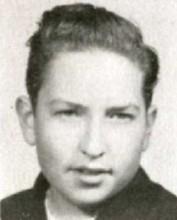
Bob Zimmerman 1957.
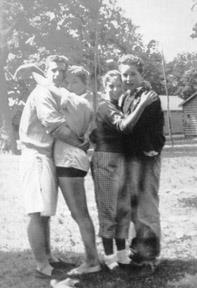
Larry Kegan on left, Bob Zimmerman on the right, Camp Herzl, 1957.

Bob Zimmerman, Larry Kegan, 1957.

Rosanne Tenenbaum and Bob Zimmerman, Camp Herzl, August 1957.
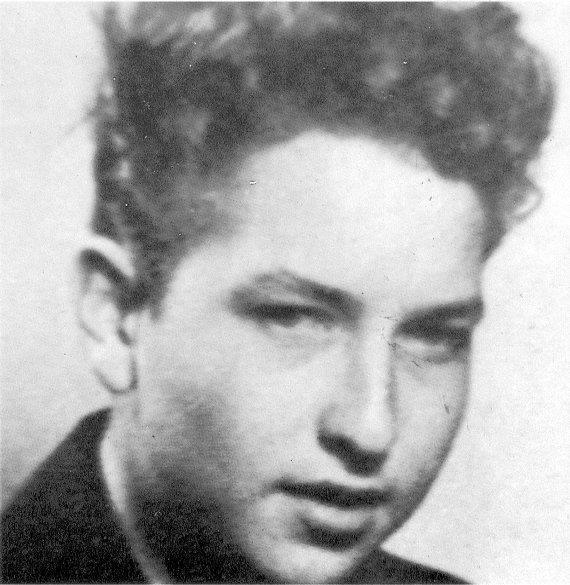
Bob Zimmerman 1957-58.
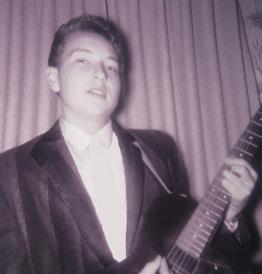
Hibbing High School, September 1958.
This photograph was taken by Bob’s mother, Beatty, in Hibbing, and dated September 1958, a 17-year-old Bob is shown with his second electric guitar. Most more youthful rock’n’roll moments seem to have him on piano.We can say for certain from the photograph that this electric instrument is not a Fender (it’s sometimes been said that he owned a Fender in Hibbing)—and we can say that it isn’t his first electric, a $39 turquoise Silvertone bought mail-order from Sears Roebuck, but must be his second, a new Supro Ozark (a guitar Jimi Hendrix also had as a lad), bought at Mr. Hautala’s store in Hibbing at a knock-down $60 because Bob and his friend John Bucklen each bought one at the same time: and September 1958 is too late for him to be just acquiring the Silvertone. This is the picture of a boy who’s proud of having upgraded. In Minneapolis, Bob swaps his electric for an acoustic. From there he emerges as an acoustic playing folkie, and remains so until July 1965.
Gray, Michael. The Bob Dylan Encyclopedia. New York: Continuum, 2006, 0826469337, page 285.
http://tiny.cc/ltcabw
"John Bucklen soon became the closest friend Bob had in Hibbing. He was six months younger than Bob, and a year below him in high school. His father, a disabled mine worker, was an accomplished musician who enjoyed a wide variety of music. His sister, Ruth, had a record player. The boys began to spend a lot of time at each other's houses, although Bucklen got the impression Abe may not have approved of the friendship as he seemed to frown upon most of Bob's friends.
"During jam sessions with Bucklen, Bob mixed up snatches of pop tunes with song ideas of his own. The first song Bob invented was about actress Brigitte Bardot. Bob played his parents' white baby grand, and Bucklen accompanied him on guitar. Bucklen had a tape recorder and they recorded the sessions, interjecting juvenile humor and bits of hipster slang, as if making their own radio show. When they got tired of the game, they headed over to Crippa's where they could listen to records in the sound booths. On visits to see his relatives in Duluth and the Twin Cities Bob was able to visit bigger stores that stocked the race records he liked."
Sounes, Howard. Down the Highway: The Life of Bob Dylan. New York: Grove Press, 2001, page 44f.
====================
John Bucklen tape (1958)
The Home of Bob Dylan
Hibbing, Minnesota
1958
1. Hey Little Richard
2. Buzz, Buzz, Buzz (Gray/Byrd)
3. Jenny, Jenny (Johnson/Penniman/Crewe)
4. Blue Moon (Lorenz Hart/Richard Rogers)
Zimmerman:
This is Little Richard...(fakes wild crowd noises into microphone) ...Little Richard's got a lot of expression.
Bucklen:
You think singing is just jumping around and screaming?
Zimmerman:
You gotta have some kind of expression.
Bucklen:
Johnny Cash has got expression.
Zimmerman:
There's no expression. (sings in boring, slow and monotone voice): "I met her at a dance St. Paul Minnesota... I walk the line, because you're mine, because you're mine..."
Bucklen:
You're doing it wrong, you're just -
<end of broadcast tape segment>
Bucklen:
What's the best kind of music?
Zimmerman:
Rhythm and Blues.
Bucklen:
State your reason in no less that twenty-five minutes.
Zimmerman:
Ah, Rhythm and Blues you see is something that you really can't quite explain see. When you hear a song Rhythm and Blues - when you hear it's a good Rhythm and Blues song, chills go up your spine...
Bucklen:
Whoa-o-o!
Zimmerman:
When you hear a song like that. But when you hear a song like Johnny Cash, whadaya wanna do? You wanna leave, you wanna, you - when you hear a song like some good Rhythm and Blues song you wanna cry when you hear one of those songs.
<end of broadcast tape segment>
after Jenny Take A Ride:
Bucklen:
Listen, man you gotta to do it a little bit faster than that. I mean I'm trying to cut a fast record here, that's right ...
Zimmerman:
I can't help it.
Bucklen:
I know it ain't slow but it's not fast enough too.
Zimmerman:
Whadaya talking about, man, that's plenty fast!
Bucklen:
No, it isn't.
Zimmerman:
That'll sell - that'll sell (clicks fingers) just like that - ten million in a week! Weeeeeeeeeeeeeeeeeeeeeeeeeeeelllll! (plays first note on piano)
Bucklen:
What are you trying to do man, coming in with 'weeelll' like that? I mean ....
Zimmerman:
Well that's for the new song and I'm starting another one.
<end of broadcast tape segment>
after Blue Moon:
Zimmerman:
Yeah, ah, Ricky Nelson. Now Ricky Nelson's another one of these guys. See Ricky Nelson, Ricky Nelson -
Bucklen:
Ricky Nelson is out of the question.
Zimmerman:
Well he copies Elvis Presley! Yeaah, it's perfectly...
Bucklen:
He can't do like Elvis Presley.
Zimmerman:
Well he can't sing at all, Ricky Nelson. So we may as well forget him. See I mean - I mean, ya know when you hear music like The Diamonds. For instance The Diamonds are really cool, they're out on the street really popular, really record [?], you know. So they're popular big stars but where, where do they get all the songs? You know they get all their songs, they get all their songs from little groups. They copy all the little groups. Same thing with Elvis Presley. Elvis Presley, who did he copy? He copied Clyde McPhatter, he copied Little Richard, ...
Bucklen:
Wait a minute, wait a minute!
Zimmerman:
...he copied the Drifters
Bucklen:
Wait a minute, name, name, name four songs that Elvis Presley's copied from those, from those little groups.
Zimmerman:
He copied all the Richard songs -
Bucklen:
Like what? -
Zimmerman:
"Rip It Up", "Long Tall Sally", "Ready Teddy", err ... what's the other one...
Bucklen:
"Money Honey"?
Zimmerman:
No, "Money Honey" he copied from Clyde McPhatter. He copied "I Was The One " - he copied that from the Coasters. He copied, ahhh, "I Got A Woman" from Ray Charles.
Bucklen:
Er, listen that song was written for him.
-----------------------------------------------
Jams/Rehearsals – mostly at the Zimmerman house (1957):
(1) With John Bucklen:
(a) Improvisations to Gene Vincent’s record:
At Crippa's Howard Street music store, Bob grabs a Gene Vincent album. At Feldman's clothing store, they buy blue caps with little visors, like Vincent's boys wear in the movies. Back in Bob's room, they spin the record while John pretends to bang a guitar and Bob takes the part of the rockabilly rebel: Be bop a lula she's ma bay-ba...be bop a lula don't mean may-ba.
(b) Recordings with piano backing:
With John's Sears Silvertone tape recorder on Bob's piano, they attempt songs; Bob pounds chords and John kind of tinkles along on the higher keys. They mimic Stan Freberg, a popular comic who has parodied Elvis, Belafonte and "Sh-Boom." When they ad lib, the sessions can get raunchy.
You ain't nothin' but a horehound.
A couple of kids smoking, coughing, joking, laughing, screaming.
"The Diarrhea Blues."
Bob’s and John's voices are nearly indistinguishable.
Next, it's John, singing Buddy Holly's "Peggy Sue."
Briefly, lyrics fall into place, backed by Bob's four chord progression, now sounding vaguely like "Earth Angel" or something by the Turbins or Crests.
Bob's voice is clear and almost sweet: I wanna rock-I wanna cry – I wanna rock-I wanna cry-
Bob narrates, like Gatemouth. Jive talk. Blues. Dig the rebop, daddy-O.
With Bucklen: Daddy Cool, Daddy Cool ... cool Daddy ... Daddy who? Daddy Cool!
(A few lines to Barbara Hewitt who’d dumped Bob before anything had gotten started): I got a girl, she lives on a hill, she's my baby and I love her still. Barbara won't you come back to me? I need your lovin'.
When he hammers into Little Richard, his voice becomes harsh and strained. Don't I sound just like Jerry Lee Lewis?
(c) Recordings w/guitar backing:
In Bucklen's bedroom, they record with acoustic guitar backing instead of piano.
Long Tall Sally. Tutti Frutti.
Jenny Jenny, Whooo. Jenny Jenny.
Bob sings about his friend, LeRoy Hoikkala: Lee Roy—LEE Roy
Engel, Dave. Dylan in Minnesota: Just Like Bob Zimmerman's Blues. Rudolph, Wisconsin: River City Memoirs-Mesabi, 1997.page 153f.
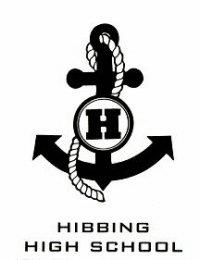

Hibbing High School, 800 East 21st Street, Hibbing, MN 55746.
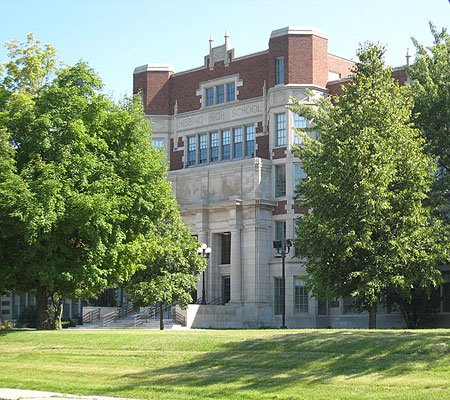
Hibbing High School
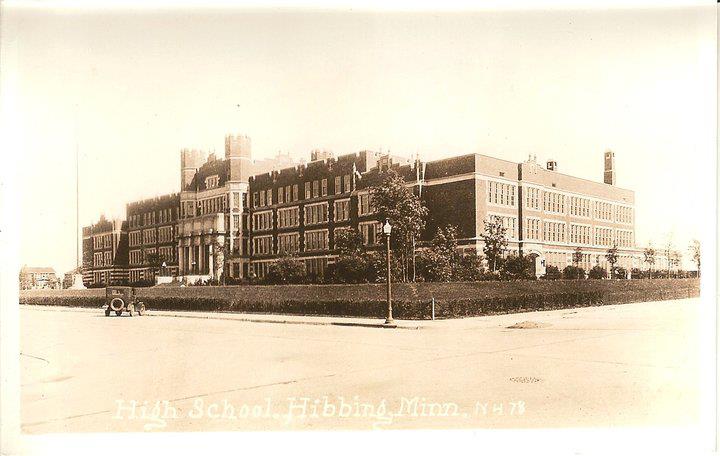
Hibbing High School

Hibbing High School
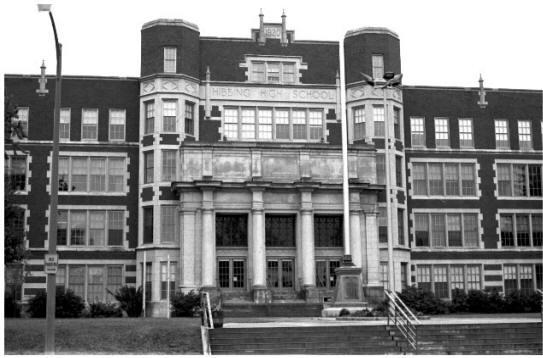
Hibbing High School Front Entrance

Hibbing High School Hall

Well, I rung the fallout shelter bell
And I leaned my head and I gave a yell
“Give me a string bean, I’m a hungry man”
A shotgun fired and away I ran
I don’t blame them too much though, I know I look funny
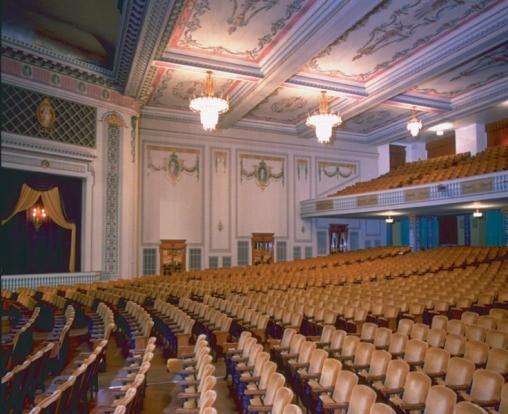
Hibbing High School Auditorium
The 1800 seat auditorium is modeled after the Capitol Theater at 1645 Broadway just north of Times Square in New York City.
"I talked with Mr. Peterson [Pederson], the principal, when he was in the nursing home and asked him if it was true that he had pulled the curtain on that performance...he said yes it was...he "was not going to allow obscenity like that to be displayed on a stage that Guy Lombardo had performed on!" -- Jill Ross
This is the auditorium where young Bob Zimmerman pounded out a Little Richard song the principal closed the curtains on him. Bob Kearney, the school's maintenance supervisor, recalls Bob Zimmerman's performance at a talent show in 1956. "I think the kids were ready for Dylan, but the teachers and the administrators weren't," he says. Bob had combed his hair in a Little Richard pompadour, and he shouted his way through a selection that included Jenny, Jenny, Jenny and Rock and Roll Is Here to Stay.
This school concert was on the afternoon of February 6, 1958, this time with everyone amplified, and extra mikes for his piano and vocals — and though they were on the bill, as a ‘local rock’n’roll instrumental group’, they were so loud and so indecorous—and Bob so vehement that in the middle of the second number he broke one of the Steinway’s pedals—that Principal Kenneth Pederson intervened.

Hibbing High School Auditorium wall detail.
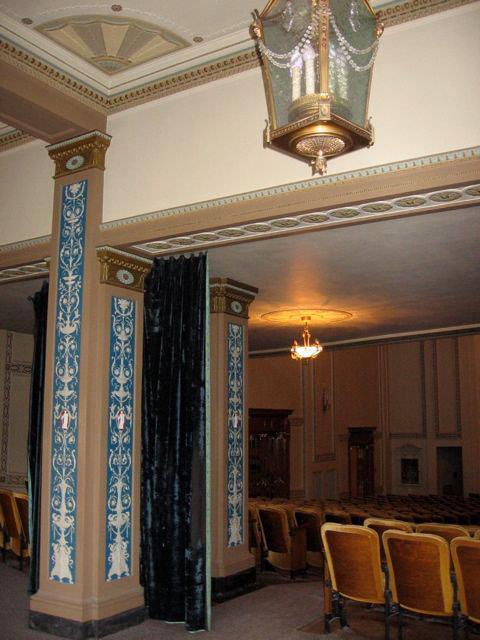
Back of the Hibbing High School Auditorium.
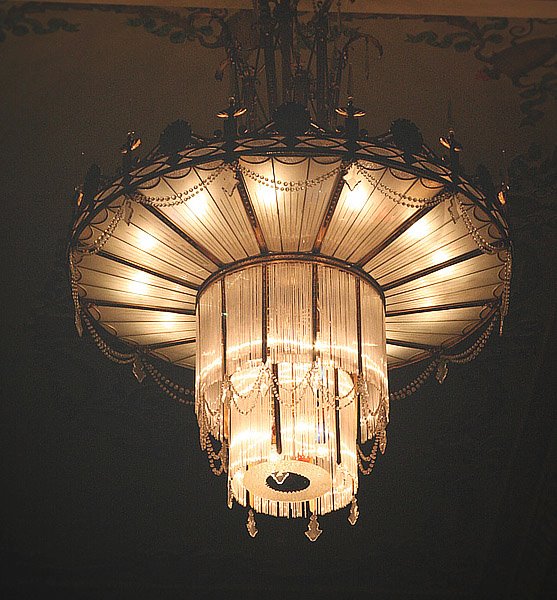
Closeup of chandelier.
The chandeliers were built at a cost of $15,000 each, with cut glass from Belgium.
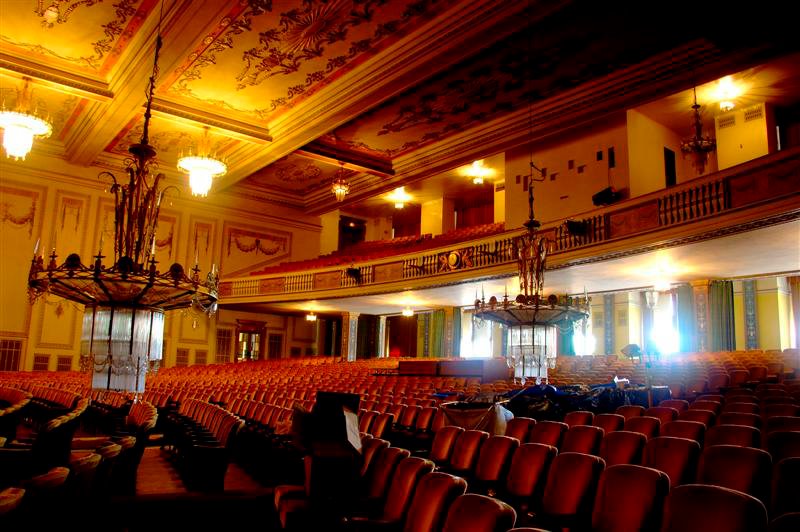
Hibbing High School Auditorium
Cleaning the chandeliers.
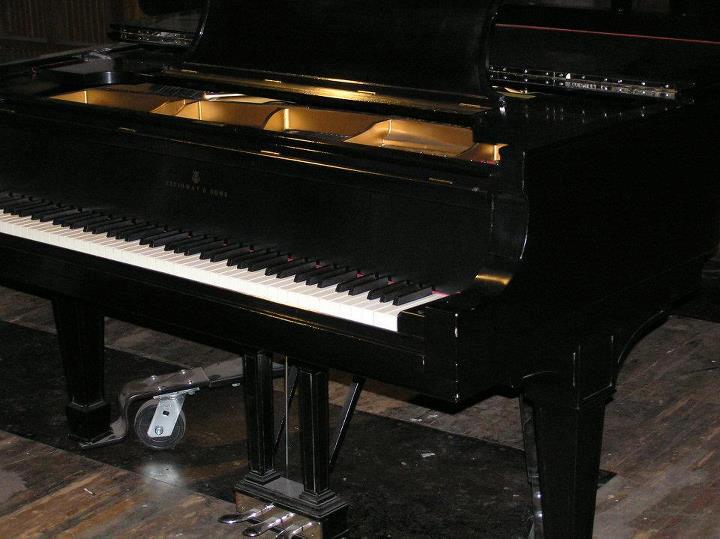
The very famous Hibbing High School piano, kept in a closed storage area, 2005.
In 1958, with his second group, the Golden Chords, Dylan stood hammering on Hibbing High School’s 1922 Steinway Grand piano (breaking a pedal in the process) and shouting out rock’n’roll songs at the annual student concert . . . and got laughed at, up there on stage in an auditorium so lavish and ornate, and with such acoustic excellence.
"Touring the high school, Thompson meets with Dylan's teachers, sits in the chairs Dylan sat in, and even sees the piano whose foot pedal Dylan broke after the principal rudely pulled the plug on his noisy talent show rockabilly act. Dropping over to Dylan's childhood home, the current owners are more than glad to show the young writer Dylan's bedroom, some ice skates and various other schwag left behind by the former tenants. But it isn't until the author pins down Dylan's junior and senior year high school sweetheart, Echo Helstrom, that his story really takes off."
http://folkmusic.about.com/od/bobdylan/fr/Positively-Main-Street-Bob-Dylans-Minnesota.htm
Thompson, Toby. Positively Main Street: Bob Dylan's Minnesota. Minneapolis: University of Minnesota Press, 2008.
[Photograph from a private Bob Dylan collection.]

For Fire
The panel protecting a fire extinguisher set into a niche left of the entrance to the Hibbing High School auditorium. The jewel tones of the lettering, the elegant pattern of the leaded glass, may remind you of Tiffany-style glasswork.
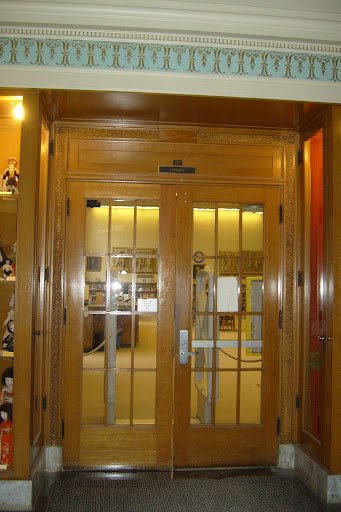
Hibbing High School doors to the library.
Well, I investigated all the books in the library
Ninety percent of ’em gotta be burned away
I investigated all the people that I knowed
Ninety-eight percent of them gotta go
The other two percent are fellow Birchers . . . just like me

Hand-carved bas reliefs depicting children joyously singing and playing musical instruments. Library, Hibbing High School.
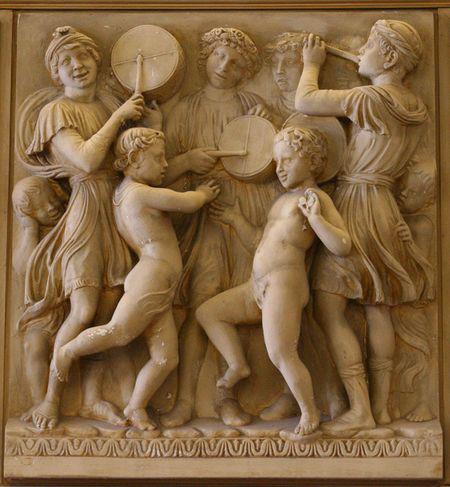
Bas-relief, another panel
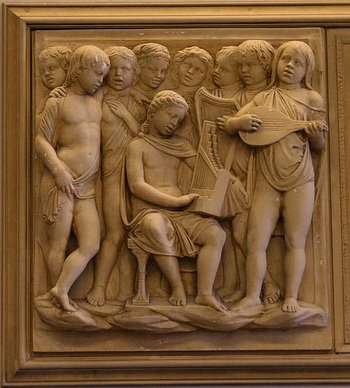
Bas-relief, another panel
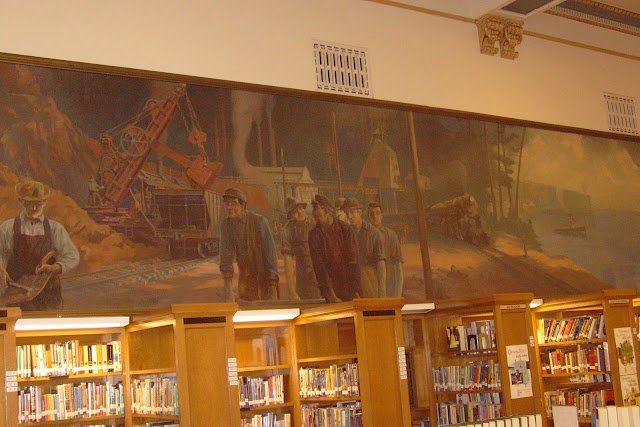
Hibbing High School Library mural left
This sixty-foot mural entitled The Iron Industry on the west wall of the Library was painted by David Tice Workman in 1913.
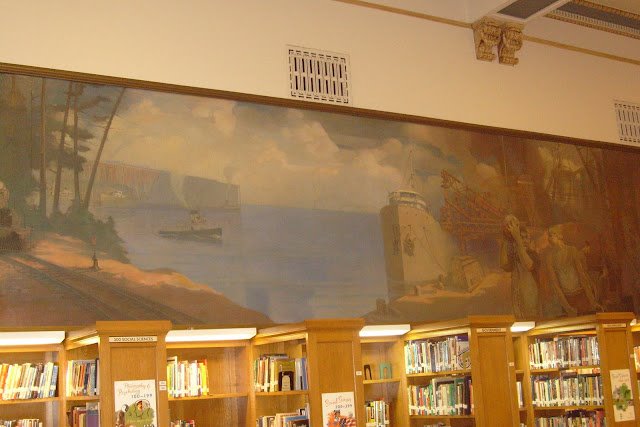
Hibbing High School Library mural centre
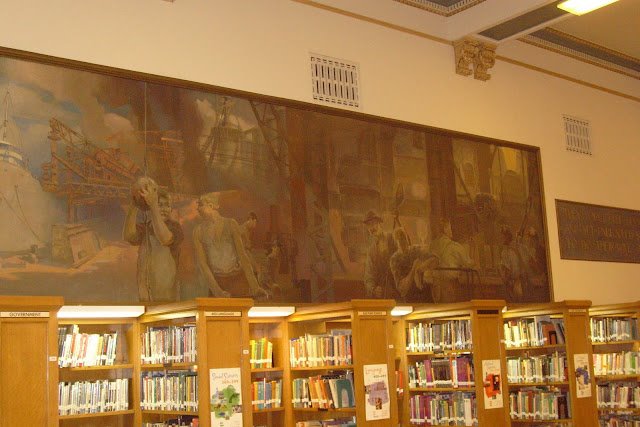
Hibbing High School Library mural right

Hibbing High School Library windows
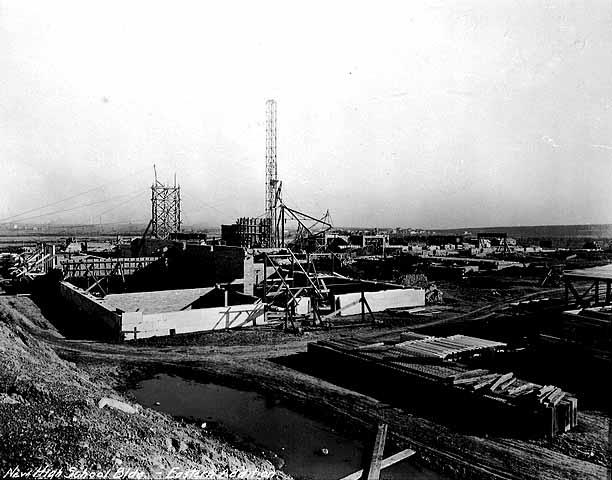
Hibbing High School early on.

Hibbing High School ceiling
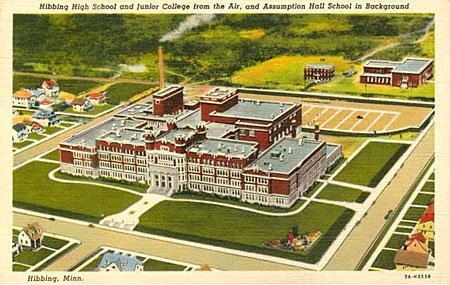
Hibbing High School aerial view
Abe, Bob's father, went to a striking high school too, Central High School, Duluth:
http://www.cityhistory.us/duluth/photos/falk/central-high-1915_1b.jpg
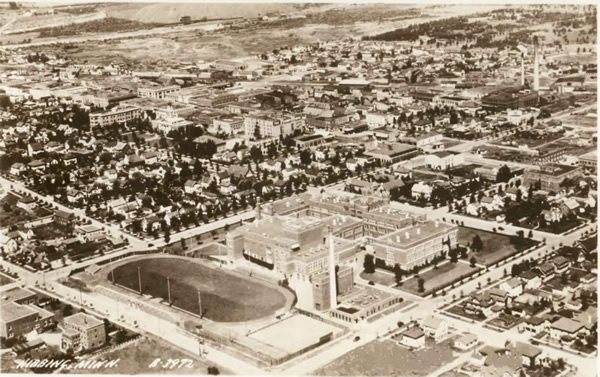
Hibbing High School aerial view
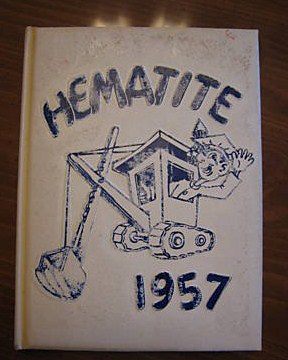
Cover of 1957 Yearbook
Hematite
The yearbook Hematite is older than the school, it is a continuation of the Lincoln High School yearbook Hematite from before the town was moved.
Hematite is the mineral form of iron(III) oxide (Fe2O3), one of several iron oxides. Hematite crystallizes in the rhombohedral system, and it has the same crystal structure as ilmenite and corundum. Hematite and ilmenite form a complete solid solution at temperatures above 950 °C.
Hematite is a mineral, colored black to steel or silver-gray, brown to reddish brown, or red. It is mined as the main ore of iron. Varieties include kidney ore, martite (pseudomorphs after magnetite), iron rose and specularite (specular hematite). While the forms of hematite vary, they all have a rust-red streak. Hematite is harder than pure iron, but much more brittle. Huge deposits of hematite are found in banded iron formations.
Hematite is present in the waste tailings of iron mines. A process, magnetation, uses huge magnets to glean waste hematite from old mine tailings in Minnesota's vast Mesabi Range iron district.
Iron ores are rocks and minerals from which metallic iron can be economically extracted. The ores are usually rich in iron oxides and vary in colour from dark grey, bright yellow, deep purple, to rusty red. The iron itself is usually found in the form of magnetite (Fe3O4), hematite (Fe2O3), goethite, limonite or siderite. Hematite is also known as "natural ore". The name refers to the early years of mining, when certain hematite ores contained 66% iron and could be fed directly into blast furnaces. Iron ore is the raw material used to make pig iron, which is one of the main raw materials to make steel. 98% of the mined iron ore is used to make steel.
http://upload.wikimedia.org/wikipedia/commons/a/ae/Hematite.jpg
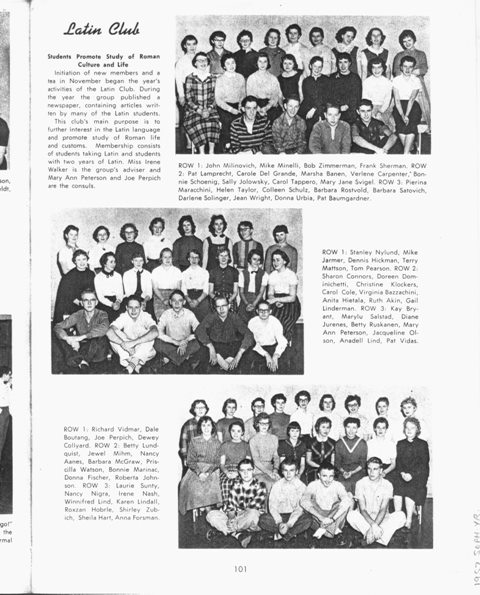
Yearbook 1957 Latin Club, page 101.
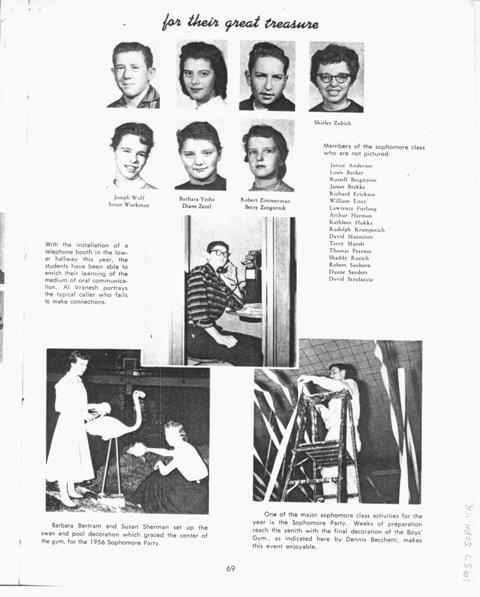
Yearbook 1957, page 69.

Cover of 1958 Yearbook
Hematite

Yearbook 1958, page 47.
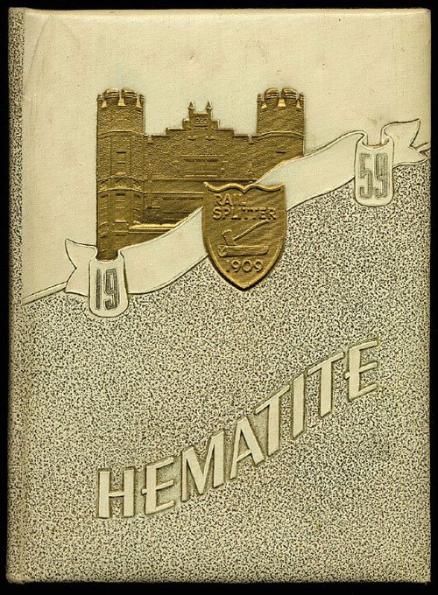
Cover of 1959 Yearbook
Hematite

Yearbook 1959, page 76.
Ambition: to join "Little Richard"
In the second extant recording we have of Dylan, made informally in his home in 1958, the first song of the four recorded, and the only one to capture such an early Robert Zimmerman composition, was called ‘Hey Little Richard’; the third song was Richard’s ‘Jenny Jenny’.
-- Latin Club 2. Social Studies Club 4.
Alvin G Johnson
Anita A Hietala
Anthony J Petrick
Barb Evanson
Barb Maras
Barb Steele
Barb Yeshe
Bea Rodgers
Bette J Ruskanen
Beverly C Stimac
Beverly Gunderson
Beverly Leppanen
Bob Sanborn
Bonnie Marinac
Brenda Marshall
Carla A Siekkinen
Carol J Salmi
Carole M Toscano
Christine Klockers
Cole Carole
Connie Jerman
Dave Buzzelli
Dave Manninen
David C Rian
David Mattson
Dennis Keller
Dianne D Mattson
Dick G Helstrom
Dick G Helstrom
Don S Crea
Donna C Fischer
Dotsy Deemer
Dwane H Hemenway
Earl Hyatt
Ed Walior
Edward S Mansfield
Fran Jerkovich
Frank A Sherman
Frank J Catani
Gail A Linderman
Gail A Rosenberger
Gail Marinac
Gary Johnsrud
Gayle Collier
Gayle K Stevens
George D Andria
Gerald Bergsrud
Gloria J Gargano
Harry I Clark
IIona Lehto
Ione Margo
Jackie Olson
James A Monson
Jane M Anderson
Jean A Gardiepy
Jean Berklich
Jeffery MacLeod
Jerry Marinucci
Jessie Lomoro
Jim Brekke
Joanne L Tool
John C Frankson
John F Fillman
John Hulstrand
Joyce Hernesman
Joyce Sundvick
Judith A Hendrickson
Judy Nelson
Karen Lindall
Kathleen Bergerson
Kathy Clark
Kay M Bryant
Keith Johnson
Ken Raukar
Kenneth D Kerr
Kenneth Mihelich
Laura Wilcox
Laurie A Sunty
Lawrence J Furlong
Lee Harry
LeRoy Hoikkala
Leroy R Lund
Lois M Dilla
Loretta Moe
Louis R Turk
Luke Davich
Mana Peterson
Margaret K Loe
Margaret M Hrovat
Marietta Turk
Marlene R Scanlon
Martha L Lyman
Mary Jo Sullivan
Melvin J Stavn
Mervin Olson
Michael F Theisen
Michael P Minelli
Mick Dwyer
Nancy Aanes
Nancy G Nigra
Nancy Hardy
Nancy L Edwards
Nancy Stavn
Pat Brady
Pat Ryan
Patricia A Butorac
Patti Gersich
Peggy Teske
Phylis J Stensland
Richard Carlson
Richard I Erickson
Richard L Skog
Richard Vidmar
Robert A Zimmerman
Robert J Steichen
Robert L Sutton
Roberta H Johnson
Roberta Martinetto
Ron Desellier
Ron Ogren
Ronald D Dilley
Ruth Akin
Sandra J McHale
Shaddie Holman
Sharon Beasy
Sharon K Lobland
Sheldon F Berganini
Shirley A Zubich
Sophie Arabanos
Stephen LeDoux
Thomas S Chanak
Tom Philipich
Tom Ray Pearson
Victor C Lauhala
Virginia M. Bazzachini
Wallace C Sundberg
Warren W Swanson
Winnifred M Rapinac
(Dick Kangas is the class of 1957
John Bucklen is the class of 1958
Monte Edwardson is the class of 1960)
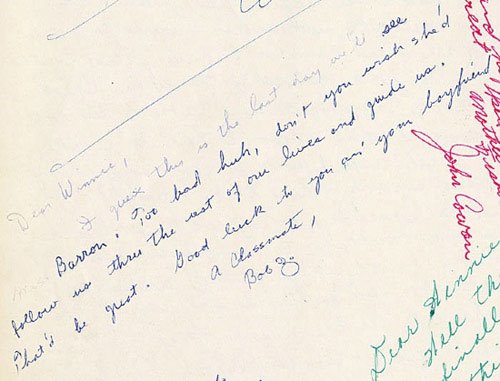
Yearbook 1959
"Dear Winnie, I guess this is the last day we'll see Miss Barron. Too bad huh, don't you wish she'd follow us thru the rest of our lives and guide us. That'd be great. Good luck to you an' your boyfriend. A classmate, Bob Z."
Notice that his pen ran out of ink!
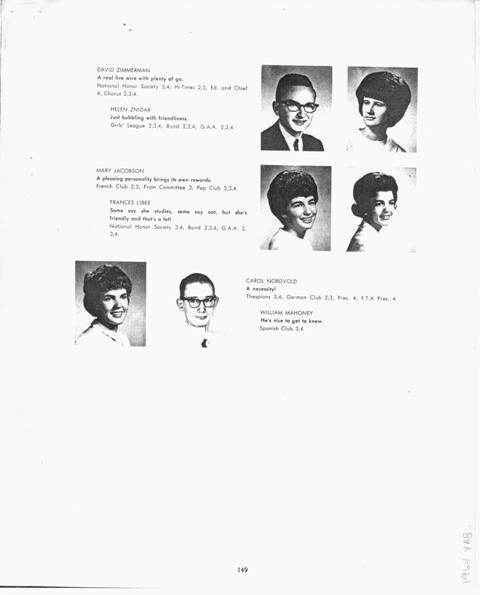
1964 Yearbook, page 149.
Zimmerman, David [1946 - ]
David Benjamin Zimmerman, Bob Dylan’s younger brother, was born in February 1946 in Duluth, Minnesota, two years before the family moved to Hibbing. When David was six and Bob 11, their cousin Harriet Rutstein started to give both boys piano lessons on the Gulbranson upright their parents had bought. Their uncle, Lewis Stone, told Dylan biographer Howard Sounes that David was the better player: ‘David . . . was a very, very smart boy [who] took it all in . . . he could play better than Bob. He was very musically inclined.’ (Six years later, Les Rutstein became general manager of Hibbing radio station WMFG, and got a very hard time about its ‘square’ programming from the less musical Bob.)
‘We were kind of close,’ David told Newsweek. ‘We’re both kind of ambitious. When we set out to do something, we usually get it done,’ to which he added this clipped but truthful insight: ‘He set out to become what he is.’
Toby Thompson interviewed David Zimmerman around five years later. They met in a bar in Minneapolis one weekend in 1968–69: ‘David was short like Bob, but stocky. Close to fat. He wore glasses; and well-tailored sports clothes—stylish— jodhpur boots, mod English jacket, cuff less tapered trousers—the whole trip.’ Zimmerman wouldn’t say much, reacting with frosty silence to Thompson’s prattle, but he couldn’t resist rubbishing the motorcycle crash: ‘Know how Bob hurt himself on that motorcycle? He was riding around the backyard on the grass and slipped. That’s all.’ So he didn’t really break his neck? ‘Sure, if a cracked vertebra is a broken neck.’
Abe Zimmerman told Robert Shelton: ‘When my boys make mistakes, they make big ones.’
David Zimmerman was the culprit who persuaded Dylan that the tapes from the New York Blood on the Tracks sessions of September 1974 weren’t good enough, and to take them up to Minnesota where he gathered together a new group of musicians for Bob to rework them with—overseeing all this because at the time he managed some local groups, was au fait with studio availability and so on.
Gray, Michael. The Bob Dylan Encyclopedia. New York: Continuum, 2006, 0826469337, page 728f.
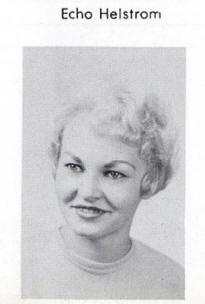
Echo Helstrom
" 20 below zero,
and running down the road in the rain
with yo´ ol´ man´s flashlight on my ass.
Now yo´ mother shines it in my face.
when we sat and talked in the L&B ´til two o´clock at night.
I was such a complete idiot, thinking back,
that the car was in the driveway all night.
Let me tell you that your beauty is second to none,
but I think I told you that before.
Well, Echo, I better make it.
Love to the most beautiful girl in school.
Bob"
Echo Hellstrom´s 1958 Hibbing Highschool Yearbook, Hematite

Echo Star Helstrom met Bob Zimmerman in the 11th grade.
She was free-spirited and blonde from a less-affluent section of town than the Zimmerman family and has been frequently cited as the inspiration for the classic folk ballad "Girl from the North Country".
In his memoir Chronicles Volume One, Bob Dylan writes "Everyone said she looked like Brigitte Bardot, and she did.", which raises interest because Dylan stated in a 1961 interview "I dedicated my first song to Brigitte Bardot." And at one of his first public performances, in his high school auditorium, he sang a song beginning "I got a girl and her name is Echo..."
Also importantly, he recounts in Chronicles: "One of the reasons I’d go [to Helstrom’s house]... was that they had old Jimmie Rodgers records, old 78s in the house." He readily absorbed musical influences and this record collection seems also to have played a part in Bob Dylan’s musical development.
"I once wrote a junior high school term paper on music like that. Colored jazz, with a big beat. They wouldn't let me write on rock and roll. That wasn't a fit subject, my music teacher said. Oh, Hibbing is SO hokey."
"Bob was a lot luckier with his teachers. He had that nice Mrs. Peterson in music, for one thing, and that made all the difference in the world. The woman I had practically ruined my life. That whole eleventh grade when Bob and I went steady, he had the music teachers snowed. Nobody else could stand how he sung or what he played especially the electric stuff, but people like Mrs. Peterson and Bob's English teacher, Mr. Rolfzen, they had a feeling. Bob would play for anybody, anytime, and I guess that enthusiasm made a difference, too. He was such a sweet convincer."
Helstrom, Echo [1942 - ]
Marvel Echo Star Helstrom Shivers was born in Duluth, Minnesota, in 1942, by far the youngest child of mechanic, painter and welder Matt Helstrom and his wife Martha. Her brother (also named Matt) was 14 years older than her, and her sister (also named Martha) 15 years older. She was, as she said herself, ‘from the other side of the tracks’ from the middle-class Robert Zimmerman; and this was part of her fascination for him: ‘he was rich folk and we were poor folk,’ as she told Robert Shelton. There was another difference too: ‘he was Jewish and we were German, Swedish, Russian, and Irish, all mixed together.’ In fact, Echo’s mother was born in Ohio and her father in Minnesota, but all four of her grandparents were from Finland.
In the 2005 film No Direction Home Dylan says that before Echo there had been another girl, with, for him, an equally resonant name, ‘Gloria Story’; but until he volunteered it, no such name had ever been mentioned in his biography, whereas Echo has long and famously been his ‘Girl of the North Country’. It’s sometimes been guessed— in the dark, either way—that Bonnie Beecher, aka Jahanara Romney, was the ‘real’ girl whose hair ‘rolled and flowed all down her breast’, but Echo has the better claim: she’s the one from Hibbing rather than Minneapolis, and she came first. She had taken accordion lessons, played the harmonium the Helstroms had at home and sang in the school choir. Like Dylan, though, she was into rock’n’roll and like him listened to R&B on the late-night radio station that beamed all the way up from Shreveport, Louisiana. They ‘went steady’ in 1957–58, when they were 16. In the 1958 High School Yearbook Bob wrote against Echo’s name: ‘Let me tell you that your beauty is second to none. Love to the most beautiful girl in school.’ On May 2, 1958, they went to the Junior Prom together, in the school’s Boys Gymnasium, and both danced badly.
The Helstrom household was a wooden shack three miles southwest of Hibbing on Highway 73, to which Bob would often hitchhike out after school. Matt Helstrom didn’t approve of his daughter’s young man any more than the Zimmermans approved of Echo, but when he wasn’t around, Bob would play Mr. Helstrom’s three guitars, or listen to his Jimmie Rodgers records, and sing her songs out on their porch. In Chronicles, Dylan describes Echo’s father as ‘The kind of guy that’s always thinking that somebody’s out to take advantage of him’, whereas her mother ‘was the kindest woman—Mother Earth.’ Martha Helstrom (a name Shelton never gives, always calling her, irritatingly, ‘Mrs. Helstrom’) liked Bob, looked on the relationship with equanimity, and felt that Bob ‘seemed much more humble than his family. Both Echo and Bob seemed so sorry for the working people.’ Bob’s brother, David Zimmerman, told Shelton: ‘Bobby always went with the daughters of miners, farmers, and workers. He just found them a lot more interesting.’
In 1968, working as a film-company secretary in Minneapolis to support a child from a failed marriage (cold rain can give you the Shivers), Echo looked back to the events that must have seemed light years ago. Without trying to claim more than her due in Dylan’s story, she told Shelton that they had both felt outsiders together, both misfits in conventional, old-fashioned, narrow-minded Hibbing. ‘We weren’t like the other people at school in any way. I just couldn’t stand being like the other girls. I had to be different.’ Bob was going to be a pop star and Echo was going to be a movie star. Mrs. Helstrom remembered a time when they were going to get married and have a child. ‘They planned to call their child Bob, whether it was a boy or a girl. You know how teenagers are.’
They were drifting apart by mid-1958, with Bob making it ever clearer that he was going with other girls, and they broke up in early summer. She saw him around, but after he left for New York the next time she saw him was at the Hibbing High School Class of ’59 tenth reunion in 1969. Bob and Sara Dylan turned up unexpectedly, and so did Echo. They spoke briefly; Echo was among the old friends who asked for, and received, an autograph. He signed it before he recognised her, then said ‘Hey! It’s you!’ and said to his wife, ‘This is Echo!’, and signed her programme ‘To Echo, Yours Truly, Bob Dylan’. That same year saw the release, on Nashville Skyline, of the rerecorded ‘Girl of the North Country’.
They must either have met up or spoken on the phone again, after almost another decade’s gap, some time in the late 1970s: Echo told biographer Howard Sounes that it was 20 years after their schooldays relationship that Bob confessed to her new intimate detail about it.
Soon after talking to Shelton in 1968 (for a book that didn’t emerge till 1986) and more than 30 years before talking to Sounes, she had also talked— some might feel excessively—to Toby Thompson, the gawky young author of the first book to explore the subject of Hibbing in relation to Bob Dylan, Positively Main Street: An Unorthodox View of Bob Dylan, published in 1971. He had reached Echo first in October 1968, very soon after Shelton; she was still in her basement apartment in Minneapolis, and gave him the new information that once, when she’d been listening to one of Bob’s Hibbing bands practising, when she’d deciphered his voice from within the over-amplified whole, he ‘was howling over and over again, ‘‘I gotta girl and her name is Echo!’’ making up verses as he went along. I guess that was the first song I’d ever heard him sing that wasn’t written by somebody else. And it was about me!’
It’s always seemed likely that a song from aeons later, ‘Hazel’ on Planet Waves, was also, on one level, about Echo. The album is full of warm memorialising about the Minnesota years—‘the phantoms of my youth’, ‘twilight on the frozen lake’— and to hear ‘Hazel’—‘dirty blonde hair / I wouldn’t be ashamed to be seen with you anywhere’—is to feel a hunch that the song’s tender tale recollects fragments of feeling from the days when Echo and Bob were riding around, coming together from different sides of the tracks, united in wanting to get out of Hibbing—‘you’re going somewhere / And so am I’.
Gray, Michael. The Bob Dylan Encyclopedia. New York: Continuum, 2006, 0826469337, page 305f.

"Hohner Echo Harmonica, circa 1959. Very Good condition. In a custom clamshell case. A harmonica that was owned jointly by Bob Zimmerman and his friend Dale Boutang, played by both during their high school days in Hibbing, Minnesota. Manufactured by M. Hohner, this particular harmonica was chosen because the name of the model was the same as one of Bob's girlfriends in high school, Echo Helstrom. The harmonica has been in the possession of Dale Boutang since their school days together, and Boutang has written a letter attesting to the provenance. "I was a classmate and close, personal friend of Bob Zimmerman, who later changed his name to Bob Dylan. Bob and I shared many of our harmonicas and guitars. This one such harmonica, which I ended up keeping from our high school days. I have had [it] in my possession ever since." Perhaps the greatest testament to ownership of this item is Dale Boutang's crudely scrawled name, along the black edge of the harmonica, between the metal plates."
It sold for $6,380.00 (£3,190.00), twice the highest estimate, in 2006. It was later up for sale for $8,500.00 (5,425.00) from Royal Books, Inc., 32 West 25th Street, Baltimore, MD 21218.
Dale Boutang was also responsible for selling Bob''s 22-page handwritten high school paper on The Grapes of Wrath that Robert Edward Auctions sold in 2004 (which Bob gave to Dale to help him with his paper).
Dale Boutang has had remarkable luck finding things for auction. Do you believe Bob would have owned a harmonica jointly with another boy's name on it? When Dale auctioned his 1959 yearbook with many signatures in it, he did not have anything there from his "close, personal friend" Bob.
Both rode motorcycles, so we should see motorcycle parts at auction soon. ;-) Dale a Harley 74, Bob a Harley 45. He moved to Fairbanks Alaska and was an Alaska State trooper, then an investigator for the Federal Government.
http://www.robertedwardauctions.com/auction/images_items/item_4874_2.jpg
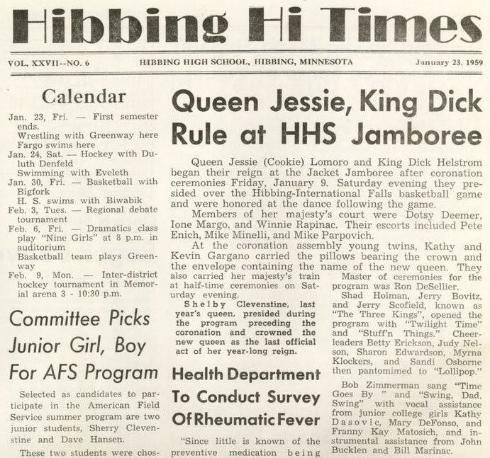
Time Goes By
Swing Dad Swing
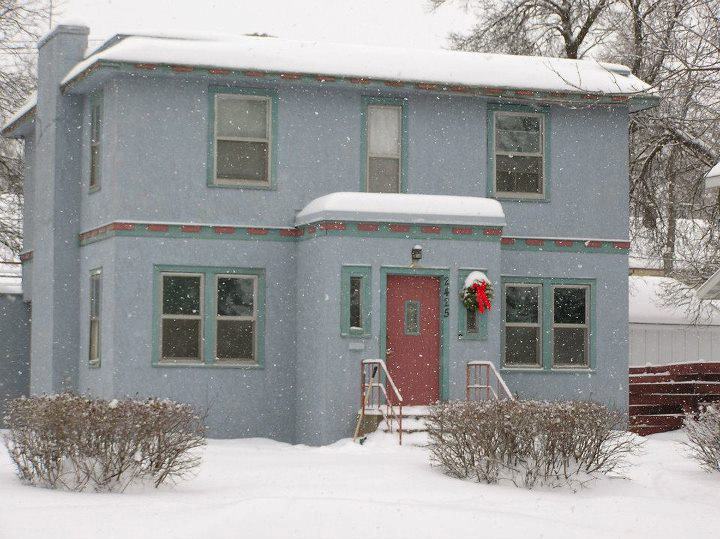
Zimmerman house, 2425 7th Avenue East, Hibbing, MN 55746, corner of 7th Ave East and 25th Street.

Zimmerman house
A two story, wood framed, flat roofed, stucco house and an example of the Mediterranean Modern style that could be found all over Hibbing in 1947. On the ground floor there was the kitchen, bathroom, dining and living room with a fireplace. Upstairs, a hallway connected three bedrooms. Bob Zimmerman lived in the house from 1948-1959.
"In 1948 Abe moved his family to 2425 7th Avenue, Bob's primary childhood home. This was a two-story detached house two blocks from Hibbing High, where Bob and David enrolled, and a ten-minute walk from downtown where Abe worked."
Sounes, Howard. Down the Highway: The Life of Bob Dylan. New York: Grove Press, 2001, page 37.

Fireplace
While riding on a train goin’ west
I fell asleep for to take my rest
I dreamed a dream that made me sad
Concerning myself and the first few friends I had
With half-damp eyes I stared to the room
Where my friends and I spent many an afternoon
Where we together weathered many a storm
Laughin’ and singin’ till the early hours of the morn
By the old wooden stove where our hats was hung
Our words were told, our songs were sung
Where we longed for nothin’ and were quite satisfied
Talkin’ and a-jokin’ about the world outside
With haunted hearts through the heat and cold
We never thought we could ever get old
We thought we could sit forever in fun
But our chances really was a million to one
As easy it was to tell black from white
It was all that easy to tell wrong from right
And our choices were few and the thought never hit
That the one road we traveled would ever shatter and split
How many a year has passed and gone
And many a gamble has been lost and won
And many a road taken by many a friend
And each one I’ve never seen again
I wish, I wish, I wish in vain
That we could sit simply in that room again
Ten thousand dollars at the drop of a hat
I’d give it all gladly if our lives could be like that
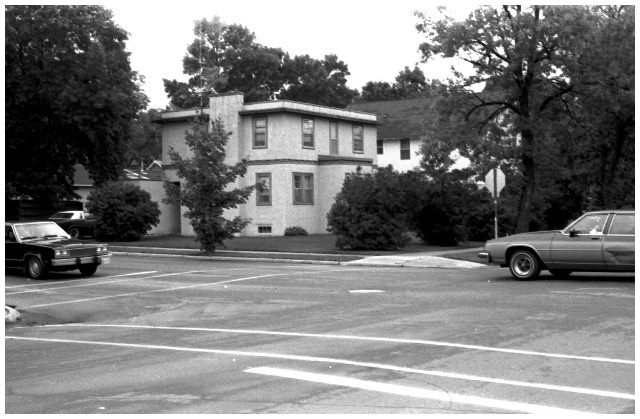
Zimmerman house

Police dealing with teen crime in Hibbing in 1958: Ed (Edward) Brigom, Dick (Richard) Frider, Denny (Dennis) Romano, Archie (Archibald) Passeri.

L & B Café, 417 East Howard Street, Hibbing, MN 55746. Bob and Echo would spend time at the L&B after school. They smoked cigarettes and played the juke box. Bob’s favorite order was cherry pie à la mode.
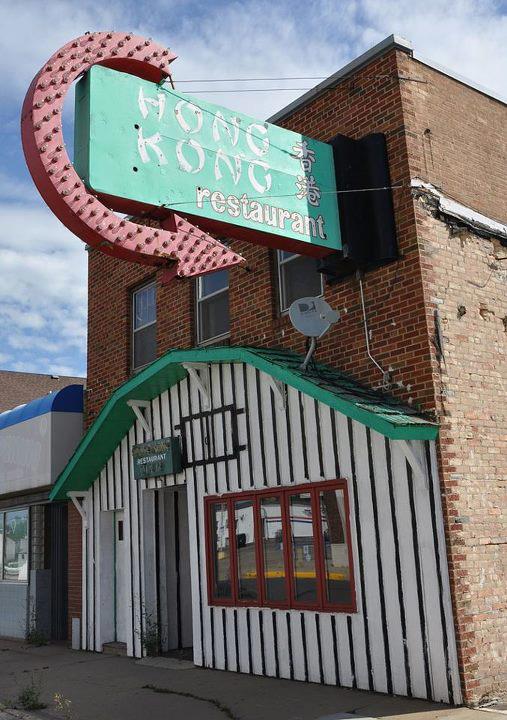
The L & B Café later became the much larger Hong Kong Super Buffet. The Hong Kong Super Buffet closed in 2011.
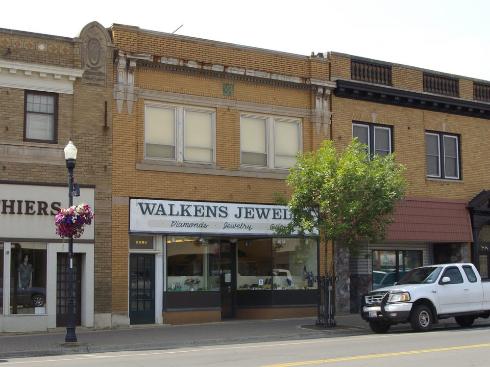
Braman's Music, 208 East Howard Street, later Walkens Jewelry.
Here Bob Dylan learned to play the guitar in the 1950's, taught by Raymond Braman.

Oh, the age of the inmates
I remember quite freely,
No younger than twelve,
No older than seventeen.
Thrown in like bandits
And cast off like criminals,
Inside the walls,
The walls of Red Wing.
From the dirty old mess hall
You march to the brick wall,
Too weary to talk
And too tired to sing.
Oh, it's all afternoon
You remember your hometown,
Inside the walls,
The walls of Red Wing....
It's many a guard
That stands around smilin',
Holdin' his club
Like he was a king.
Hopin' to get you
Behind a wood pilin',
Inside the walls,
The walls of Red Wing.
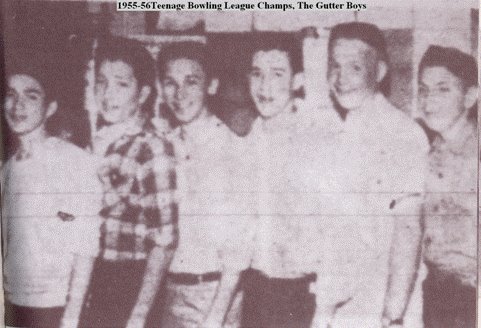
1955-1956 Teenage Bowling League Champs, The Gutter Boys

I went down to scrub and rub
But I had to sit in back of the tub
(Cost a quarter
And I had to get out quick . . .
Someone wanted to come in and take a sauna)
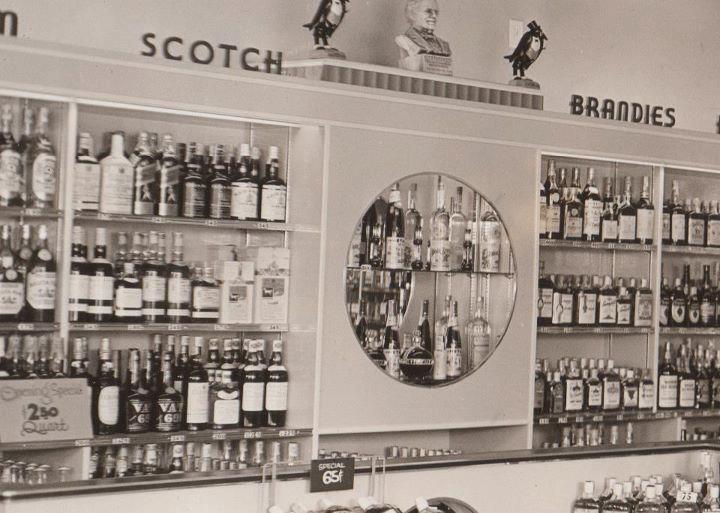
My first liquor store, Bob Mondavi's California Wine House, just behind Third Avenue. Bob proved way before my time that someone from Hibbing could get rich and famous in California!
http://en.wikipedia.org/wiki/Robert_Mondavi
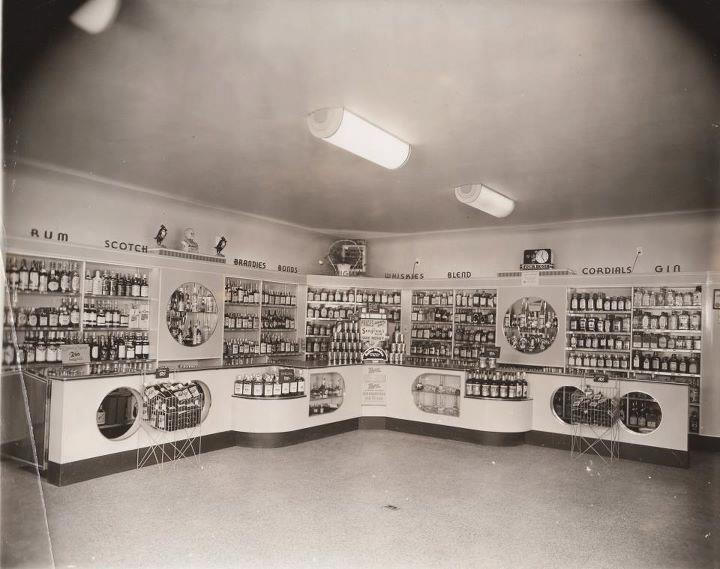
California Wine House, long shot.
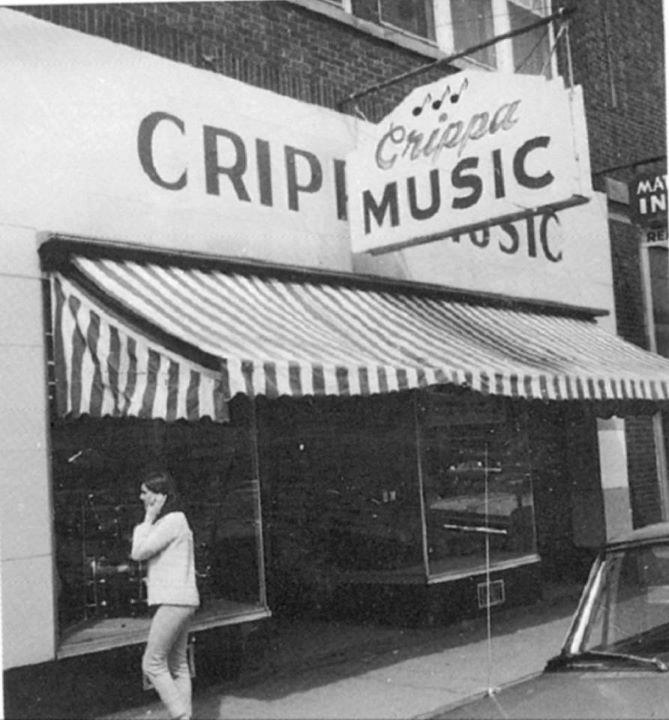
Crippa Music, 313 East Howard Street, Hibbing, MN 55746, sold sheet music and vinyl records. During the noon hour and after school Bob was known to stop by Chet Crippa’s and charge sheet music and records to his father Abe’s account.
"Gripped with a passion for music—particularly the blues—Bob wrote off for records he heard advertised on the radio. "Brother Gatemouth" Page sold records for Stan's Rockin' Record Shop in Shreveport, huckstering special $3.49 deals for six recordings. There was no way to buy this so-called race music in Hibbing as the assistant in Crippa's music store downtown had never heard of the artists Bob liked."
"The saleslady at Crippa's explains that Bob doesn't sell well in Hibbing. People don't like his voice. Some of the other groups that do his songs -- the Byrds, Peter, Paul and Mary, Joan Baez -- they sell a whole lot better. But Saleslady likes Bob. She sold him his first harmonica. And harmonica rack. Had to order that special. Bob was in Crippa's a lot. From the time he was just a little boy. Always fascinated by music. Would spend hours in the store listening to records. All kinds. Liked classical music at first. But, sometime during his junior high school years, he got interested in popular music. Blues, country, rock and roll, everything. Chet Crippa remembers ordering all of Hank Williams' records for Bob, at one fell swoop. Chet outfitted Bob's rock band too. With amplifiers, mikes, guitars, right down to picks and guitar strings. Chet remembers that in those days Bob carried his guitar with him wherever he went. An old beat-up Sears and Roebuck job, with a leather strap. Slung it over his shoulder and down his back, through snowstorms and everything."
"Bob in those tight jeans he wore, with his hands squeezed into the pockets as far as he could get them, and he'd drag me into Crippa's or one of the other stores that sold records. He'd walk up to the clerk like that in those jeans and with that kooky little grin, and ask for some records he KNEW they wouldn't have. The clerk would say, 'Little Who?' or 'Fats What?' and Bob would say, 'Well, how about such and such; or so and so's new one?' He'd keep that up until the clerk was just about furious, and then he'd put on his hurt look and we'd leave, ready to burst from not laughing." -- Echo Helstrom
The other source for the music was the far more powerful, big-time radio stations you could pick up even in the North Country. Dylan’s early girlfriend Echo Helstrom remembers listening to DJ Gatemouth Page, beamed up from Shreveport, Louisiana, in 1957, and Dylan was buying blues and post-war R&B records he’d heard on the radio from the age of 13, according to Stan Lewis, the legendary Shreveport record-store owner, plugger and radio-show packager, recollecting this in 1996:
‘DJs like Wolfman Jack . . . had shows on other independent stations willing to work R&B into their formats. One of those clear-channel stations had a 250,000-watt transmitter in Mexico. On certain nights its signal could be heard all over the country, even in Europe and South America. I couldn’t believe some of the places I started getting orders from.’ One place was Hibbing, Minnesota. ‘He used to call me at night, to order the records he’d just heard on the air. I thought to myself, Who is this rich kid, calling long-distance from the Midwest to order records? We’d chat and talk about the blues . . .’
Fifteen miles from Hibbing, in the small town of Virginia, MN, there was a DJ on station WHLB called Jim Dandy (real name James Reese), and in the summer of 1957 Dylan and his friend John Bucklen went over to find ‘the man behind the voice’, as Robert Shelton puts it. Bucklen told Shelton that after they found him, they visited him often. ‘He was a Negro, involved with the blues. He had a lot of records we like.’ Dandy’s was the only black family in town, and on radio he used a ‘white’ voice, which he dropped when he saw that Dylan and Bucklen were keen on black music. They spent many visits listening to R&B and blues records. As Shelton comments: ‘Through Jim Dandy, Bob discovered a new Iron Range that his family scarcely knew. That is why Dylan could say: ‘‘Where I lived . . . there’s no poor section and there’s no rich section. . . . There’s no wrong side of the tracks . . .’’’
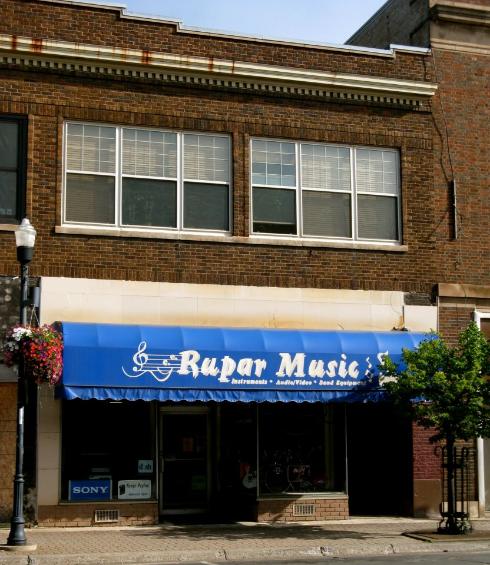
Crippa Music, 313 East Howard Street, Hibbing, MN 55746, became Rupar Music.
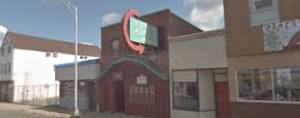
Collier's Barbeque and Bar, 1928 East 4th Avenue, now a Chinese restaurant, the Hong Kong Kitchen.
The Golden Chords jammed here on Sundays in late 1957 and early 1958. Bob's final Hibbing band, Elston Gunn and the Rock Boppers, performed here during the summer of 1958. Collier's Barbeque was a popular eatery and teen hangout.
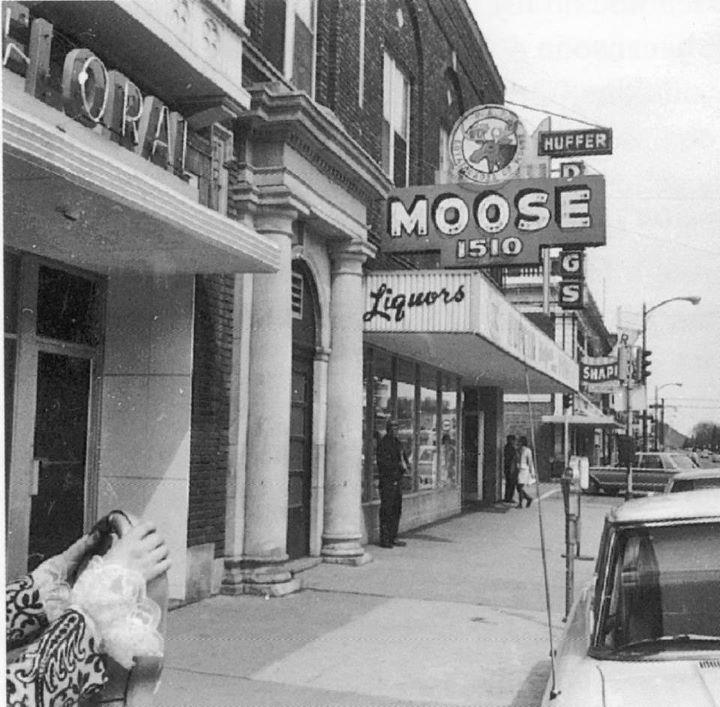
Hibbing Lodge No 1510 Loyal Order Of Moose, 421 1/2 East Howard Street, Hibbing, MN 55746.
(Often mistaken in print as 1510 East Howard Street.)
The Moose Lodge had a piano and Bob Zimmerman made use of it.
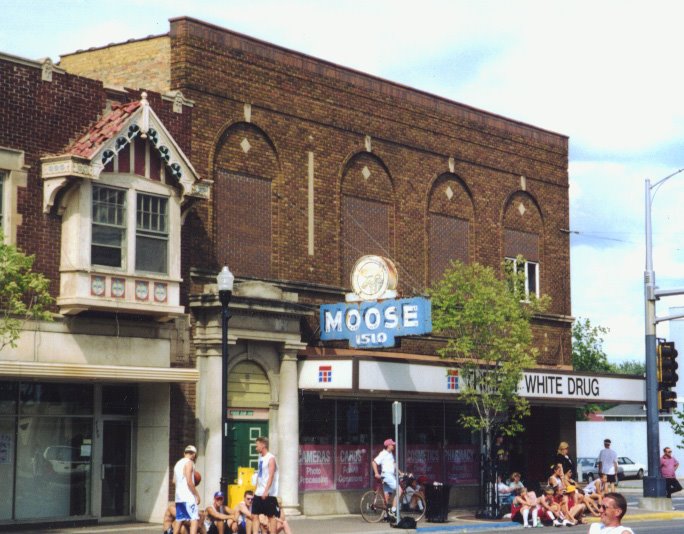
Moose Lodge
"See that lampost? Right in front of the Moose Lodge? That's where I first met Bob. Well, it was in the L& B afterwards really, but there on that corner was where I first noticed him. How could I help it! He was standing in the middle of the sidewalk, playing the guitar and singing, and it must have been ten o'clock at night. He and the band had been rehearsing upstairs in the Moose Lodge, and they were all going into the L&B. " -- Echo Helstrom

The Golden Chords -- Bob Zimmerman, Monte Edwardson and Leroy Hoikkala -- played a talent contest at the Memorial Building 400 East 23rd Street on Saturday March 1, 1958.
The piano and song group became Group II finalists in the afternoon preliminary round of the Hibbing Chamber of Commerce "Carnival Talent Contest", part of the 1958 Winter Frolic festivities. The evening competition didn't look too fierce, and Bob tells LeRoy, "We're gonna take 'em." Amidst shouts of "this is way too loud," and "hold 'er down," the band plays on obliviously during the finals. High schoolers in the audience thought the band had won, but judges give way to older more conventional thinking. A13-yr old pantominist is declared the winner. An ecstatic Bob declares, "Hey, we really reached 'em. We knocked 'em dead."
"“Bob was a little detached [after the contest] saying, ‘We should have won, you know?’ Because, in fact the audience was with us, but they gave it to someone else.” -- LeRoy Hoikkala
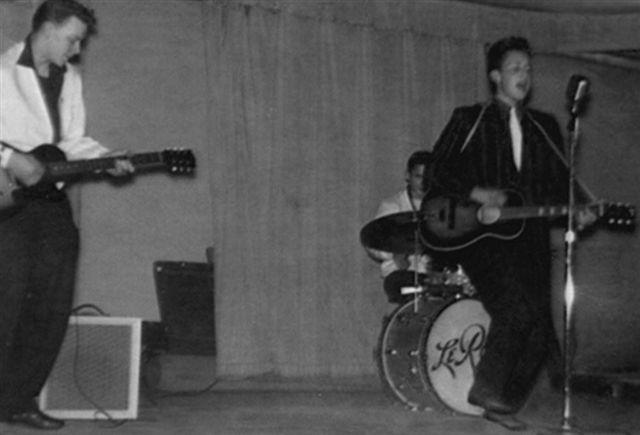
The Golden Chords, Memorial Building, February 1958. Bob Zimmerman, with Monte Edwardson and LeRoy Hoikkala. “Bob had complete arrangements worked out in his head and he used us so that he could hear them come alive" LeRoy: “He would write a song right at the piano. Just chord it, and improvise on it. I remember that he sang one about a train in R&B style" During the Golden Chords days Bob, LeRoy and Monte worked out a song “Big Black Train”, the only Zimmerman-penned rock song known to exist. Monte Edwardson: “He wrote a thing called “Big Black Train”, that we used to do. At the time I couldn’t believe one of us could just write a song. Big Black Train Well big black train, coming down the line Well big black train, coming down the line Well you got my woman, you bring her back to me Well that cute little chick, is the girl that I want to see Well I’ve been waiting for a long, long time Well I’ve been waiting for a long, long time Well I’ve been looking for my baby Searchin’ down the line Well here comes the train, yeah it’s coming down the line Well here comes the train, yeah it’s coming down the line Well you see my baby is finally coming home LeRoy Hoikkala: ”He changed a lot of songs. He listened to a song and he changed them. He didn’t like the way they read. Just like a lot of the songs he recorded. I use to say that he wasn’t copying someone, but he took the basic song and if he didn’t like the lyrics he just changed it to what he wanted.” John Bucklen: “It was difficult to tell which songs he wrote and which he didn’t write, because sometimes I’d discover that he said he wrote a song and he didn’t and other times I thought he did not write the song and he did. So, it was … pretty similar to the music we were interested in at the time.” LeRoy: “He was improvising quite a bit. He would copy a lot of songs. He’d hear a song and make up his own version of it. He did a lot of copying but he also did a lot of writing of his own. He would just kind of sit down and make up a song and play it a couple of times and then forget it. I don’t know if he ever put any of them down on paper.” “Big Black Train” was later, in fall of 1958, to be recorded by The Rockets at the Kay Banks studio in Minneapolis, for the Aladdin Record label, but never released. The Rockets was then Monte Edwardson, LeRoy Hoikkala, Jim Propotnick and Ron Taddei. “..and we finished it on the way to the recording studio”. A handful of acetates exists. “ … used the others to get played on the radio.” Bob 1965: “I never sang what I wrote until I got to be about eighteen or nineteen. I wrote songs when I was younger, fifteen, but they were songs. I wrote those. I never sang anything which I wanted to write. Y’understand? The songs I wrote at that age were just four chords rhythm and blues songs. Based on things that the Diamonds would sing, or the Crewcuts, or groups like that, the uh, the, you know,’In the still of the night’ kinda songs, you know.”
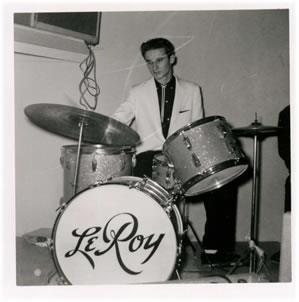
LeRoy Hoikkala
"I knew Bob pretty much from school and everything. Growing up you see each other. It is a small town. You know, everybody knows everybody in town. How we got to meet as far as playing in a band was Monte Edwardson–who is a guitar player; who is very good; he still plays today; he is a natural guitar player–we worked downtown, Monte and myself. Right across the street [from school], we met each other and we walked to a little job, an after-school job. And Bob was just there one day. Monte and I had been messing around with playing drums and guitar; just jamming a little bit. I had taken lessons for quite a few years. So, Bob just happened to say, "Hey, you guys going downtown?"
We actually walked from school to downtown, so we told him that we were playing, you know, just getting together and jamming around and playing. So, he said: "Hey, I’m playing piano, mouth-organ, harmonica and guitar. Maybe we could get together and kind of play a little bit."
We said, "Yes, sure."
So we started playing in Bob’s garage that was attached to his house, that little garage. We jammed in there for quite a bit, and we got a couple of jobs. The first time he ever got paid to do anything was with our band the Golden Chords.
Sometimes we’d go into the house to play, because he had a piano in the house.
It was just the three of us at that time. Me, Monte Edwardson and Bob. I played drums.
We played at the National Guard Armory, a pretty big building. We hired the police department, because you had to have the police, we hired people to collect tickets, we sold tickets, made tickets. We hired someone to clean the place up and everything, and we made money. It was kind of fun. It was one of those things where you put a lot of money out and do something; try to fix a Saturday night rock opera or "jam," and a lot of kids came. That was probably the first time Bob ever was paid to do anything musically.
It was a dance. There was a wide-open area, no chairs, nothing, big stage, that’s all.
It was a onetime show, that particular one. That was kind of how we got together and started playing.
Then we played that talent show, you know, where we actually won but lost, because the kids went crazy [but the judges] gave it to someone else that tap danced. Bob was a little detached on that one saying, "We should have won, you know?" Because, in fact the audience was with us, but they gave it to someone else. We came in second. (He laughs.)
That was the three of us as the Golden Chords. The reason we called it the Golden Chords was because Bob was really…he could really chord with the piano and the guitar, really chord beautifully. He was really a natural at chording. And my drums were gold, sparkling gold. So, we said Golden...Chords, that´s how we got the name.
Ah, we played some of the Little Richard tunes, [like] "Jenny, Jenny." Some of the southern type music, the blues songs...a lot of Little Richard. Bob loved Little Richard, so we did a lot of Little Richard stuff.
It was kind of new for the kids around here. We used to sit together with a reel to reel tape recorder at night and tape the AM-stations that came in really good at night. We taped it so we could listen to the new songs that didn’t come along here. Hibbing was kind of a backward-area. The last to get in.
So we listened to the songs from the AM radio, taped them and then Bob would play them, because that was more the type of songs that he liked; the bluesy songs. We listened to Shreveport, there were a bunch of DJs down there that we listened to.
Bob was kind of the leader, but he wasn’t really close to anybody. I don’t think he ever had a bestfriend. He was kind of a loner, as we all were kind of loners. We’d hang around the motorcycles, the Harleys, and ride in our convertibles. He had a convertible like mine.
When we decide to play we used to go to Collier’s Bar-B-Q. Van Feldt’s owned it. On Sundays they were closed but they still had to clean up the place, do the potatoes for french fries and everything. So we used to go down there–it was right off the main street–and we’d bring our instruments in there, set up where you walk in, and leave the door open. The kids could hear the music from Howard street when we jammed.
Bob played guitar and a little harmonica, at that time.
What we kids used to do on weekend nights in the summertime was cruise the streets with our cars. That was where the kids used to hear us when they were [cruising or] walking up and down the street. That’s one of the fun things we did together.
Bob changed a lot of songs. He listened to a song and he changed them. He didn’t like the way they read. Just like a lot of the songs that he’s recorded. I use to say that he wasn’t copying someone, but he took the basic song and if he didn’t like the lyrics he just changed it to what he wanted. He was a natural. He is a great songwriter. Some songs he didn’t change, others he changed to his own liking.
We taped those songs, but I don’t have them anymore. Too bad! You know, Bob was just my friend, and he still is. When he became famous it was like a different person. He has his life and we don’t communicate now. We were friends and we played in the band and all of a sudden he went ...and now he’s a different person.
One of the big things that we really enjoyed was James Dean. We went to Steven’s Grocery and Confectionary to look at all the magazines of James Dean; how he got killed in that car accident.
We went to movies related to music all the time. James Dean, Brando …things like that. It was usually John Bucklen, Bob and myself.
John Bucklen was kind of a beginner. Actually all of us were beginners. But he didn’t play with the band. Bob jammed with a bunch of guys, but that wasn’t [as a] band. Then in the end it broke up. We didn’t really form a band. We played as the Golden Chords here and there and then Bob went to Duluth and got some friends there that played more blues and jazz type of music. Then he took off to Minneapolis.
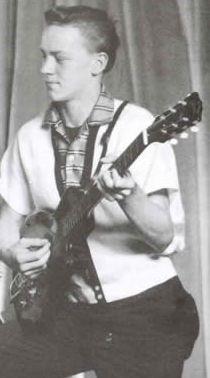
Monte Edwardson
The Golden Chords appeared on the 10:00 a.m. Sunday morning "Polka Hour" television show on the nearest TV channel in Duluth in 1958.
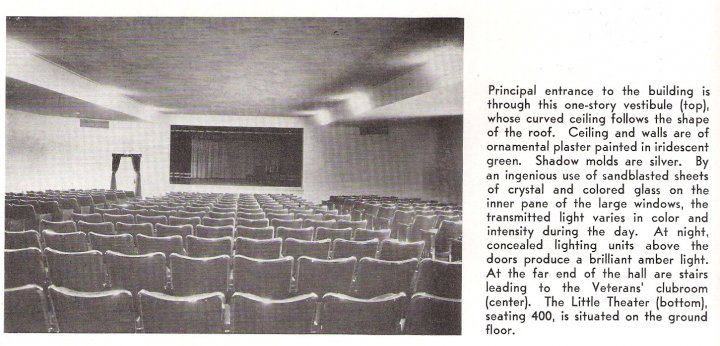
The Little Theater, Memorial Building.
The building also had a boxing ring and a lounge.
--
Select Finalists In Frolic Talent Contest
Finalists in the Hibbing Winter Carnival Talent Contest were selected at a preliminary contest in the Little Theater of Hibbing Memorial Building Thursday afternoon.
The four top entries in the two groups will perform prior to the Winter Frolic Queen Coronation at 8 p.m. Thursday in the Little Theater.
The winners Thursday were as follows:
Group I, ages 11 and under - Glenda Zubich, leader, square dance group, consisting of James Gerow, Bill Giffin,Steven Zimmerman, Shirley Kirsling, Deporah Ylatapia, Judy Koski and Glenda Zubich; Georgine Sampson, dance, Suzanne Plesha, dance, and Linda Christ offerson, singing.
Group II, ages 12 and over - Rosemary Pellicciotti, 13, Keewatin, acrobatic; Raymond Reed, 13, Hibbing. pantomime; Bob Zimmerman, Montie Edwardson and LeRoy Hoikkala, Hibbing, piano and song, and Stanley 14, and Jane Gruska, 11, Hibbing, tap dancer
--

The Memorial Building more recently.

National Guard Armory, 2310 Brooklyn Drive, Hibbing, MN 55746.

National Guard Armory, Saturday 1 March 1958.
Saturday March 1, 1958, they played and got paid for a one-off performance at the intermission of a Rock & Roll Hop for Teen-Agers at the National Guard Armory, billed as ‘Hibbing’s Own Golden Chords Featuring Monte Edwardson, Leroy Hoikkala, Bobby Zimmerman’.

The Rockets -
Original Group : 1957-1958
Ron Taddei
Jim Propotnick
Monte Edwardson
Leroy Hoikkala
Then it changed to : Late 1958
Jim Propotnick
Monte Edwardson
Leroy Hoikkala
Bob Zimmerman
The final make up was : early 1959
Dave Karakash
Jim Propotnick
Monte Edwardson
Leroy Hoikkala
The Rockets disbanded in late 1959.
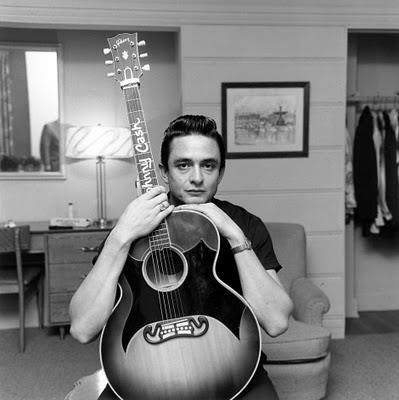
On the tape made with his school friend John Bucklen in 1958 we hear exactly what Bob thought about Johnny Cash then:
Bucklen: You think singing is just jumping around and screaming?
Dylan: You gotta have some kind of expression.
Bucklen: Johnny Cash has got expression.
Dylan: There’s no expression! [sings imitation in slow monotone]: ‘I met her at a dance St. Paul Minnesota . . . I walk the line, because you’re mine, because you’re mine . . .’
Bucklen: You’re doing it wrong, you’re just—What’s the best kind of music?
Dylan: Rhythm & blues.
Bucklen: State your reason in no less than twenty-five minutes!
Dylan: Ah, rhythm & blues you see is something that you really can’t quite explain see. When you hear a song rhythm & blues—when you hear it’s a good rhythm & blues song, chills go up your spine . . .
Bucklen: Whoa-o-o!
Dylan: . . . when you hear a song like that. But when you hear a song like Johnny Cash, whaddaya
wanna do? You wanna leave . . .’
By 2004, in Chronicles, Dylan was saying that ‘I Walk the Line’ was ‘a song I’d always considered to be up there at the top, one of the most mysterious and revolutionary of all time’. After his death, Bob Dylan said: ‘Johnny was and is the North Star. You could guide your ship by him—the greatest of the greats then and now.’
The power of television was illustrated in 1993 when a BBC-TV documentary team visited Minnesota and were offered something that not even Robert Shelton’s assiduous and privileged researches had managed to discover—a tape made at Bob’s own boyhood home in 1958 (long before he was Bob Dylan) with one of Shelton’s interviewees, Bob’s ‘best buddy’, John Bucklen.
This features Bob Zimmerman the rock’n’roller, playing piano and guitar and singing snatches of five songs (with some shared vocals by Bucklen) interspersed with conversation between the two. The songs are ‘Little Richard’ (composed by Dylan), ‘Buzz Buzz Buzz’ (a hit for the Hollywood Flames in late 1957 to early 1958), ‘Jenny, Jenny’ (a Little Richard song), ‘We Belong Together’ (a minor chart hit in March that year for an adenoidal black harmony duo from the Bronx called Robert & Johnny, i.e. Robert Carr and Johnny Mitchell) and the unknown ‘Betty Lou’ (sometimes listed wrongly as ‘Blue Moon’). Four were first heard, though incompletely, on BBC-TV’s excellent ‘Highway 61 Revisited’, first broadcast in the UK on May 8, 1993.
Bucklen, John [1941 - ]
John Charles Bucklen was born in Bemidji, Minnesota, on December 20, 1941, but soon afterwards moved the 100 miles or so east to Hibbing. There he became a good friend of Bob’s, the one with whom he made the 1958 tape recording at Dylan’s home featuring fragments of song and of conversation , and the one Dylan phoned up excitedly when he first heard the 78rpm records of Leadbelly he’d been given, to shout down the phone: ‘This is the real thing! You gotta hear this!’
John Bucklen was younger than Bob by eight months and a high-school year below him, but he was, in his own words, ‘a born follower’; Bob also liked the easier atmosphere in the impoverished Bucklen household, with its lesser emphasis on ‘achievement’ and ‘discipline’. John’s father was a disabled miner and a musician, his mother a seamstress, his sister Ruth a lively girl with a record player. Trying out the hipster language they learnt together from James Dean movies and the radio, Bob told John: ‘You are my main man.’ As they grew up, music held them together, and Bucklen, though without his friend’s ambition, nevertheless learnt guitar—playing it alongside Bob’s piano—and before long Bucklen was playing blues on the 1959 Gibson J-50 he still plays regularly today. (Bob played an identical guitar in the late 1960s.)
Bob Dylan told Robert Shelton in the 1970s that Bucklen had really been his ‘best buddy’ back in Hibbing, and regretted having been ‘terribly rushed, terribly busy’ when they’d last met. John Bucklen left Hibbing and became a DJ, first in the Twin Cities and then in Fond Du Lac in Wisconsin in the late 1960s. He and his first wife La- Vonne had one child, Chris, now a Minnesota based ambient folk guitarist. John moved on to DJ work in Superior, Wisconsin, in 1971 and then, with second wife Gracie (with whom he has three children), he moved again, though still within Wisconsin, in 1977. He has worked for the same radio station there ever since, claims never to have missed a day of work in 30 years and is, in son Chris’ opinion, ‘an excellent blues musician’.
Gray, Michael. The Bob Dylan Encyclopedia. New York: Continuum, 2006, 0826469337, page 103.
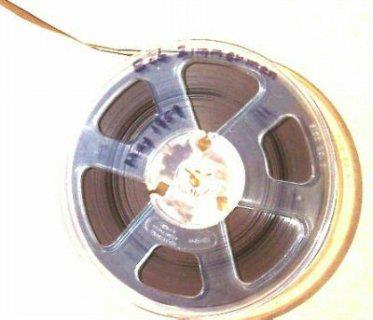
Bob Zimmerman May 1959
Kangas, Ric [1939 - ]
Richard Kangas was born in Hibbing, Minnesota, on October 20, 1939. (As he grew up he was known as Dick but today gives his name as Ric.) His mother was a housewife, his father a miner in the Hull Rust iron-ore mines who had previously been a copper and silver miner (and in his youth a lumberjack in the Northern Minnesota Woods).
Two years ahead of Bob Zimmerman at Hibbing High School, Ric left in summer 1957, before the two had ever knowingly met. Bob would come to put as his ‘Ambition’ in the 1959 school yearbook ‘To join Little Richard’. Kangas wrote the parallel ‘to be another Elvis’. Like Bob, he too belaboured the gorgeous auditorium of Hibbing High School with early rock’n’roll at a school concert, singing and playing the brand-new ‘All Shook Up’ with a borrowed guitar and amp.
Ric and Bob met around town in Hibbing sometime in 1958. ‘I hear you’re a songwriter. So am I,’ Bob said. Ric says the two played together at town hall talent contents and house parties, and auditioned (without success) for the Hibbing Winter Frolic, a big annual pageant, fair and festive event in the town that drew people in from all over the Great North Woods.
Their most significant musical collusion occurred in May 1959. Kangas had bought a reel-to-reel tape recorder, and the two of them got together in his bedroom, set it up and recorded four songs. When I Got Troubles, Teen Love Serenade (a short excerpt is featured in the "No Direction Home" film), and two other songs, I Wish I Knew (song by Ric Kangas with Bob backing), and The Frog Song (a song by Bob with Clarence "Frogman" Henry-style vocals). Ric Kangas appears in the film No Direction Home showing us the tape-recorder on which ‘Bob Zimmerman’, wanted to know how he sounded. One track mentioned and excerpted on the film, ‘When I Got Troubles’, is released complete on the Bootleg Series Vol. 7 — No Direction Home: the Soundtrack, and the notes suggest that it is ‘most likely the first original song recorded by Bob Dylan ’— though this cannot be true, granted that the No Direction Home film’s credits claim/confirm that ‘Little Richard’, on the 1958 John Bucklen tape, was also composed by Dylan.
Back then, beyond their musical bond was the fact that Kangas had a 1953 Ford (after ‘totalling’ his 1950 Oldsmobile). It’s easy to see why the younger boy would want them to hang out together—and Kangas says they’d cruise around on summer nights drinking gin and orange juice, picking up girls and driving out to necking spots like Snowball Lake; it’s not so clear why Kangas wanted to have Bob in tow. Ric was driving a truck for Kelly Furniture from 1957 till 1960 (a truck that was parked in a warehouse across the alley from the Zimmerman home); for most of that time Bob was still at school. At any rate, Bob would get Ric to drive him around, and one day their destination was local radio station WMFG. It was the start of their destinies dividing. Dylan played some material to DJ Ron Marinelli and was given some airtime on the strength of it; Kangas’ tapes were rejected.
They drifted apart when Dylan went off to the University of Minnesota and Ric Kangas got a steady girlfriend out in Eveleth, another taconite mining town some 20 miles away. He’d traded in his Ford for a Harley Davison too, and wouldn’t let anyone else drive that. He says Dylan would sit on the gleaming bike in the Kangas driveway, pretending to be Marlon Brando in The Wild One. Dylan went off to New York City; Kangas got a gig as lead singer for a group from Superior, Wisconsin, the Sonics. This didn’t last, and he was drafted into the US Army, serving from January 18, 1962 till December 17, 1963, stationed in Fort Carson, Colorado. He moved to Tennessee around 1966.
About a year later, Kangas moved again, this time to Southern California. He’s since moved around within the Golden State but lives there still. He’s been a Hollywood extra, a stuntman, a magician, a photographer, a portrait sketcher and a wildlife painter. He never quite gives up—even after writing, he says, 900 songs without ever releasing an album. Dryly he calls himself ‘Hibbing’s other songwriter.’
In the late 1990s, Kangas was living in Acton, just south of Lancaster, when he mentioned his 1959 Dylan tape to a banking acquaintance who happened to know Jeff Rosen, who runs Dylan’s office and archive. Rosen phoned, got to hear the tape and eventually brought a film crew out to film a four-hour interview with Ric. About seven years later Rosen called again to say that he and the tape were going to feature in the Martin Scorsese movie, and that one of the songs would be on the soundtrack CD set too. Kangas told the Minnesota newspaper the Ventura County Star that he was paid ‘a guitar, a small royalty cut from the CD and some up-front cash’. He ‘declined to discuss monetary specifics.’ On October 1, 2005, soon after the movie opened, he offered the original reel of tape for auction on eBay (item _7550832002) with an ill-advised reserve 370 price of $1.5 million. The auction ended October 11 with no bids.
Quoting Ric’s schooldays ambition ‘to be another Elvis’, the Star reporter notes that in a way he’s made it: these days Ric Kangas is an active performing member of the Professional Elvis Impersonators Association.
Kangas remembers another declaration from Hibbing days too: ‘Bob always used to tell us, ‘‘When I make it, I’ll send for you. We’ll all walk down Hollywood Boulevard and we’ll be stars.’’’ Kangas, deadpan, adds: ‘I’m still waiting for that call.’
Gray, Michael. The Bob Dylan Encyclopedia. New York: Continuum, 2006, 0826469337, page 369f.
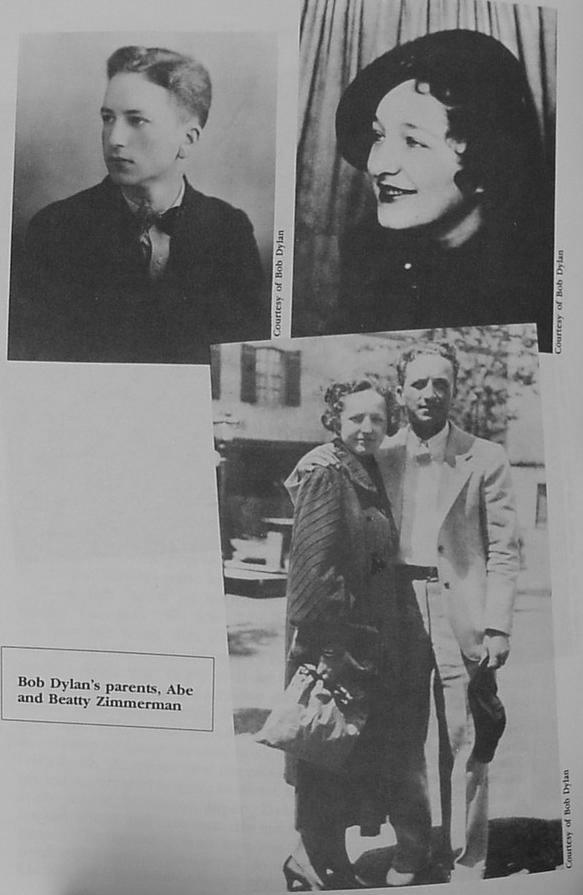
Abe and Beatty Zimmerman
Bob's father, Abe Zimmerman, was the son of Zigman and Anna Zimmerman, Jewish immigrants from eastern Europe. Zigman was born in 1875 in the Black Sea port of Odessa and grew up in desperate times. As the power of Czar Nicholas II faltered, he blamed Jews for the problems besetting the Russian empire, and thousands were murdered by mobs. Anti-Semitic hysteria reached Odessa in November 1905. Fifty thousand Czarists marched through the streets, screaming "Down with the Jews," and shot, stabbed, and strangled a thousand to death. In the wake of the massacre Bob's paternal grandfather fled the country, telling his wife and children he would send for them when he had found a place to settle.
Zigman Zimmerman caught a ship to the United States and found his way to Duluth, one hundred and fifty-one miles north of the Twin Cities of Minneapolis and St. Paul. Like many émigrés, Zimmerman gravitated to a place similar to the land where he was born. Duluth was a small but bustling port, like Odessa, with an almost Russian climate of short summers and long, bitter winters. Duluth was a fishing port, but its main trade was in the iron ore from the Iron Range, a necklace of mining towns to the northwest. The ore was transported by train to Duluth and transferred to ships that carried it to iron and steel works in Chicago and Pittsburgh. Zimmerman worked as a street peddler, repairing shoes. When he was established he sent for his Russian wife, Anna. She came with three children, Marion, Maurice, and Paul. Three more boys—Jack, Abram (also known as Abe), and Max—were born after the couple was reunited in America.
Abe Zimmerman was born in 1911. By the age of seven, he was selling newspapers and shining shoes to help the family. Although Abe was not tall and wore glasses, he was an athletic boy. He was also a musician, and the Zimmerman children formed a little band. "Abe played violin. I played violin [and] Marion played piano," says Abe's brother Jack. "We had pretty good talent and played together at some high schools." Abe graduated high school in 1929, a few months before the Wall Street stock market crash, and went to work for Standard Oil.
Bob Dylan's mother, Beatrice Stone—whom everybody called Beatty, pronounced Bee-tee, with emphasis on the second syllable—was from a prominent Jewish family in the Iron Range town of Hibbing. Her maternal grandparents, Benjamin and Lybba Edelstein, were Lithuanian Jews who had arrived in America with their children in 1902, and came to Hibbing two years later. Her grandfather, known as B. H., operated a string of movie theaters. B. H.'s eldest daughter, Florence, who was born in Lithuania, married Ben Stone, also born in Lithuania, and they ran a clothing store in Hibbing, selling to the families of miners, most of whom were also immigrants. Beatty was born in 1915, the second of Ben and Florence's four children. Her siblings were named Vernon, Lewis, and Irene. Like the Zimmermans, the Stones were a musical family and Beatty learned to play the piano.
Although Hibbing was the largest of the Iron Range towns, the population was only ten thousand, and the Jewish community was small. "It was quite difficult for us because there weren't too many young Jewish people," says Beatty's aunt, Ethel Crystal, who was like a sister to Beatty because they were close in age. "So we used to go to Duluth to visit our relatives." They were in Duluth, at a New Year's party, when Ethel introduced Beatty to Abe Zimmerman. "He was a doll," says Ethel Crystal. "Everybody liked him." Abe was a quiet, almost withdrawn, young man, and Beatty was vivacity itself, but their differences were complementary.
Abe and Beatty married at her mother's home on June 10, 1934, three days after her nineteenth birthday. Abe was twenty-two at the time. The country was still gripped by the Depression. Sharecroppers from the Midwest were migrating to California. Newspapers reported the desperate crimes of gangsters like Bonnie and Clyde, who were involved in a shoot-out in St. Paul in March. John Dillinger was shot dead in Chicago a couple of weeks after Abe and Beatty honeymooned in the city. It was a strange, hard time, and it would be six years before they could afford to start a family. In the meantime, they lived with Abe's mother in Duluth.
It took the Second World War, and President Franklin D. Roosevelt's New Deal, to pull America out of the Great Depression. By 1941, Abe had been promoted to management level at Standard Oil, and he and Beatty had enough money to get their own apartment. Beatty was pregnant when they moved to 519 North 3rd Avenue East, a clapboard house with a steeply pitched roof and verandah, built on a hill above Duluth. They rented the two-bedroom top duplex. At five past nine on the evening of May 24, 1941, Beatty gave birth to baby boy at nearby St. Mary's Hospital. He weighed seven pounds and one ounce. Four days later when the child was registered and circumcised he had a name. In fact, he had two. In Hebrew he was called Shabtai Zisel ben Avraham. In the wider world he would be known as Robert Allen Zimmerman. Robert was the most popular name for boys in the country at the time. Almost immediately he was known as Bob, or Bobby. His mother said he was so beautiful he should have been a girl.
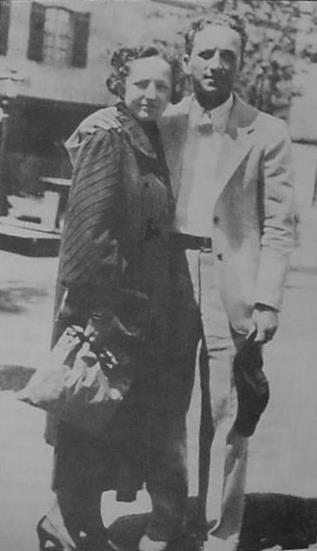
Abe and Beatty Zimmerman 1939.
1993.35.741.184 Robert Shelton Collection, Experience Music Project permanent collection (Bob Dylan’s American Journey, 1956-1966, 2006)
Although Hibbing was the largest of the Iron Range towns, the population was only ten thousand, and the Jewish community was small. "It was quite difficult for us because there weren't too many young Jewish people," says Beatty's aunt, Ethel Crystal, who was like a sister to Beatty because they were close in age. "So we used to go to Duluth to visit our relatives." They were in Duluth, at a New Year's party, when Ethel introduced Beatty to Abe Zimmerman. "He was a doll," says Ethel Crystal. "Everybody liked him." Abe was a quiet, almost withdrawn, young man, and Beatty was vivacity itself, but their differences were complementary.
Beatty graduated from Hibbing High School in 1932.
This photograph:
is left out for two reasons. One it is Duluth, not Hibbing. Two it is not Bob but a niece of Abe's that is said to be the child.

Beatty and Bob Zimmerman, 1945.
Now the fifth daughter on the twelfth night
Told the first father that things weren't right
My complexion she said is much too white
He said come here and step into the light he says hmm you're right
Let me tell the second mother this has been done
But the second mother was with the seventh son
And they were both out on Highway 61.
Some Sunday Morning, Accentuate The Positive.
May 12, 1946 – Mother’s Day Celebration – Duluth, MN
He stamped his foot and commanded attention. Bobby said, ‘If everybody in this room will keep quiet, I will sing for my grandmother."
June 9, 1946 – Aunt Irene’s Wedding Reception – Covenant Club, Duluth, MN
Bob’s first paid performance. An uncle said, proferring a handful of bills, “You’ve got to sing.” He refused. The pleading increased, although the fee remained the same. “So he sang,” his mother said, but not until he had announced: ‘If it’s quiet, I will sing.’” … Everyone was quiet as Bob’s two-song repertoire was repeated. Again the audience cheered, and Bobby walked over to his uncle and took the twenty-five dollars. He approached his mother with his first gate receipts. “Mummy,” he told her, “I’m going to give the money back.” He returned to his uncle and handed him the money. He nearly upstaged the bridal couple.
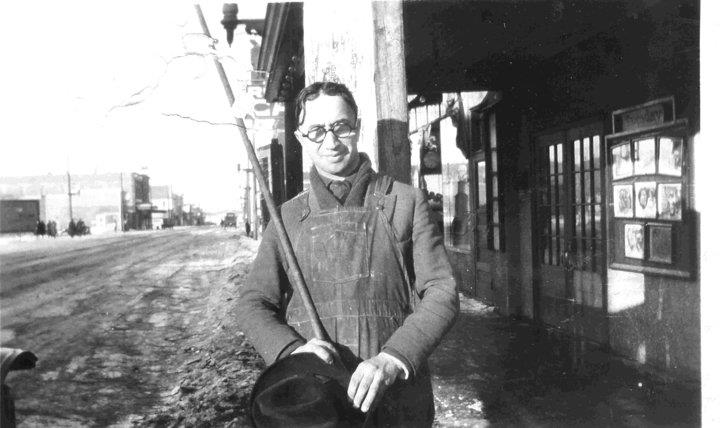
Julius Edelstein (1896-1977) in front of the Victory Theater, 1922.
Benjamin Harold Edelstein (1870-1961), a salesman from Kovno Lithuania had arrived in Hibbing from Superior, aged thirty-six, with his wife, Lybba (1870-1942), and his then six children in 1906. Once established in Hibbing, 'B.H.' abandoned selling furniture and stoves and entered the entertainment business, purchasing the first of many Edelstein theatres, the Victory. As vaudeville gave way to the flickering of the movie screen, B.H. Edelstein expanded his operations to include the Gopher on Howard, the State, also on Howard, and the Homer on 1st. That a town of just eighteen thousand could support four cinemas in the forties suggests just how central the images conveyed from Hollywood became to postwar middle America.
Aaron and Leah Jaffe
Benjamin 1870- and Lybba (Jaffe) (1870-1942) Edelstein Vilkomir, Russia arrived USA 1902
Ben and Florence (Edelstein) 1892- Solemovitz / Stone
Beatty (Stone) Zimmerman 1915-2000
Robert ('Sabse') -1945 and Bessie Solemovitz Lithuania arrived USA 1898
Stone/Edelstein family
The maternal side of Robert Allen Zimmerman’s family.
Dylan’s mother was born Beatrice R. Stone in 1915, and had an older brother, Vernon. Two younger siblings followed, Lewis and Irene. All born in the US, they were the children of Lithuanian Jewish immigrants Benjamin David Solemovitz (born 1883), who changed Solemovitz to Stone, and his wife Florence Sara né Edelstein, herself one of ten children.
Florence Sara was the Florence who would become Bob Dylan’s grandmother — she and the other nine Edelstein children were in turn the sons and daughters of Benjamin Harold Edelstein (born 1870) and Lybba né Jaffe, from Korno in Lithuania. (Benjamin Harold’s parents were David and Ida Edelstein; Ida’s parents were Yehada Aren and Rachel né Berkovitz. Lybba Jaffe’s parents were Aaron Jaffe and Fannie.) Benjamin Harold and wife Lybba, plus the first four of their ten children, left their village of Vilkomir, Russia, in 1902, on the ship Tunisia, arriving into the US at Sault St. Marie, Michigan, by way of Liverpool, St. John, New Brunswick and Montréal. They arrived on Christmas Eve 1902 and settled with relatives at Superior, Wisconsin, across Lake Superior from Duluth. The four children who came with them were Bob Dylan’s grandmother-to-be, Florence Sara (born 1892), Goldie and Julius (1896) and Rose (1899). In Superior, Wisconsin, came Samuel (1903) and Jennie (1905). Their father moved to Hibbing in 1904, brought the rest along in the second half of 1905 and in Hibbing they had their last four children, Max (1906), Mike (1908), Ethel (1911) and Sylvia (1912). These siblings all duly became Beatty’s maternal aunts and uncles. Their father, in partnership with one of his immigrant brothers, Julius, starting with tent shows, set up a chain of Iron Range movie theatres. In Hibbing they acquired the Garden Theater in 1925, renamed it the Gopher and sold it to another chain in 1928. In the 1940s they built a new Hibbing movie house, naming it the Lybba after Benjamin Harold’s wife. On Beatty’s father’s side of the family were the Stones, previously known as the Solemovitzes, again a family of Lithuanian Jewish immigrants. Her father Benjamin David Stone was one of four children, his siblings being Rosy, Eddy and Ida, all the children of Robert aka Samuel Solemovitz (aka Solomawitch aka Salamovitz) and Bessie né Kaner. Robert, the son of Abraham and Mary Solemovitz, arrived in Superior from Lithuania in 1888 or 1889, and five years later Bessie and the children arrived. In 1906 Ben’s younger sister Ida was murdered by a Scot named John Young, who had wanted to marry her. Within a year, her mother Bessie had died ‘of a broken heart’. Her husband remarried in 1909, to another immigrant from Russia, May Levinson, who had three children of her own, Roy, Bennie and Sam.
That same year—three years after his sister’s murder—Ben, then aged 26, started work in Hibbing. There he met Florence Sara Edelstein; they married in 1911 and set up a store at Stevenson Location, 12 miles west of Hibbing, supplying clothing to iron ore miners’ families; when the mine was used up, they opened their store in downtown Hibbing instead. Florence’s grandparents— Benjamin Harold Edelstein’s parents— were still alive when Florence and Ben’s first three children, were born: Vernon in 1910, Beatty on June 16, 1915 and Lewis in 1918. But Florence’s grandmother, Ida Edelstein, died at 69 in Superior in 1922, the year before Ben and Florence’s youngest child, Irene, arrived. Florence’s grandfather, David Edelstein, died aged 73 in 1924. Beatty married Abe Zimmerman at her mother’s house on June 10, 1934. He was 22; she was six days short of her 19th birthday. Six years and 11 months later, she had her first child, Robert Allen, on May 24, 1941. Her grandmother Lybba died the year after, on September 5, 1942. Five years after Robert came Beatty’s second child, David. Her father, Ben Stone, died in 1952; her grandfather, Benjamin Harold Edelstein, survived till January 24, 1961, dying in the same Duluth hospital Bob had been born in almost 20 years earlier. Beatty’s mother Florence, the grandmother who then lived in the Zimmerman house when Bob and David were growing up — the grandmother much praised in Chronicles Volume One — died in March 1964.
Some years after the boys’ father’s death in 1968, Beatty married again, to a Joseph Rutman of St. Paul, Minnesota. Beatty appeared on stage with Bob Dylan, clapping along to the music during the finale of one of the 1975 Rolling Thunder Revue concerts in Toronto, as shown in the photo on page 40 of the booklet inside the 2-CD set Bootleg Series Vol. 5: Bob Dylan Live 1975, The Rolling Thunder Revue, released in 2002. She died in St.Paul, Minnesota, on January 27, 2000. She was 84. She was survived by her younger brother Lewis, Bob Dylan’s uncle, who died at home in Hibbing at the age of 86 on January 24, 2005. Their youngest sister Irene, now Irene Goldfine, is still alive and living in Arizona.
Gray, Michael. The Bob Dylan Encyclopedia. New York: Continuum, 2006, 0826469337, page 642.
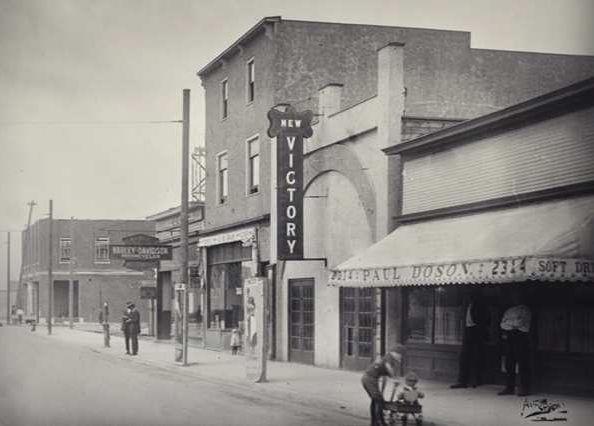
The New Victory Theatre, 2312 1st Ave, Hibbing, MN 55746, the Edelsten's first Hibbing theatre. It became Johnson TV Repair then in 2009 it was a Discount and Pawn Shop and then it became a warehouse.
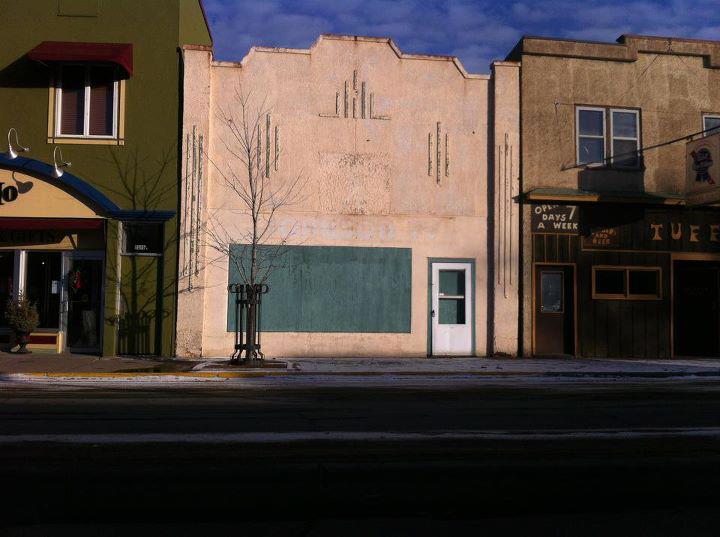
The New Victory Theatre in March of 2012 as a warehouse, just before it was torn down.
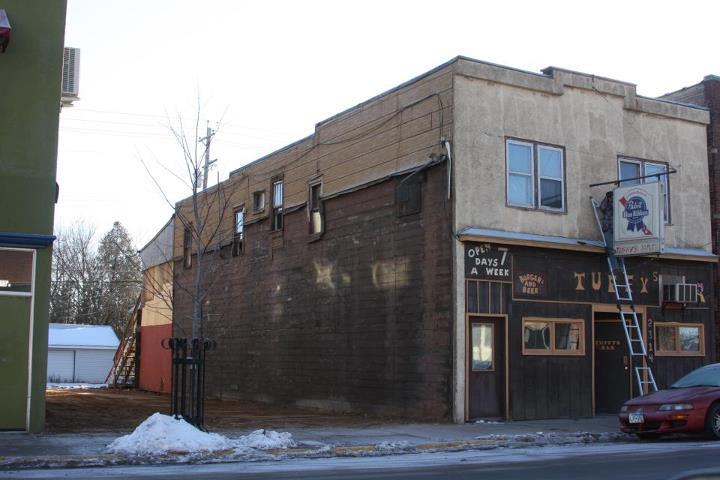
The site after the building was gone... Next door is Tuffy's Bar & Grill 2314 1st Avenue, Hibbing, MN 55746. Burgers and Beer. It was not open for business at the time of this March 2012 photograph.

Lybba Theatre. Swiss Family Robinson was released on 21 December 1960.

Linda Stroback tells us, " We saved the marquee letters from the Lybba Theatre, you can see them up on the wall at Zimmy's in Hibbing! They are lit & look excellent."
400 seats
The Lybba Theatre 2135 1st Avenue, Hibbing, MN 55746 was built in 1947. It closed in October of 1982. In 1984, the building was sold and it is now the home of the Sunrise Deli. The marquee is still used by the deli.
The theater was owned by Max, Julius and Sam Edelstein. It was sold to Mann Theaters in 1976. The 350 car Hibbing Drive-In, 313 Mesabi Drive, Hibbing, MN 55746, opened in 1955 and was sold by the family in 1977. It closed in 1985. Julius died 29 December 1977. Max died 23 October 1994.
The Lybba was named after Lybba Edelstein, wife of Hibbing’s pioneer showman, B. H. Edelstein. Lybba Edelstein’s daughter was Florence Edelstein Stone; Florence’s daughter is Beatty Stone Zimmerman, and Beatty’s son is Robert Allen Zimmerman.
Bob's son, Jesse, has a charity called Lybba.
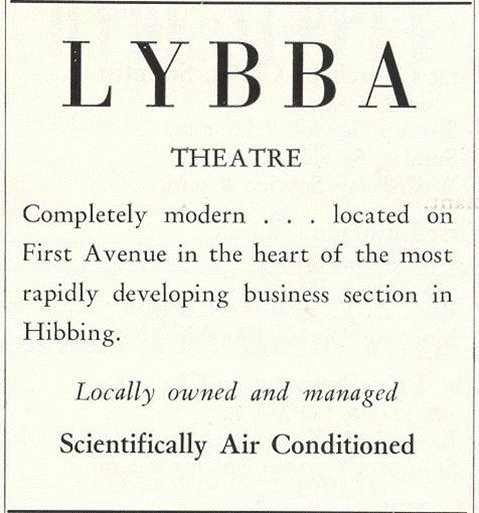
Lybba Theatre
The Lybba had a cry room, a room soundproofed for mothers and babies, but the film sound was played there and the film was visible through glass. It is said that Bob Zimmerman, who did not have to pay to see the films as his family owned the cinemas, also had access to the closed cry room for evening showings. A most private place to take a girl for a heavy date... ;-)
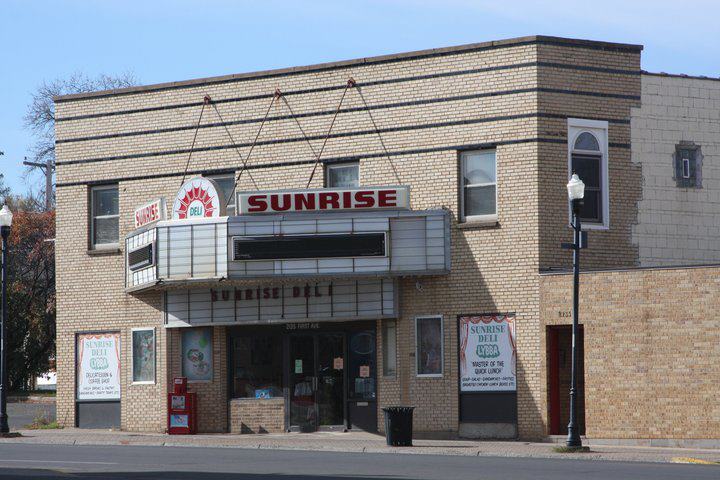
2135 1st Avenue, Hibbing, MN 55746 -- 17 October 2010.
Sunrise Deli. Lybba. Master of the Quick Lunch. Delicatessen and Coffee Shop.
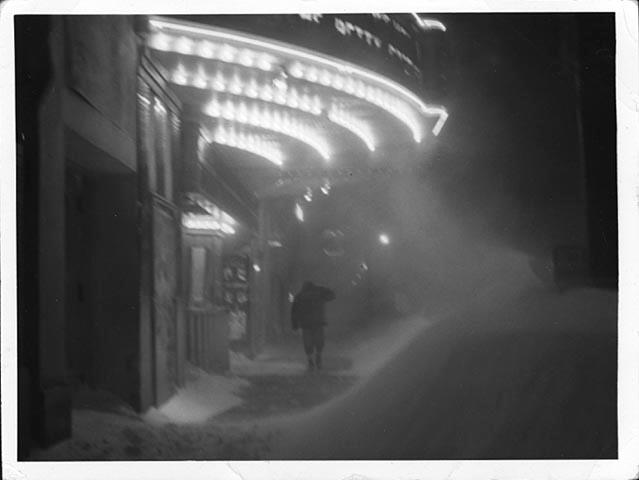
State Film Theater on a Hibbing winter's day!
Photographer: Al Heitman
Photograph Collection 11/11/1940
Location no. QC2.61ca r1
Negative no. 22759
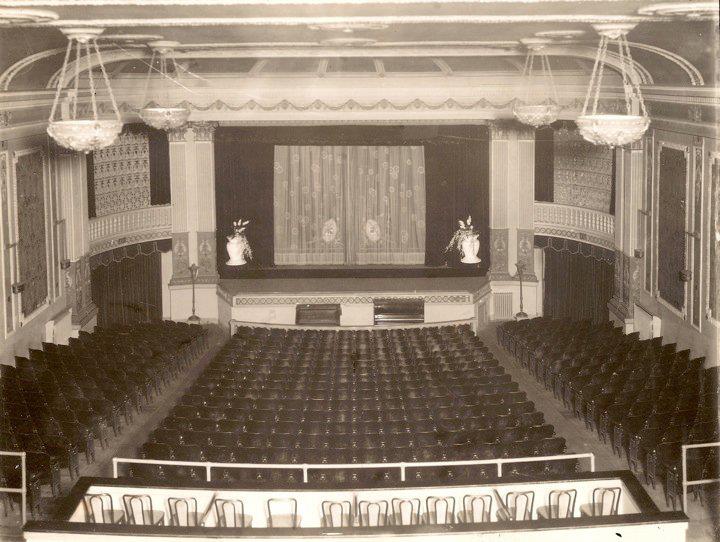
State Film Theater, 307 East Howard Street, Hibbing, MN 55746.
864 seats. Opened 1925. Bought from the Minnesota Amusement Company by Max, Julius and Sam Edelstein in 1964 and then sold to Marvin Mann in 1976. It was later torn down for the expansion of Merchants and Miners Bank, now the Andrew Mason Lees Building.
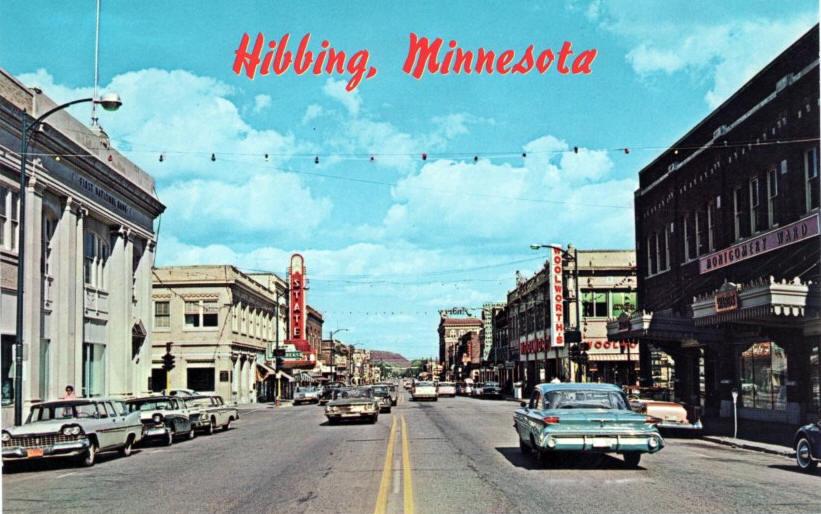
East Howard Street. State Film Theater on the left.
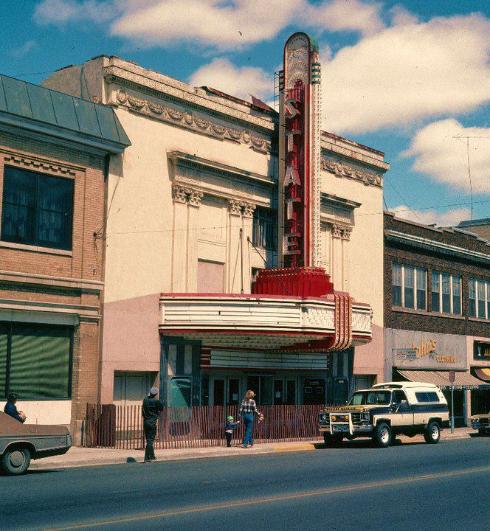
The State Film Theater in 1980 on the day it was demolished.
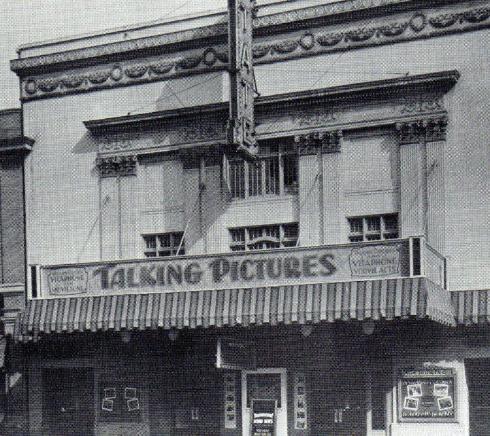
The State Film Theater much earlier...
Vitaphone and Movietone -- Talking Pictures -- Talking Comedy and Vitaphone Vodvil Acts
In 1925-26, film was technologically revolutionized with the formation of the Vitaphone Company (a subsidiary created by Warner Bros. and Western Electric). Warner Bros. launched sound and talking pictures, with Bell Telephone Laboratory researchers, by developing a revolutionary synchronized sound system called Vitaphone (a short-lived sound-on-disc process developed in 1925 that quickly became obsolete by 1931). This process allowed sound to be recorded on a phonograph record that was electronically linked and synchronized with the film projector.
In 1926, William Fox of the Fox Film Corporation responded to Warners' success with its own similar and competing, advanced Movietone system - the first commercially successful sound-on-film process developed in conjunction with General Electric. It added a 'soundtrack' directly onto the strip of film and would eventually become the predominant sound technology.
The other major film studios (Paramount, Loew's, First National and UA) realized the expensive and challenging ramifications of the sound revolution that was dawning, and that talkie films would be the wave of the future. In May 1928, to avoid an inevitable patent war, they signed an agreement with Western Electric to analyze the competing sound systems within the next year and jointly choose a single, standardized sound system.
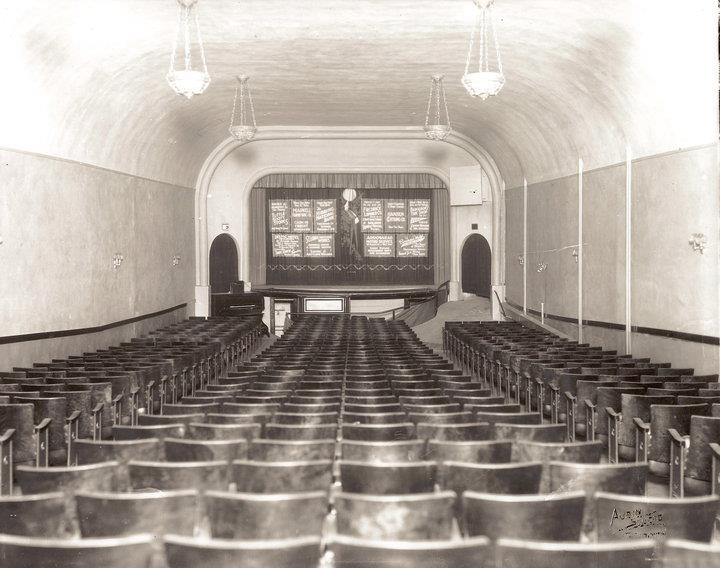
The Gopher Film Theate, 116 East Howard Street, Hibbing, MN 55746. An Edelstein theatre from 1925-1928. 434 seats.
It was originally called the Garden Theater.

Homer Film Theater
Opened 1925. Edelstein owned from 1945.
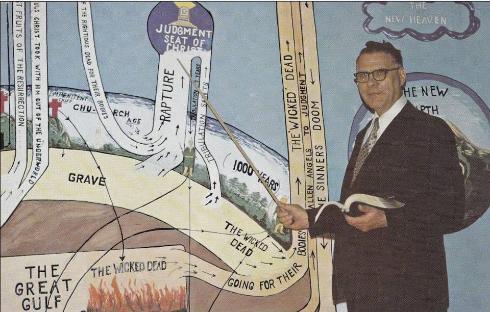
Born Again!
Charles N Curtis travelling Minnesota saving souls!
Mary wore three links of chain
Every link was Jesus name
Keep your hand on that plow, hold on
Oh Lord, Oh Lord, keep your hand on that plow, hold on.
Mary, Mark, Luke and John
All these prophets so good and gone
Keep your hand on that plow, hold on
Oh Lord, Oh Lord, keep your hand on that plow, hold on.
Well, I never been to heaven
But I've been told streets up there
Are lined with gold
Keep your hand on that plow, hold on
Oh Lord, Oh Lord, keep your hand on that plow, hold on.
Oh Lord, Oh Lord, keep your hand on that plow, hold on.
Oh Lord, Oh Lord, keep your hand on that plow, hold on.
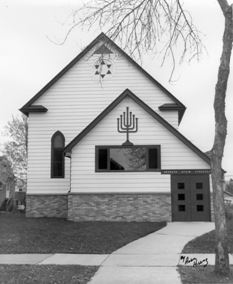
Agudath Achim Synagogue at 2320 2nd Avenue West.
The Jewish community was so small that Hibbing did not have a rabbi. When it came time for Bob to study for his bar mitzvah a rabbi arrived by bus from New York. The rabbi was a very old man, with black robes and a white beard, like a character from the Old Testament. The Jewish community found him a room downtown and, every day after school, Bob went there and studied with him. Bob had his bar mitzvah in May 1954. There was a party at the Androy Hotel, with relatives driving in from Duluth and beyond. Afterward, the Jews did not want to keep the Orthodox rabbi on—he looked too old-fashioned in go-ahead 1954 Hibbing—and so he went back to New York.
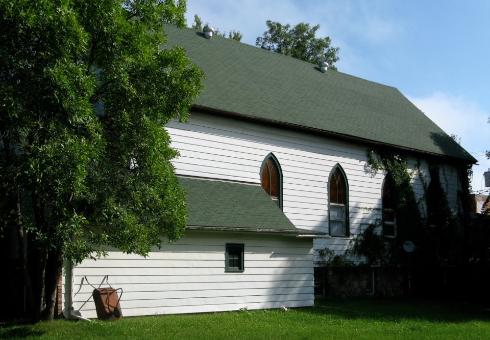
The Agudath Achim congregation bought the Swedish Evangelical Emanuel Lutheran church from the Oliver Mining Company and had it moved from North Hibbing.
I went to church on Sunday and she passed by,
My love for her is taking such a long time to die...

Upper left is the synagogue when it was still a Swedish Lutheran Church and still in North Hibbing.
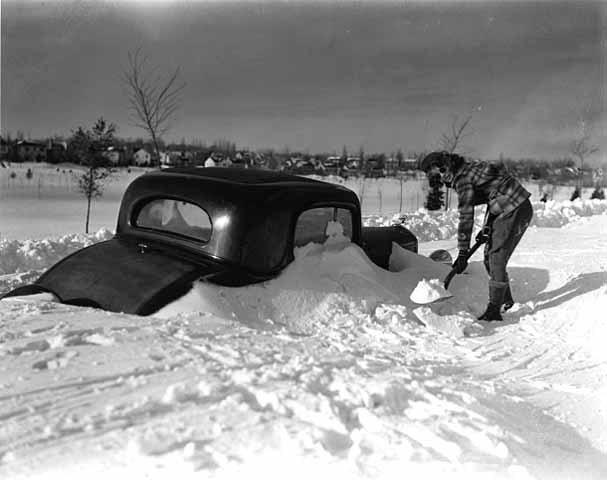
"... and the snow was outrageous"
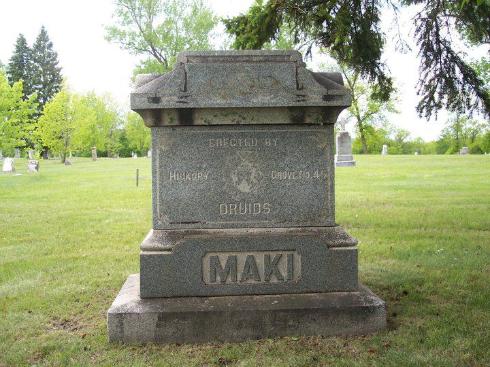
Gust and Amelia Maki grave, 1905. Maki is a Finnish surname meaning "hill".
A grove is a group of Druids which has been established, and has a third order Druid as its Arch-Druid. The Maki's were in Hickory Grove Number 45.
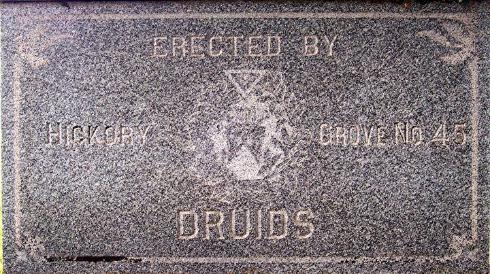
Hickory Grove No 45
Erected by Druids
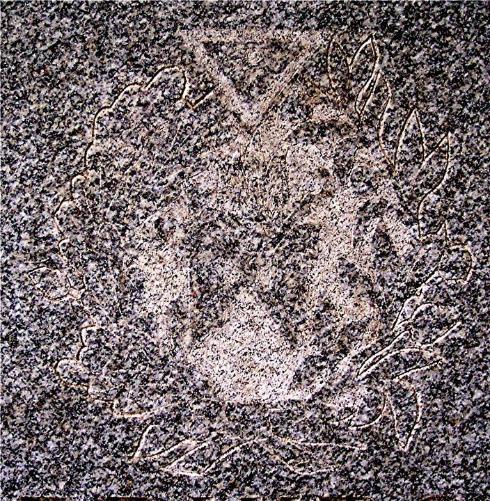
Eye of Horus

Bob Dylan falcon eye symbol.
The Eye of Horus is an ancient Egyptian symbol of protection, royal power and good health. Horus is the ancient Egyptian sky god usually depicted as a falcon. His right eye was associated with the sun Ra.
The eye symbol represents the marking around the eye of the falcon, including the "teardrop" marking sometimes found below the eye.
http://upload.wikimedia.org/wikipedia/commons/9/99/Peregrine_Falcon_head_shot.jpg
The teardrop, the dark streak of feathers beneath the falcon's eye, is called a malar (cheek) stripe. The biological theory for this feature is that, much like athletes putting blacking under their eyes to prevent glare, this also prevents glare from reflecting off their feathers.

Hibbing Toboggan Slide.
Is this Pill Hill or an earlier one elsewhere?
"There was one of these on Pill Hill in the 1950's. As a matter of fact, I went tobogganing there, several times, with my junior hight school friend, Bobby Zimmerman. On the same toboggan!! This may not be the same slide -- but it sure brings back memories. -- Sally McHale Davidson
"Pill Hill" was started as an iron ore dump. It is located on Seventh Avenue and Twenty-Sixth Street which up the hill turns into Highland Park. In the winter, people could come up on the hill and use the toboggan slide that used to be there.
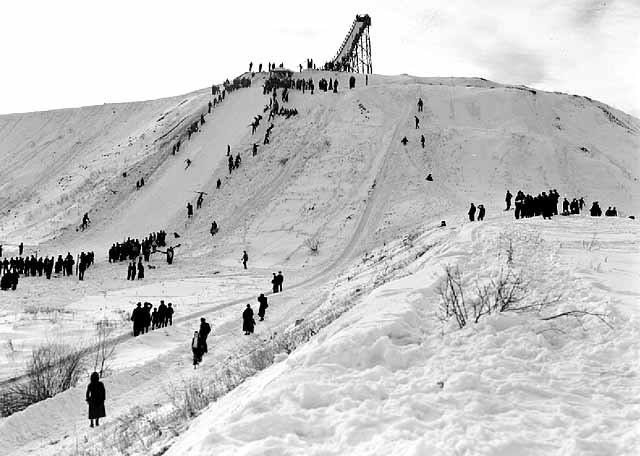
Ski Jump, near the Toboggan Slide.

St. Louis County Fair, Hibbing
Now, I come in on a Ferris wheel
An’ boys, I sure was slick
I come in like a ton of bricks
Laid a few tricks on ’em
Goin’ back to Pittsburgh
Count up to thirty
Round that horn and ride that herd
Gonna thread up!
Lo and behold! Lo and behold!
Lookin’ for my lo and behold
Get me outa here, my dear man!
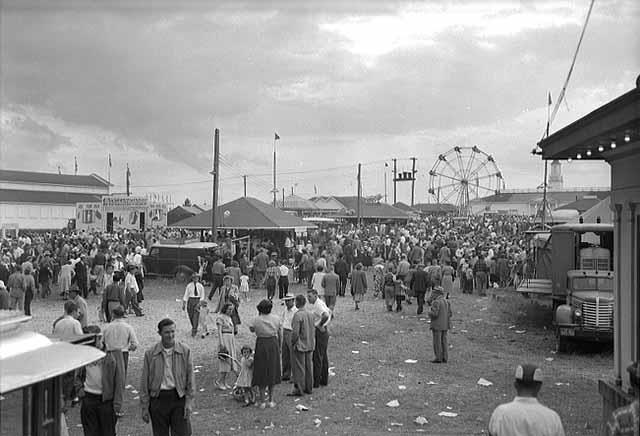
St. Louis County Fair, Hibbing
Well, it’s all up from Florida at the start of the spring
The trucks and the trailers will be winding
Like a bullet we’ll shoot for the carnival route
We’re following them dusty old fairgrounds a-calling
From the Michigan mud past the Wisconsin sun
’Cross that Minnesota border, keep ’em scrambling
Through the clear county lakes and the lumberjack lands
We’re following them dusty old fairgrounds a-calling
Hit Fargo on the jump and down to Aberdeen
’Cross them old Black Hills, keep ’em rolling
Through the cow country towns and the sands of old Montana
We’re following them fairgrounds a-calling
As the white line on the highway sails under your wheels
I’ve gazed from the trailer window laughing
Oh, our clothes they was torn but the colors they was bright
Following them dusty old fairgrounds a-calling
It’s a-many a friend that follows the bend
The jugglers, the hustlers, the gamblers
Well, I’ve spent my time with the fortune-telling kind
Following them fairgrounds a-calling
Oh, it’s pound down the rails and it’s tie down the tents
Get that canvas flag a-flying
Well, let the caterpillars spin, let the Ferris wheel wind
Following them fairgrounds a-calling
Well, it’s roll into town straight to the fairgrounds
Just behind the posters that are hanging
And it’s fill up every space with a different kind of face
Following them fairgrounds a-calling
Get the dancing girls in front, get the gambling show behind
Hear that old music box a-banging
Hear them kids, faces, smiles, up and down the midway aisles
We’re following them fairgrounds a-calling
It’s a-drag it on down by the deadline in the town
Hit the old highway by the morning
And it’s ride yourself blind for the next town on time
Following them fairgrounds a-calling
As the harmonicas whined in the lonesome nighttime
Drinking red wine as we’re rolling
Many a turnin’ I turn, many a lesson I learn
From following them fairgrounds a-calling
And it’s roll back down to St. Petersburg
Tie down the trailers and camp ’em
And the money that we made will pay for the space
From following them dusty old fairgrounds a-calling
Photographer: Al Heitman
Photograph Collection 8/12/1951
Location no. MS2.9 HB9 p4
Negative no. 22708
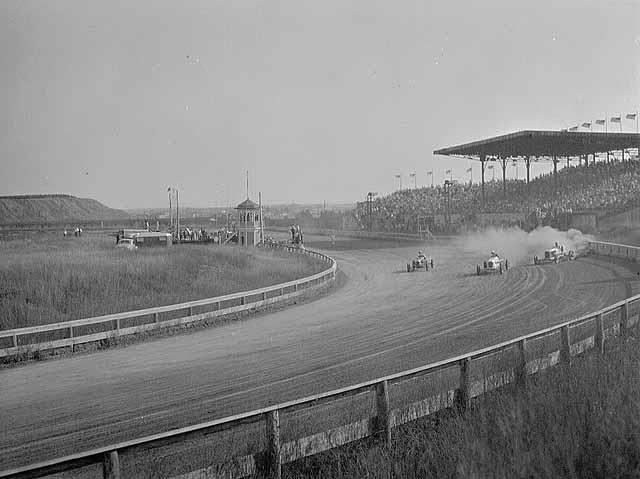
St. Louis County Fair, Hibbing. Automobile races,
Photographer: Al Heitman
GV3.84 r1 22763
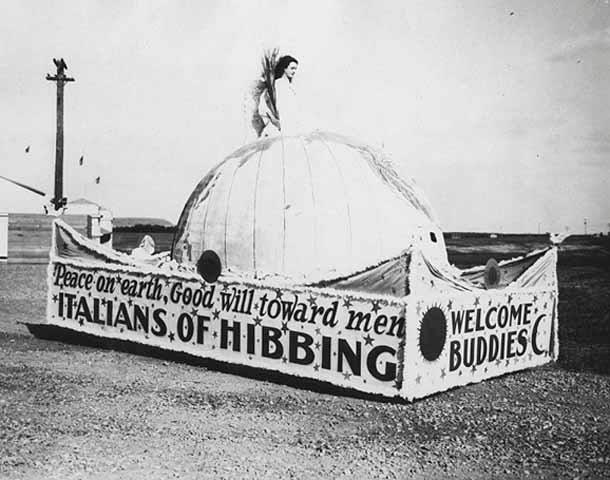
Welcome Buddies!
A Hibbing girl sure could wear a serious skirt or dress.
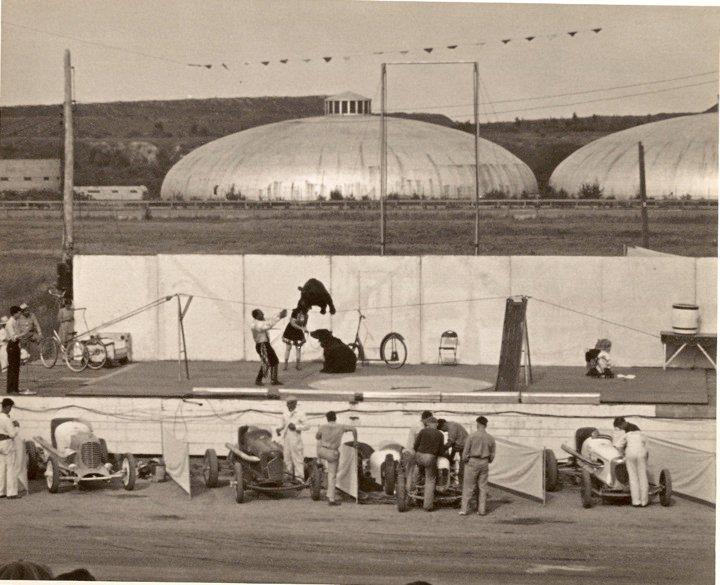
Saint Louis County Fair, Hibbing
What a show. A bear on a tight rope. Bicycles ready to go on the tightrope, ridden by humans or bears? Racing cars ready to race. All in front of Hibbing's bare breasts visible from space (also known as the world famous sewage works). And on the right...

... as we turn our heads to the right we see more than bears, bicycles and fast cars -- next we see high in the sky acrobats! Bob Zimmerman lived in a town where a good show was paramount, from what was on stage at the Hibbing High School auditorium to down by the sewage works. What did events like this teach him?
In the distance. A mine shaft super-structure? No. It is one of the many ski jumps that were in various places around Hibbing.
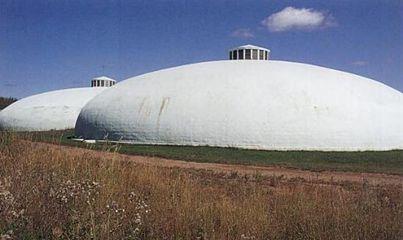
The infamous Hibbing breasts which could be seen from outer space!

Destruction of the Hibbing breasts, i.e. the pioneering sewage works, the Hibbing Disposal Plant.
Hibbing Waste Treatment Plant, 1300 East 23rd Street, Hibbing, MN.
One of America's earliest recipients of Zeiss-Dywidag thin-shell domes was Hibbing, work began on a $439,946.00 sewage treatment plant for the community in 1938. This architectural milestone was put on the National Register of Historic Places in 1991. Hibbing eventually tore it down...
National Register of Historic Places on August 9, 1991
Reference number: 91001022
Architectural style: Modern Movement: Moderne
Areas of significance: Social History; Health/Medicine; Engineering
Gardner, Denis. Minnesota Treasures: Stories Behind the State's Historic Places. St. Paul, MN: Minnesota Historical Society Press, 2004, 0873514718, page 101 ff. (Section 4: Industry and Technology -- Hibbing Disposal Plant)

Come gather ’round friends
And I’ll tell you a tale
Of when the red iron pits ran plenty
But the cardboard filled windows
And old men on the benches
Tell you now that the whole town is empty
In the north end of town
My own children are grown
But I was raised on the other
In the wee hours of youth
My mother took sick
And I was brought up by my brother
The iron ore poured
As the years passed the door
The drag lines an’ the shovels they was a-humming
’Til one day my brother
Failed to come home
The same as my father before him
Well a long winter’s wait
From the window I watched
My friends they couldn’t have been kinder
And my schooling was cut
As I quit in the spring
To marry John Thomas, a miner
Oh the years passed again
And the givin’ was good
With the lunch bucket filled every season
What with three babies born
The work was cut down
To a half a day’s shift with no reason
Then the shaft was soon shut
And more work was cut
And the fire in the air, it felt frozen
’Til a man come to speak
And he said in one week
That number eleven was closin’
They complained in the East
They are paying too high
They say that your ore ain’t worth digging
That it’s much cheaper down
In the South American towns
Where the miners work almost for nothing
So the mining gates locked
And the red iron rotted
And the room smelled heavy from drinking
Where the sad, silent song
Made the hour twice as long
As I waited for the sun to go sinking
I lived by the window
As he talked to himself
This silence of tongues it was building
Then one morning’s wake
The bed it was bare
And I’s left alone with three children
The summer is gone
The ground’s turning cold
The stores one by one they’re a-foldin’
My children will go
As soon as they grow
Well, there ain’t nothing here now to hold them
http://www.minnesotahumanities.org/Resources/Oragnized%20Labor%20and%20the%20Iron%20Ore%20Miners.pdf
http://collections.mnhs.org/MNHistoryMagazine/articles/41/v41i02p082-094.pdf
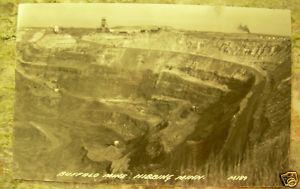
Buffalo Mine Hibbing Minnesota
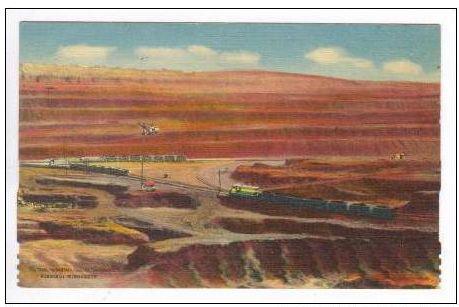
The Hull Rust Mahoning Mine in Hibbing (1953) over a century after iron ore was first discovered there. An impressive geological formation. During Bob Zimmerman’s childhood the mines in Hibbing produced 25% of the United States' iron ore. Within the history of late 19th-early 20th century European emigration was driven by the voracity of the mines’ need for labour. People poured in from Finland, Ukraine, Italy, their different skills put to work in the mines themselves and in the town. Assimilation was fairly rapid, rough, and compulsory. Difference was accommodated, tolerance was a necessity, yet the flexibility of the diverse community was also bounded and isolated, rather than continually challenged and renewed.
My mother's from the Iron Range Country up north
The Iron Range is a long line a mining towns
that begin at Grand Rapids and end at Eveleth
We moved up there to live with my mother's folks
in Hibbing when I was young -
Hibbing's got the biggest open pit ore mine in the world
Hibbing's got schools, churches, grocery stores an' a jail
It's got high school football games an' a movie house
Hibbing's got souped-up cars runnin' full blast
on a Friday night
Hibbing's got corner bars with polka bands
You can stand at one end of Hibbing's main drag
an' see clear past the city limits on the other end
Hibbing's a good ol' town
I ran away from it when I was 10, 12, 13, 15, 151/2, 17 an' 18
I been caught an' brought back all but once
I wrote my first song to my mother an' titled it "To Mother"
I wrote that in 5th grade an' the teacher gave me a B+
I started smoking at 11 years old an' only stopped once
to catch my breath
I don't remember my parents singing too much
At least I don't remember swapping any songs with them

The Hull Rust Mahoning Mine
First ore shipments from the big pit were made in 1895. It became a spectacular man-made Grand Canyon of nearly 1,600 acres. At its maximum, the area covered is over three miles long, a mile wide and 535 feet deep.
The pit is located where the original town of Hibbing once stood. Frank Hibbing obtained the first lease to mine ore in the area in December 1891. Beginning as an underground mine of small proportions, the land eventually became one vast open pit as other mines began to develop and emerge.
Since ore shipments began from the Hull Rust in 1895, over 519 million tons of waste material and nearly 690 million tons of iron ore have been removed from the pit. Someone has figured that all the material removed - approximately 1.2 billion gross tons - is equivalent to digging a small tunnel from Minnesota through the core of the earth and out the other side.
http://collections.mnhs.org/MNHistoryMagazine/articles/40/v40i07p340-347.pdf

Hull Rust Mahoning Mine looking to the northwest from the east end of the mine.

North Hibbing before the whole town was moved south to allow open pit mining under the old town.
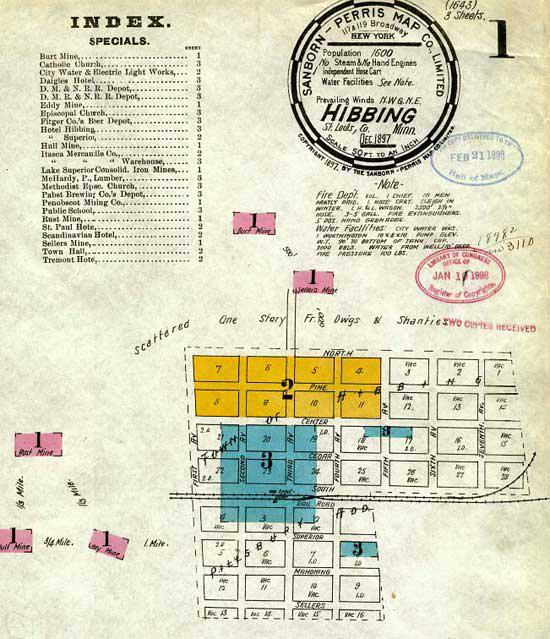
Hibbing map of the original town, now a very large hole in the ground.
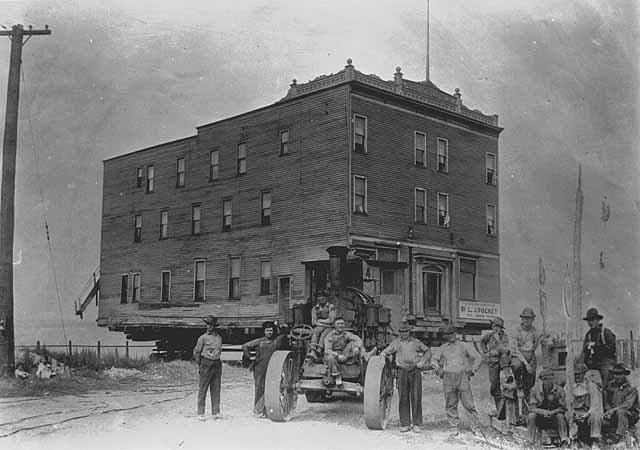
Negotiations between the Oliver Mining Company and the town finally brought about a plan whereby the entire place would relocate to a site two miles south near Alice. The company, for its part, agreed to develop the downtown buildings with low interest loans that could be paid off over the years by the retailers. New civic structures such as Hibbing High School, the Androy Hotel, the Village Hall and the Rood Hospital were also constructed with mining company money. In all, about 200 structures were moved down the First Avenue Highway, as it was called, to the new city. These included a store and even a couple of large hotels. Only one structure didn't make it. The Sellers Hotel tumbled off the rollers and crashed to the ground leaving, as one witness said, "an enormous pile of kindling". The move started in 1919, and the first phase was completed in 1921. Known today as "North Hibbing", this area remained as a business and residential center through the 1940s when the mining companies bought the remaining structures. The last house was moved in 1968.
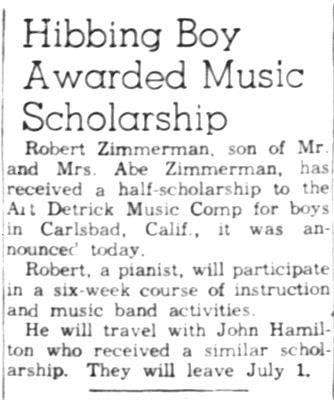
What ever happened to John Hamilton?
Hibbing Boy Awarded Music Scholarship
Robert Zimmerman, son of Mr. And Mrs Abe Zimmerman, has received a half-scholarship to the Art Detrick Music Comp [Camp] for boys in Carlsbad, Calif., it was announced today.
Robert, a pianist, will participate in a six-week course of instruction and music band activities.
He will travel with John Hamilton who received a similar scholarship. They will leave July 1.
-- Hibbing Daily Tribune, 6 June 1960.
"It was around this time that Bob began playing music, for the Zimmermans had acquired a Gulbranson spinet piano. Beatty had played when she was young and Abe could pick out a tune, but the piano was bought mostly in the hope that the boys might show an interest. A cousin named Harriet Rutstein gave Bob and his six-year-old brother initial tutoring. "David, who was a very, very smart boy, took it all in ... and he could play better than Bob," says his uncle, Lewis Stone. "He was very musically inclined." Bob became frustrated and dispensed with his cousin's help, announcing, "I'm going to play the piano the way I want to." He proceeded to teach himself, and without ever learning how to read music. The boys were encouraged to take up other instruments, too. Bob tried the trumpet and saxophone before settling on acoustic guitar, working with the Nick Manoloff Basic Spanish Guitar Manual."
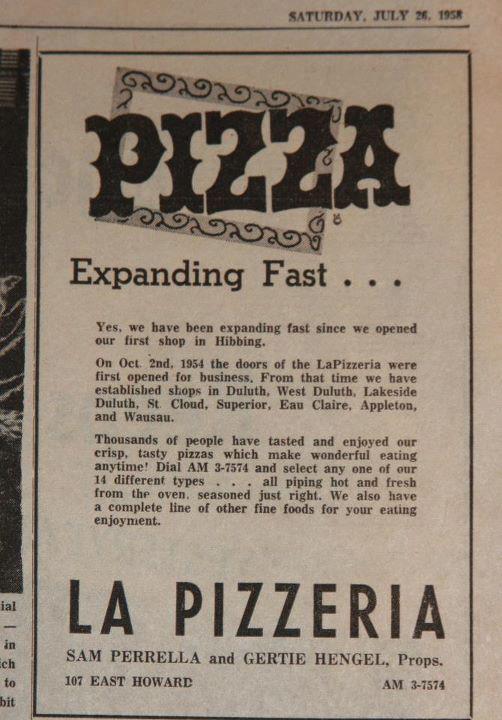
Sam Perella moved his small café to 107 East Howard in Hibbing in 1954, and Sammy’s Pizza was born.
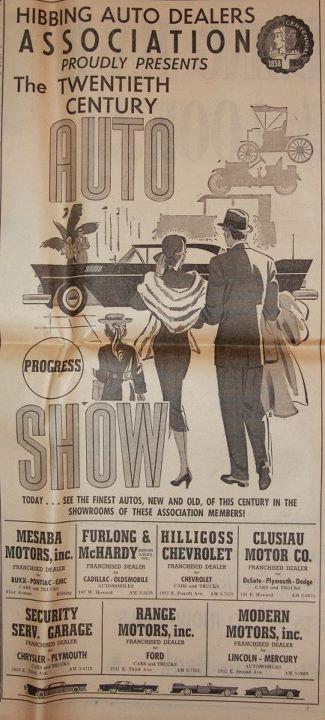
1958 Hibbing Auto Show
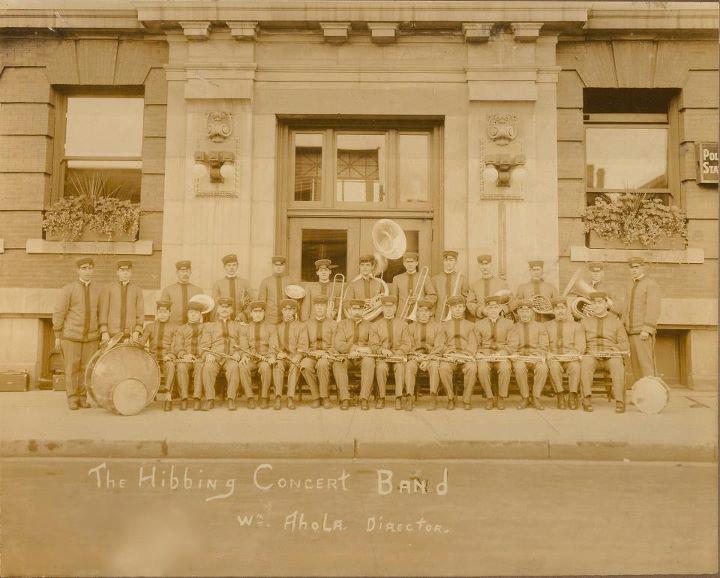
The Band
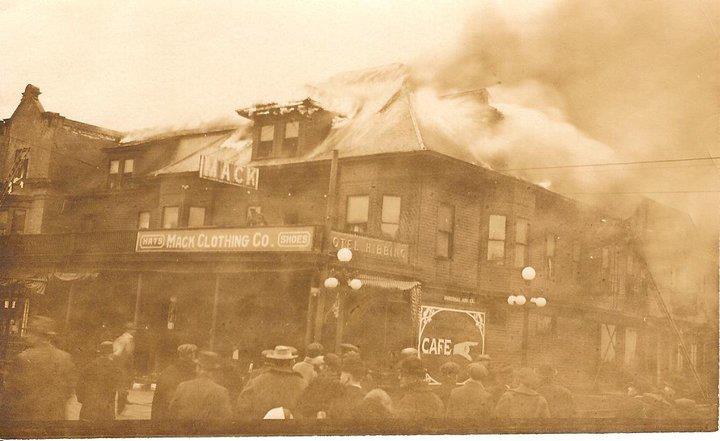
Mack Clothing, Hotel Hibbing and its Café on fire?
No.
It is just the smoke coming out of the roof. The fire is in the building behind.
"At first, it appeared to be happening at the Hotel Hibbing. The fire chief and some of his men came out to investigate reports of smoke at the hotel. But it turned out that the fire was at the Healy Theatre, which was located at the rear of the hotel. The theater was demolished, and the hotel survived - this time. It would be doomed by another fire a few years later.
The story of the Healy Theatre fire was told by the Mesaba Ore in its issue of Saturday, Jan. 13, 1912:
The Healy theatre, located at the rear of the Hotel Hibbing, on Cedar Street, was completely destroyed by fire at 1 o'clock this morning. The origin is not known, but it is thought to have been of incendiary nature, as no one connected with the establishment had been inside of it all day yesterday. The building, which cost in the neighborhood of forty thousand dollars, is a total loss.
It was the property of Representative John A. Healy, also proprietor of the Hotel Hibbing, which had a narrow escape from going the way of the theatre. At about twelve o'clock last night smoke was detected in the lobby of the Hotel Hibbing. A silent alarm was sent to the fire department, and Chief McIllhargy and several men went to the hotel immediately, where a thorough search was made of that building, but for a time they were unable to locate the fire.
At 1 o'clock however, it was learned that the smoke was issuing from the Healy theatre. An alarm was sent to the departments, both of which answered. The firemen fought to confine the fire to the rear of the building, where it had evidently got its start, but it had gained too great a headway, and before long the entire roof was ablaze.
The guests and occupants of the Hotel Hibbing building began at once to remove their belongings to the street, as it looked as though that building was doomed to go with the theatre. For a time all hope for the hotel building was given up by the spectators, but the firemen put forth every effort to confine the fire to the theatre, and with the help of the fire wall nearest the hotel building their efforts were successful.
A great deal of the fixtures and furniture of the hotel was removed in anticipation of the destruction of that building, and many people living in buildings north of the burning theatre had moved their belongings out onto the sidewalk, expecting that if the fire communicated to the hotel building all of the north end of the town would be destroyed.
By 3-30 o'clock the firemen had the fire well under control, and in another half hour all danger to surrounding buildings was over. Mr. Healy carried about twenty-five thousand dollars insurance on the demolished structure. He had just recently leased it to Messrs. H. Seigel, of Virginia, and L.F. Allerdt, of Chicago, on a five-year lease. The house was to have been open to vaudeville on February 1.
The Healy house was opened in the winter of 1909, and has always been a favorite with Hibbing theatre-goers. It was finished nicely inside, and the exterior, which was of fireproof brick, put up a splendid appearance.
Jack Lynch can be reached at: jlynch@hibbingdailytribune.net
Saturday 13 January 1912.

Miles From Hibbing
Winnipeg 412, Minneapolis 223, Duluth 75 ...
On January 31, 1959, during his senior year in high school, Bob made a trip to Duluth to see Buddy Holly, the Big Bopper, Ritchie Valens and Dion & the Belmonts. Two nights later, the three headliners gave their final show in Clear Lake, Iowa, and died in a plane crash. The "Day the Music Died" marked the symbolic end of rock's innocence, and the Duluth concert was a star-crossed meeting of rock's two first eras. Bob recalled the the concert, and making eye contact with Buddy Holly, in his 1998 Grammy acceptance speech.

Hibbing, Minnesota
Bob Dylan: ‘it’s where I was raised an went t school . . . my youth was spent wildly among the snowy hills an sky blue lakes, willow fields an abandoned open pit mines. contrary t rumors, I am very proud of where I’m from . . .’
Hibbing is the least populous and the most important place in Bob’s Minnesota past. Up from St. Paul, old highway 65 is snowy by November. Flat, frozen fields, Dutch-roof barns, loblolly pines and stripped silver birch trees, Lutheran churches, dilapidated fencing, pick-up trucks more frequent than cars. A timeless scenery of telegraph poles and roadside mailboxes, the aluminium-grey road stretching out flat ahead; signs for Jumbo Leeches and Flathead Worms, snowmobiles for sale, ‘Meat Raffle every Saturday’. A hundred miles north of St. Paul you pass through McGrath, pop. 62, with its Catholic Church, Calvary Presbyterian Church and Pliny Graveyard. Then trailer-homes and more white clapboard than before, more and more picturesque old barns, grain-elevators like cocktail shakers.
The closer you come to the Iron Range towns, the narrower and emptier the road grows, and the taller the trees, and the more the banks of snow press in from the verges. The whole hushed place turns into Winter Wonderland, and cocooned inside it, Hibbing shines and twinkles like the set for an old Perry Como Christmas Special. It would have been in Canada but for a mistake on an historic map. Deep in snow but easy to move around in, it epitomises pleasant, old-fashioned small-town life. It’s not such a small town, either. At 186 square miles, its grid of leafy, spacious streets is the state’s largest by area. The people are exceptionally equable, and make you welcome. It almost makes you wonder why Bob ever left. He lived here from the age of six. To begin with, he slept on the floor in Grandma Florence’s house; later, in the front room at 2425 7th Avenue East, his boyhood home, Bob practised in his first and nameless beat group, survived his Bar Mitzvah party and stared out of the window dreaming of escape. It was a mere couple of blocks’ walk to Hibbing High School.
And what a school. You’d never know it from anything Bob’s let slip, but iron ore built Hibbing a school of palatial grandeur that cost four million dollars in 1920–23, with a sanitised medieval castle exterior in brick and Indiana limestone, hand-moulded ceilings, a 75-foot-long oil painting in the library, marble steps with solid brass handrails and, in the 1,825-seater auditorium, six Belgian crystal chandeliers now worth a quarter of a million each and a stage that can hold the Minnesota Symphony Orchestra.
In 1958, with his second group, the Golden Chords, Dylan stood hammering on Hibbing High School’s 1922 Steinway Grand piano (breaking a pedal in the process) and shouting out rock’n’roll songs at the annual student concert . . . and got laughed at, up there on stage in an auditorium so lavish and ornate, and with such acoustic excellence, that it justifies Stephen Scobie’s point that ‘Every stage Bob Dylan has played on for the past thirty years has been, after Hibbing High School Auditorium, an anticlimax.’
Bob Dylan: ‘A train line cuts the ground / showin’ where the fathers an’ mothers / of me an’ my friends had picked / up an’ moved from / north Hibbing / t’south Hibbing. / old north Hibbing . . . deserted / already dead / with its old stone courthouse / decayin’ in the wind . . .’
Bobby often explored North Hibbing’s ghosttown, where everyone lived before they moved them two miles south to dig out the ore they were sitting on. The whole place is just snow-covered ground, close to the edge of the vast, vast hole far down below, filled like a lake of iron-brown water. This is the world’s largest open pit mine: ‘the biggest hole dug by man’ on the planet, as Hibbing loves to boast.
‘Hibbing’s got schools, churches, grocery stores an’ a jail . . . high school football games and a movie house . . . corner bars with polka bands. . . . Hibbing’s a good ol’ town.’
Bob’s mixed feelings about Hibbing are expressed perfectly in that one last line from ‘My Life in a Stolen Moment’, and he and it have had a difficult relationship ever since he left.
In consequence, to the soul’s delight and the professional eye’s puzzlement, there is no exploitation of Dylan’s incandescent name by the Heritage Industry. Until the last two or three years, Bob Dylan remained conspicuously absent from Minnesota tourism bumph. Now there is an annual series of low-key events called ‘Dylan Days’, and the street he lived on has been renamed Dylan Drive (though East 7th Avenue still remains the official postal address).
Hibbing’s 1990s coffee-table puffery ‘On the Move Since 1893’ managed only this: ‘Some contemporary well-known natives include Rudy Perpich; Kevin McHale; Jeno Paulucci, founder of Jeno’s Pizza; Bob Dylan, folk musician, songwriter; Roger Maris and Vincent Bugliosi, Charles Manson Trial prosecutor’. Thirty-five miles away, the Judy Garland Museum welcomes you to the Garland Birthplace Historic Home, Grand Rapids (‘It’s a swell state, Minnesota. . . . We lived in a white house with a garden. It’s a beautiful, beautiful town’, says Judy on the brochure in the Minnesota tourism press-pack); in Duluth, Dylan’s birthplace home is disregarded; in Hibbing, the many pilgrims who come to the 7th Avenue house must simply decide whether to ring the bell and disturb the present owner or not.
When the Zimmerman house went on sale in 1989, the realtor had enquiries from all over the Dylan-fan world, and thought he’d make his fortune. This came to nothing, and Greg French paid $45,000 for the flat-roofed, two-storey 1940s property in Mediterranean Moderne style, not because it was Dylan’s but because it was the best bargain in the neighbourhood at the time. Once, a state tourism ‘PR specialist’ called, to ask Greg if he’d consider doing B&B. That was their big idea for the boyhood home of one of the 20th century’s greatest artists. Meanwhile downtown there’s only the bar-cafe called Zimmy’s to cater to the swell of Dylan-visitors, a swell that cannot but increase.
Those who actually knew him in the past—ex-classmates like Larry Furlong and Margaret Toivola—feel neither spurned nor uncomprehending of Dylan’s quantum- leap away. More importantly, Dylan has written beautifully in poetry and song about these places and their wintry magic. In interviews too, he has often re-affirmed his pride in his formative Iron Range, North Country roots:
‘I’m that color. I speak that way. . . . My brains and feelings have come from there. . . . The earth there is unusual, filled with ore. . . . There’s a magnetic attraction there: maybe thousands of years ago some planet bumped into the land there. There is a great spiritual quality throughout the mid-West. Very subtle, very strong, and that is where I grew up’.
Gray, Michael. The Bob Dylan Encyclopedia. New York: Continuum, 2006, 0826469337, page 312f.
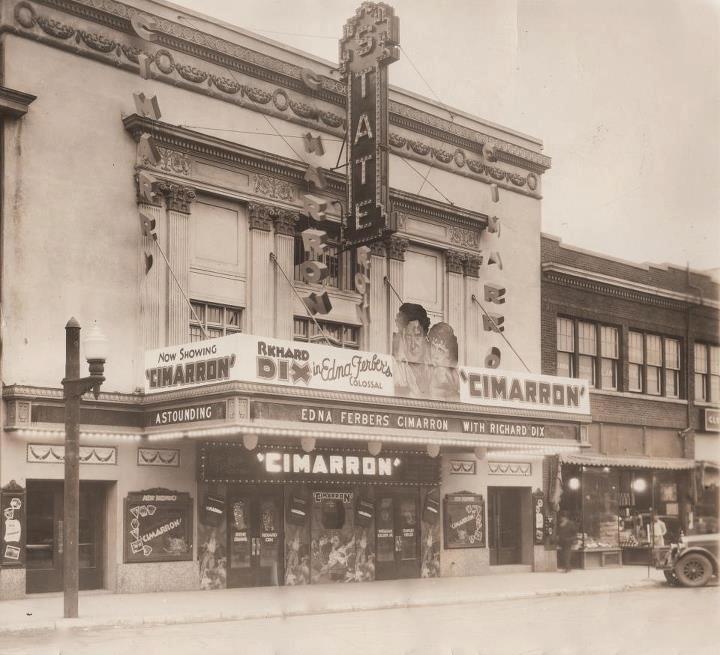
The State Film Theater seen from outside.
Now Showing 'Cimarron'
Richard Dix in Edna Ferber's Colossal 'Cimarron'
Astounding Edna Ferber's Cimarron with Richard Dix.
The full official tag line for this film was "Edna Ferber's Mighty Novel Becomes The Towering Colossus Of The Films!"
Note the name three times in letters in the air on wires!
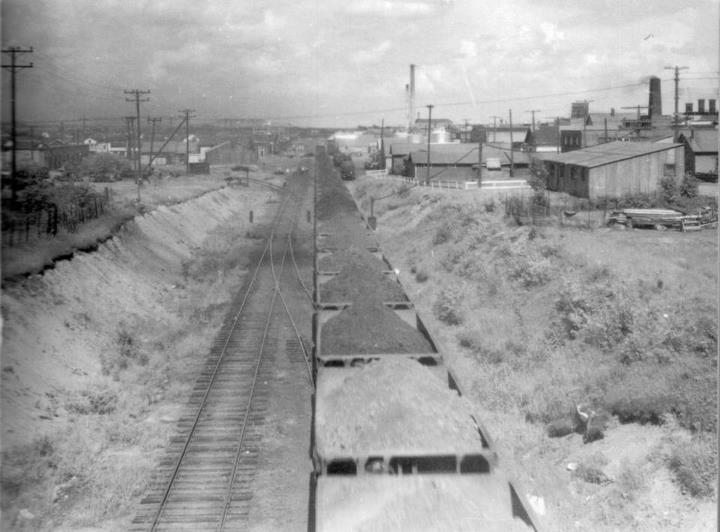
Ore train heading east through Hibbing.
"... till I heard the sound
A the iron ore cars rollin' down ...
I'd shyly wave t' the throttle man
An' count the cars as they rolled past"
-- Bob Dylan, 1963
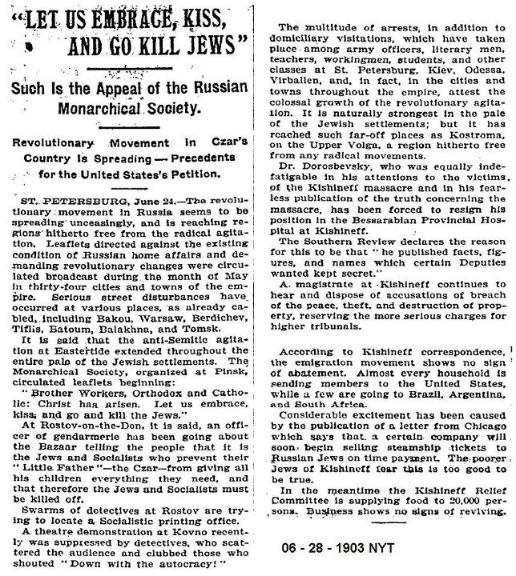

Moving the Hibbing Hotel from North Hibbing to South Hibbing, 1921.
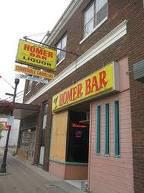
Homer Bar or Homer Tavern, 2213 1st Avenue, Hibbing, MN 55746.
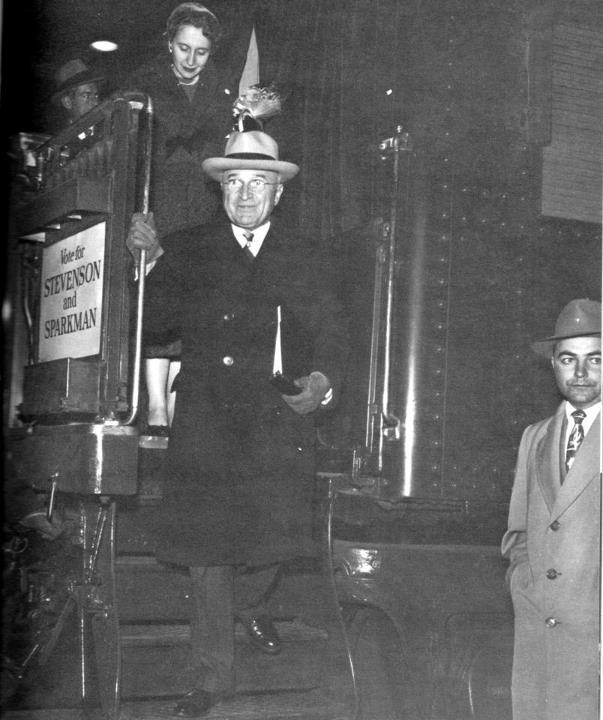
President Truman and his wife, Bess, arriving in Hibbing, 1952.
Did you ever have the standard boyhood dream of growing up to be President?
DYLAN: No. When I was a boy, Harry Truman was President; who'd want to be Harry Truman?
-- Playboy, 1966.

Frank Hibbing statue, Hibbing, Minnesota.

Chet Crippa entertaining, 1950.
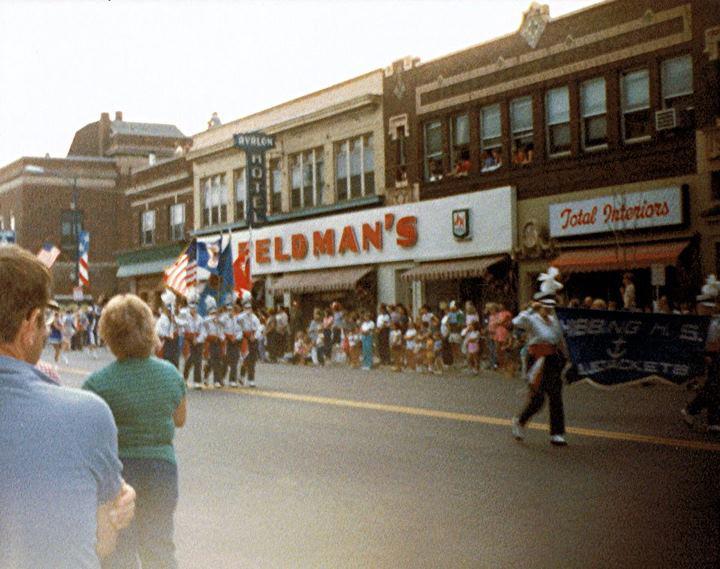
The things I did growing up were the things I thought everybody did-march in parades, have bike races, play ice hockey.
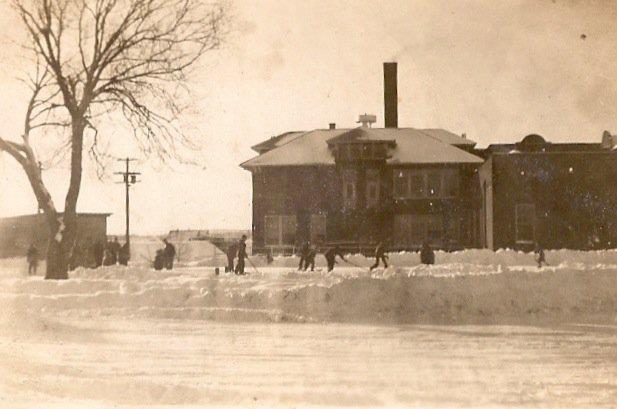
"The things I did growing up were the things I thought everybody did-march in parades, have bike races, play ice hockey. (Not everyone was expected to play football or basketball or even baseball, but you had to know how to skate and play ice hockey.)"
In winter Hibbing would have many ice rinks for skating and hockey, all you needed was snow banks, cold temperatures, running water and patience and you could make a rink.
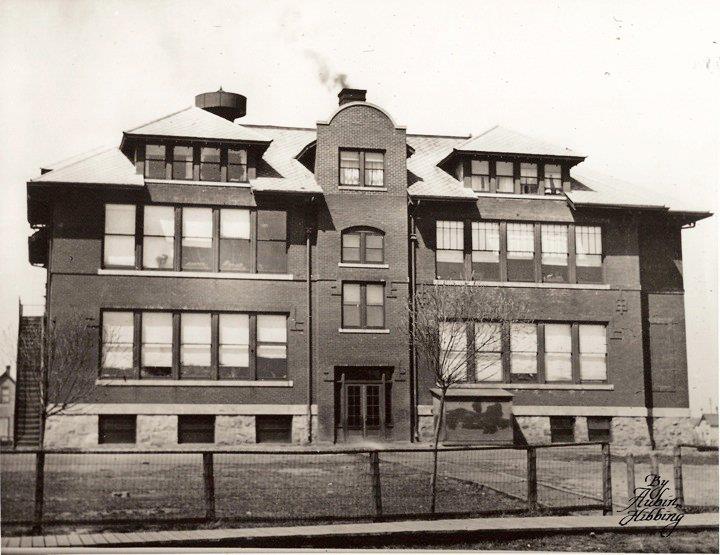
Alice School, 2300 2nd Avenue East, for grade one. It was torn down to become a parking lot, with part of the land used for a playground.
Grade
First 1947-1948 6
Second 1948-1949 7
Third 1949-1950 8
Fourth 1950-1951 9
Fifth 1951-1952 10
Sixth 1952-1953 11
Seventh 1953-1954 12
Eighth 1954-1955 13
Ninth 1955-1956 14
Tenth 1956-1957 15
Eleventh 1957-1958 16
Twelfth 1958-1959 17

Signing the Declaration of Independence / David Ericson 1922/23
One of the six large oil paintings in the Hibbing High School entrance. The commission from Hibbing High School for these six mural-sized canvases of American and local history paid him $9,000.00 in 1923, and Ericson promptly left for an extended residence in France.

An ox cart with pioneers / David Ericson 1922/23

Viewed from the stairs: Columbus landing, Signing the Declaration of Independence and An ox cart with pioneers.
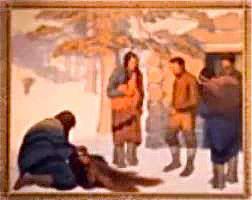
Fur trading / David Ericson 1922/23
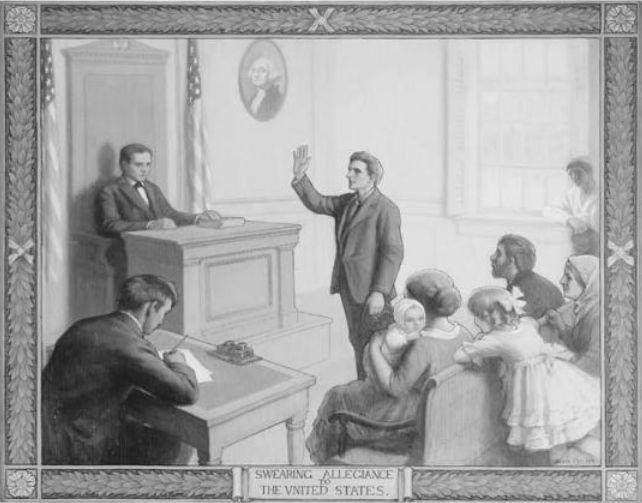
Swearing Allegiance to the United States / David Ericson 1922/23
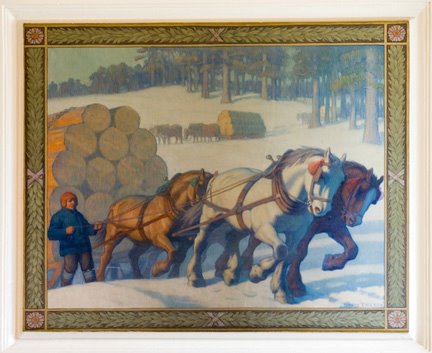
Lumbering in Minnesota / David Ericson 1922/23

Viewed from the stairs: Fur trading, Swearing Allegiance to the United States and Lumbering in Minnesota.
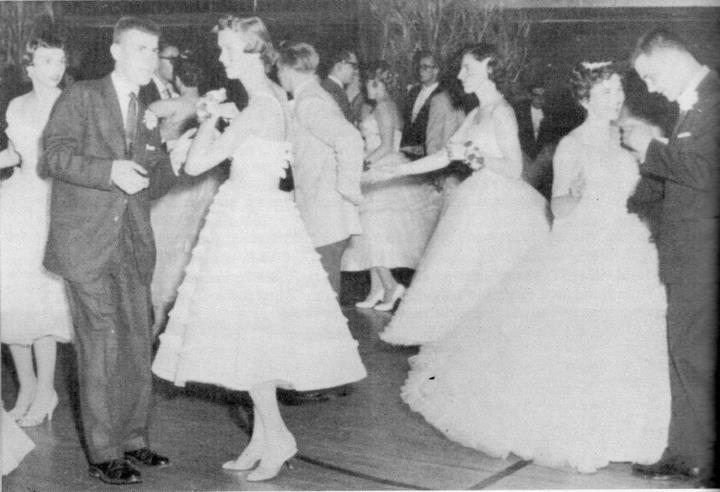
The Pogues at Hibbing High School?
Junior Prom, 1958 (1959 Hematite photograph)
Held in the boys' gymnasium, 2 May 1958, from 9-12 p.m., the Junior Prom features conventional dance music by George Pogue's orchestra. The theme is "Bewitched, Bothered, and Bewildered."
Echo's sister comes over from her house next door to take pictures of Echo in a pale-blue, floor-length gown, accented by a corsage from Bob.
Bewitched.
Before the Prom, Bob insists he and Echo drive thirty miles to Virginia to see Jim Dandy.
Bothered.
Still, when they arrive (a little late), there is possibility in the glittering three-dimensional stars beneath a ceiling of blue, silver, and gold streamers. Outlining the dance floor are white trees draped with pink angel hair and surrounded by silver stars.
Bewildered.
But who could feel more out of place among so much Hibbing High School pride? Bob is as poor a leader as she is a follower. He takes "little teeny steps" and keeps saying, "What's the matter, can't you dance?"
Can't you dance?
Finally, he says, "Let's get out of here." A post-Prom supper dance is held at the Moose Lodge club rooms for the righteous; but Bob and Echo fall asleep in the car. Later, they find out the pictures her sister took do not turn out.
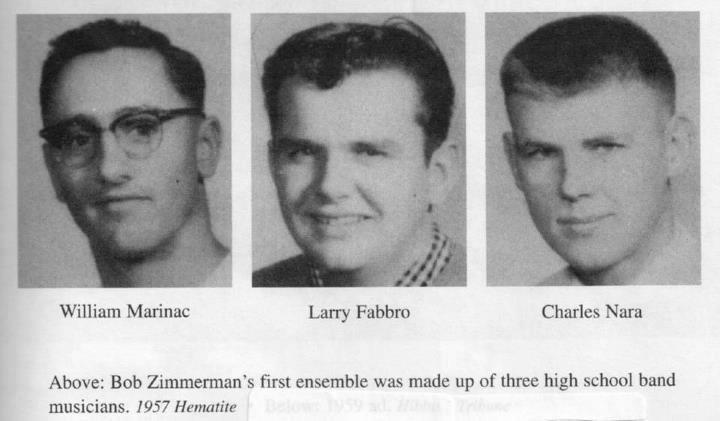
The Shadow Blasters (late 1956 – early 1957):
Bob Zimmerman – vocals, piano
Bill Marinac – bass
Larry Fabbro – guitar
Chuck Nara – drums
The Jacket Jamboree Talent Festival – Junior High Student Council variety show (April 5, 1957), auditorium of Hibbing High School.
There were two shows, one for the student body during school hours, a sort of dress rehearsal, and later an evening show for parents...
The student council variety show April 5 announces that a local jazz "quintet," including Larry Fabbro, will perform. "Surprise numbers are also on the program, and there are rumors concerning a sensational novelty number which at the moment is top secret," announces Hi-Times. Everything Bob does is on the Q.T. until he does it. The boys slick their hair back and strap on sunglasses, sport coats and whatever pink shirt is available on a Broadway-styled stage … the four take their place before an audience of almost 2,000. From the audience's left, the band consists of Zimmerman on piano, Marinac on bass, Fabbro on guitar and Nara on drum and cymbal.
When the act jolts into being, tittering follows like a reverberation. Little Bobby Zimmerman jumping around. Shouting, banging on the piano keys. At the grand piano, belting out two Little Richard tunes: "Jenny Jenny" Whoo! Jenny Jenny Whoo! Jenny Jenny and "True Fine Mama" Whoo! Honey honey honey honey honey honey honey. The only amplified instrument is Fabbro's guitar. It's all so loud and disorganized, he cannot follow the piano playing. The band forges ahead anyway. Most of the volume is provided by Bob's piano pounding.
Among the audience are those who don't know whether to applaud or boo, whether to cover their eyes or their ears. Well, the boy has chutzpah, Marinac's bass teacher tells him. Whatever that means. Certainly, performing stirs Bobby's soul. To Fabbro, an involved student used to the stage, the event is little more than a lot of fun, something no one else is doing, something to make you feel hep.
Chuck Nara: “We kind of did it originally as a lark and then it started getting serious. It got serious because of Bob. He was turned on by Little Richard and doing this singing. No other groups on the Range were doing anything like it.”
Fabbro remembers "some very shocked people" at both performances, even the early one, attended only by the kids. Fabbro remembers it this way: "They thought it was a put on. They never heard anything like this before. In fact, even for us playing behind Bob the performance was a lot of noise more than anything else. It was hard for us to even understand the piano playing, it was so loud."
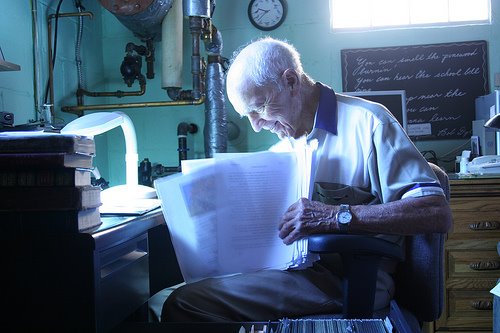
Boniface Joseph Rolfzen (1923-29)
"Poetry is musical thought."
B.J. Rolfzen was Bob Zimmerman's high school English teacher for two years.
B.J. describes Bob in his class. “Robert was shy. I can see him coming through the door of classroom 204. I remember it distinctly because he was always doing the same thing. He always came in to class alone. He always sat in the same chair, three seats from the door in the first row. Right under my nose for two years.”
“I have expectations for all my students, because they all worked hard. It is impossible to predict what will happen to people. Human nature is so unpredictable and that is the pleasure of being human because you never know what is going to happen to you. You might become a Bob Dylan. You might become a Shakespeare. You might become a B.J. Rolfzen.”
http://is.gd/KumpVv
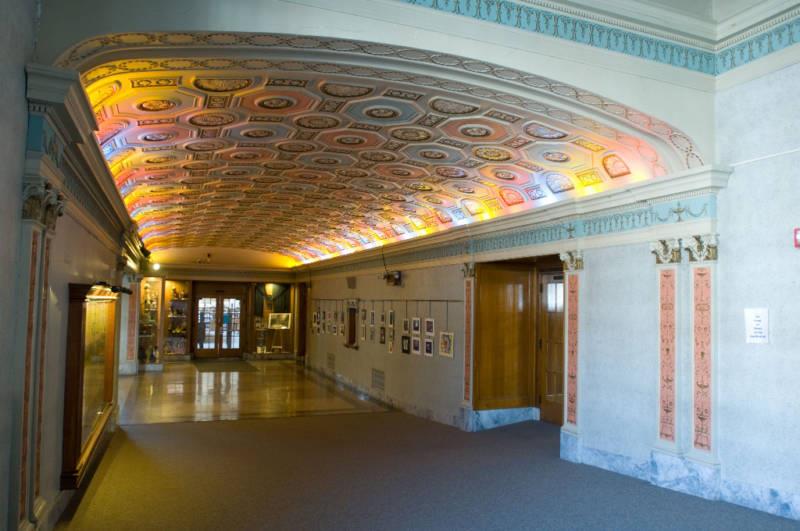
Hibbing High School corridor ceiling, lit.
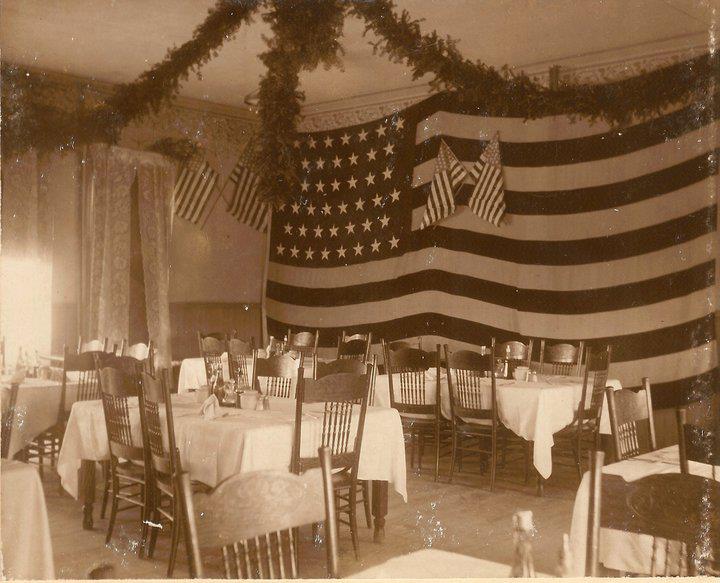
The Finnish Workers’ Hall, Lincoln Street, Hibbing, MN 55746.
This socialist club for stage plays, dances and other social events would have been familiar, but was this use of the American flag in anyone's mind's eye when the backdrop for Paris 1966 was planned?
http://sethink.files.wordpress.com/2011/10/dylans-flag.jpg
http://theband.hiof.no/band_pictures/boot_a_week_in_the_life.jpg
"Dylan’s 1966 performance in Paris at which he draped a U.S flag on the stage for the second half of the concert eliciting ”U.S. go home!” jeers from the French audience: … the curtains part, and there they see to their horror, attached to the backdrop, the emblem of everything they are coming to hate, the emblem of napalm and Coca-Cola and white racism and colonialism and imagination’s death. It is a huge fifty-star American flag. And Bob Dylan, the emblem of American rebellion and imagination’s rebirth, has hoisted it aloft." -- Wilentz, Sean. Bob Dylan in America. New York: Doubleday, 2010, 9780385529884, page 261.
The Finnish Socialist Federation was founded in Hibbing. A number of Hibbing Finns received a Marxist education at the Work Peoples' College in Duluth. So while many who are interested in Bob Dylan's work have acknowledged the Jewish intellectuals in Hibbing discussing socialism as world events unfolded, our hero also will have known many Finnish socialist radicals and their children in his youth. The strike of 1907, co-operative stores and boarding houses (providing competition to company stores and businesses) with an officially Communist purchasing organisation until 1930, the moving of the town, the German concentration camps, many topics over time in a politically lively atmosphere...
In its early years, the co-operative movement was unabashedly Communist, as a glance at the goods lining the shelves showed: They had the red star, the blue star, and the yellow star and all of them had a sickle and hammer. The Central Cooperative Exchange truck had a big sickle and hammer on the side of the truck. This was when the co-op movement was most successful. It created unity. It wasn't only to get a can of beans.
It may be surprising to think now but there was more prejudice against Finns in Hibbing than there was against Jews... The derogatory term for a Finn was a "China Swede" and Finns were considered by racists to be Asians related to Mongols. Racists made a case for Finns to be excluded under the Asian Exclusion Act! (Public Law 68-139, 43 Statute at Large 153, enacted May 26, 1924.) And bear in mind Americans enjoyed lynching Finns every bit as much as lynching African Americans, the Finns just never made it onto the postcards... Olli Kinkonnen springs to mind. He was a pacifist opposed to war and killing, not a wise thing to be in America then or now.